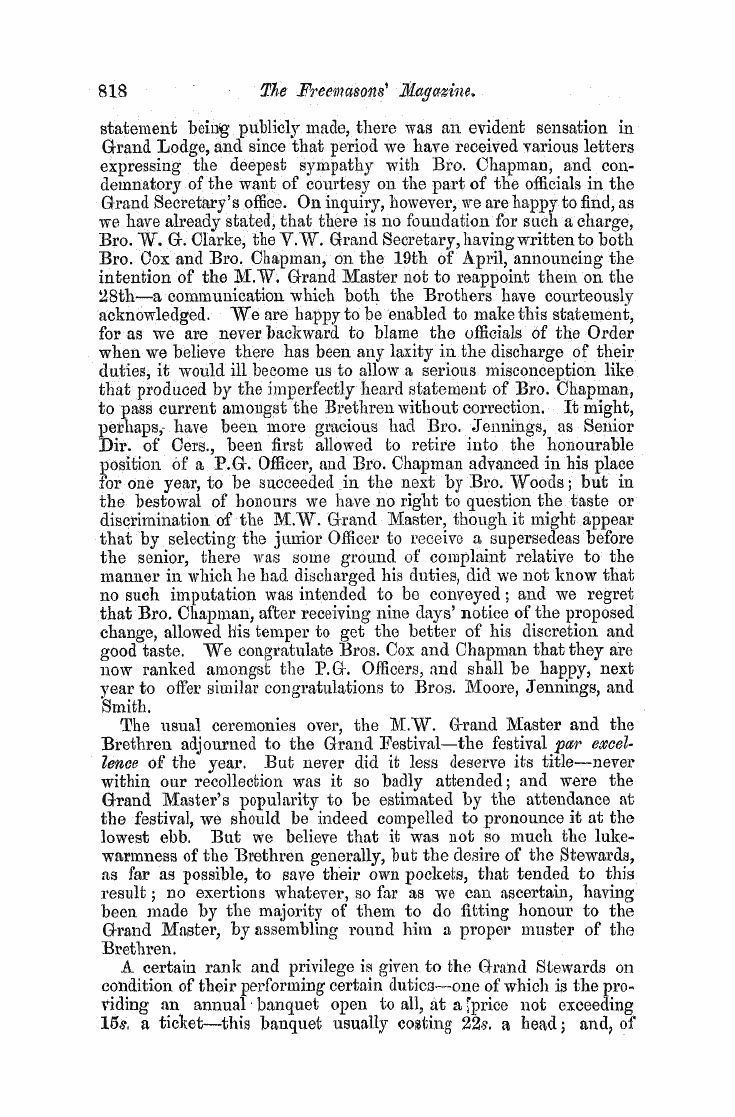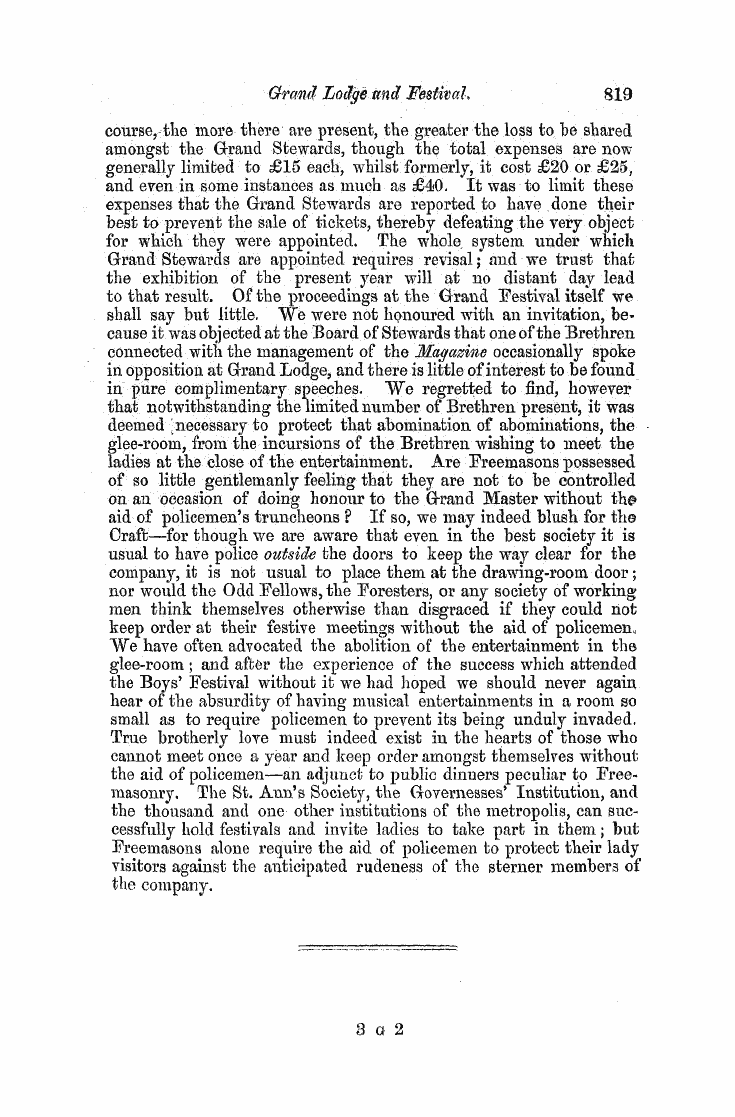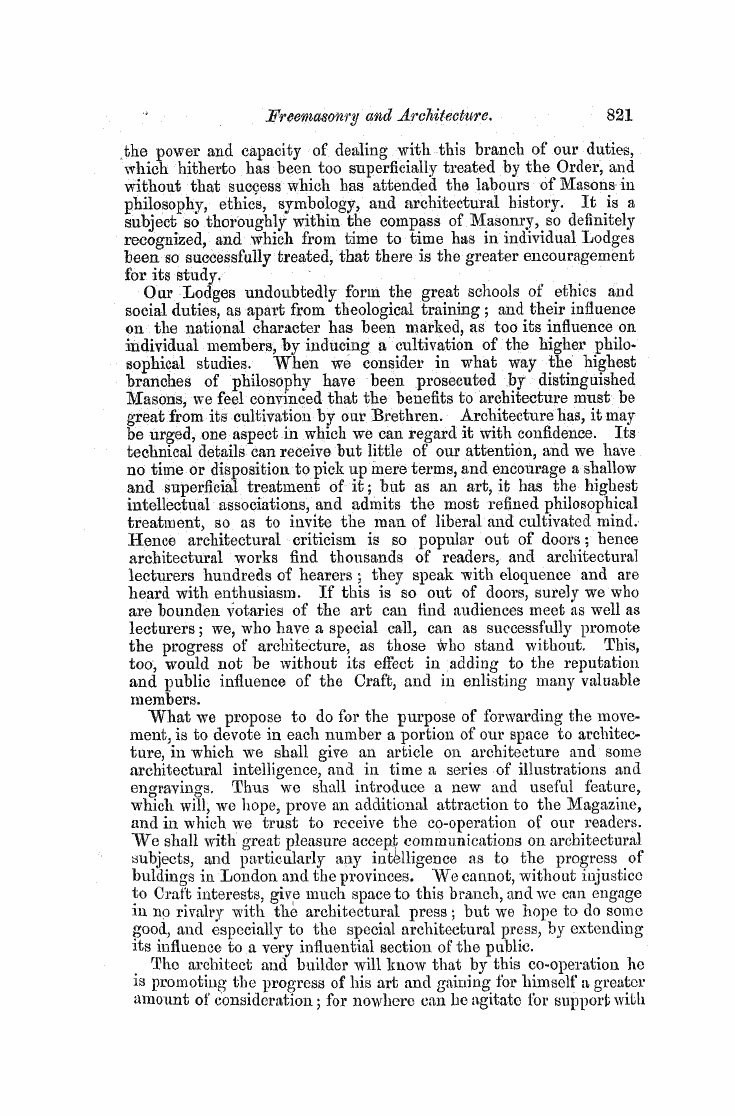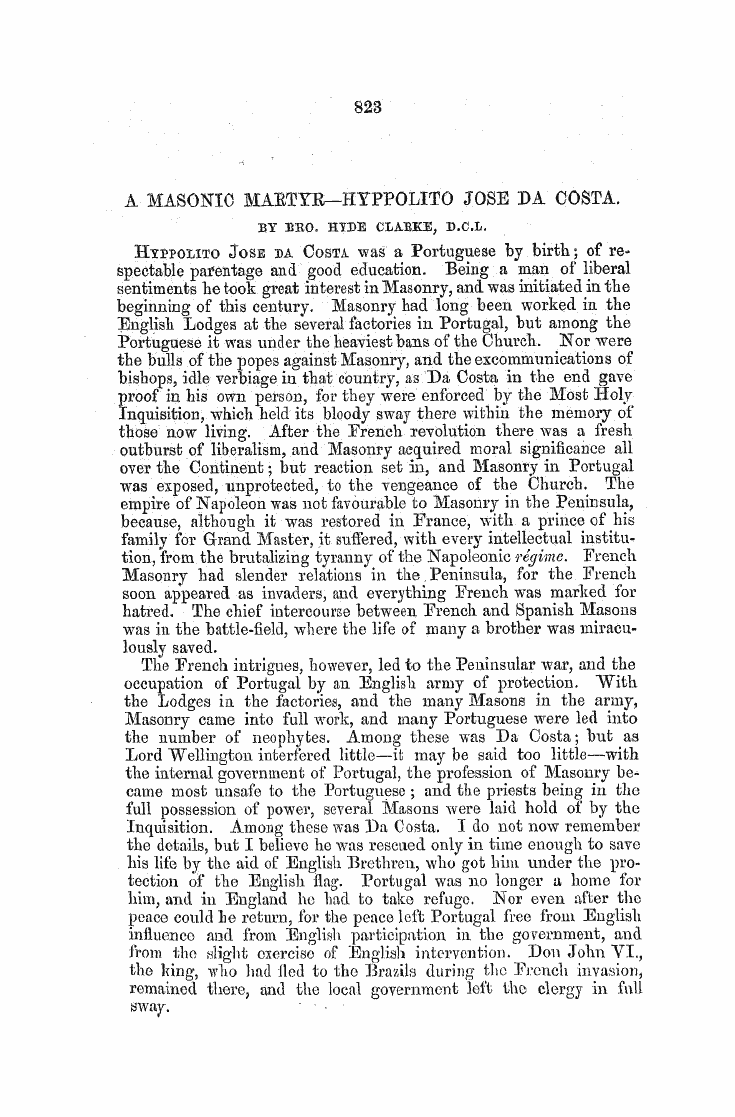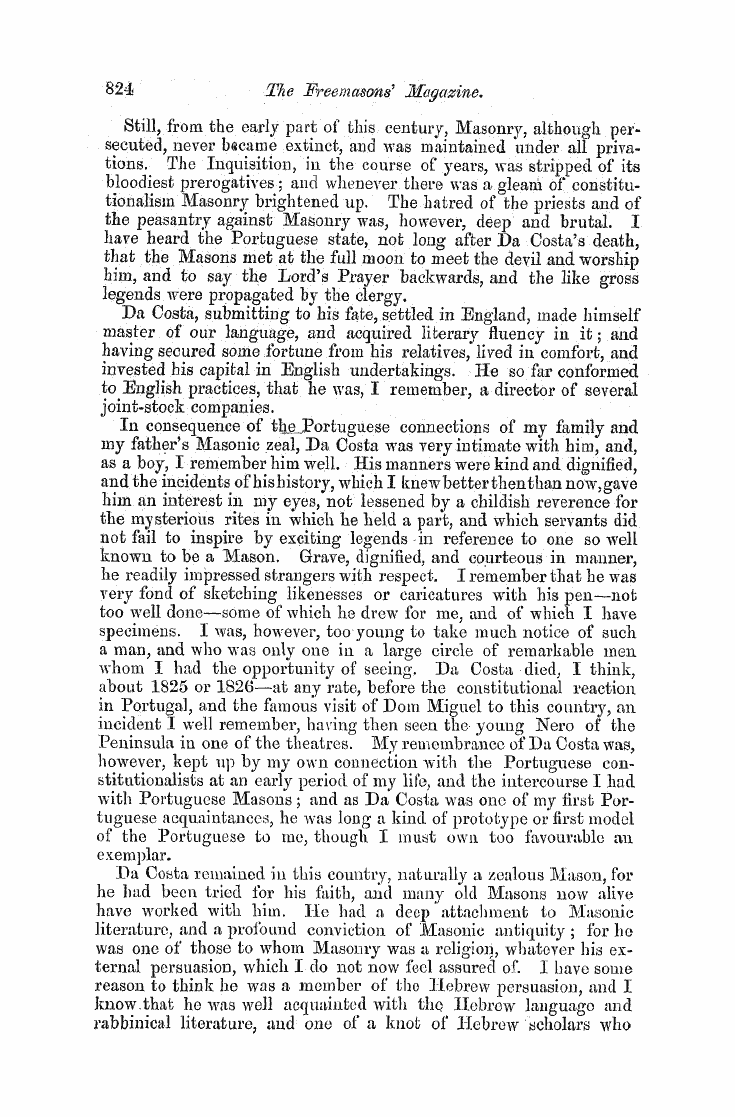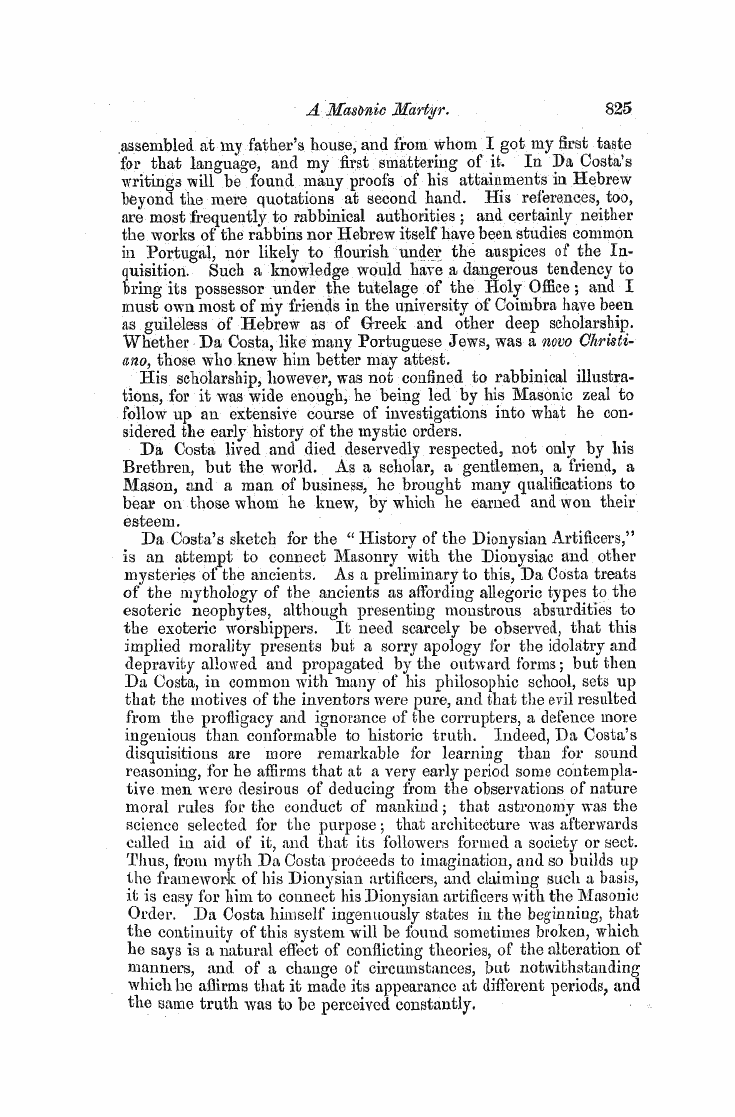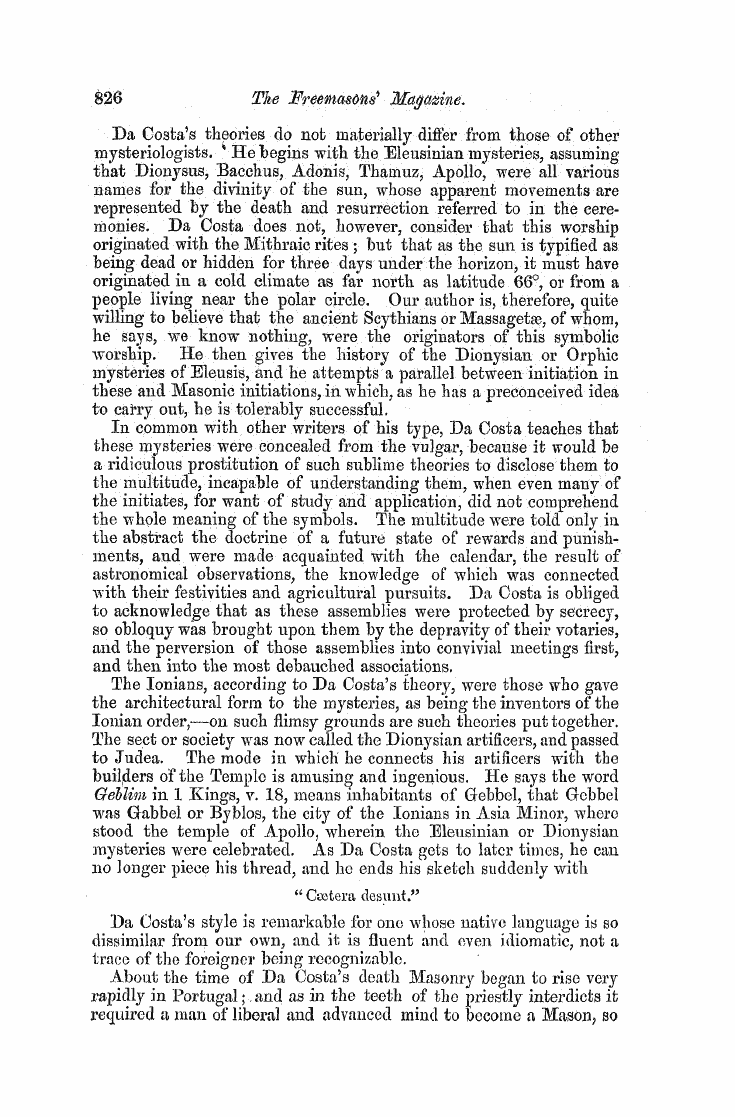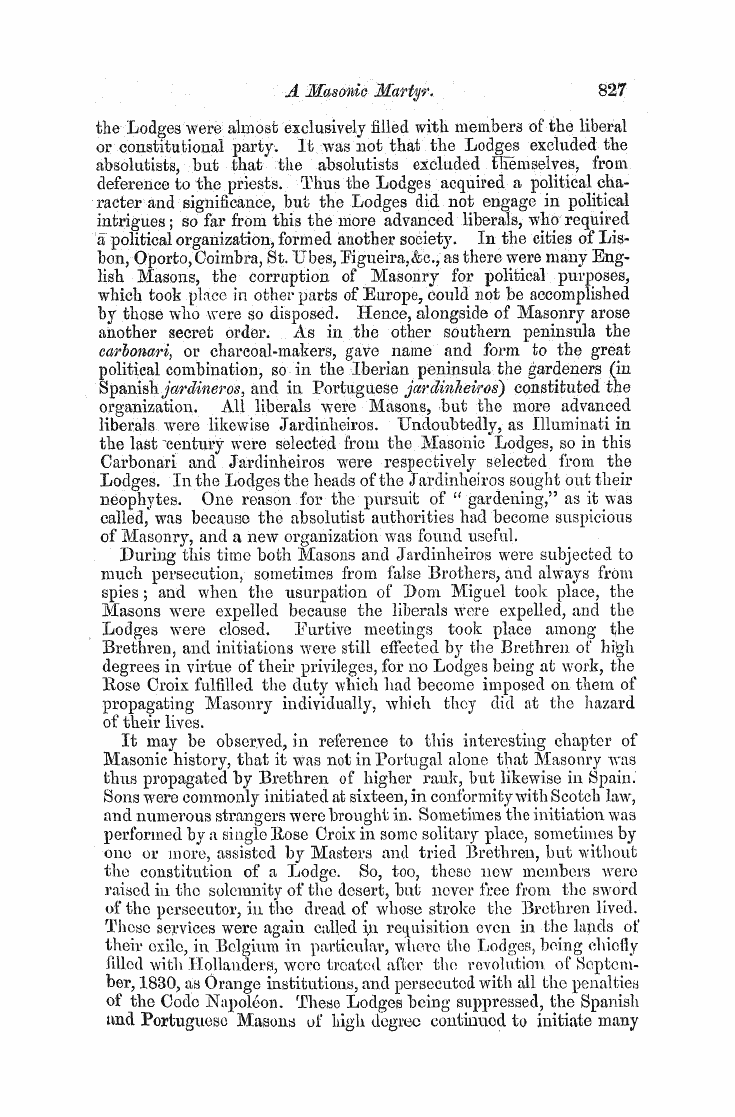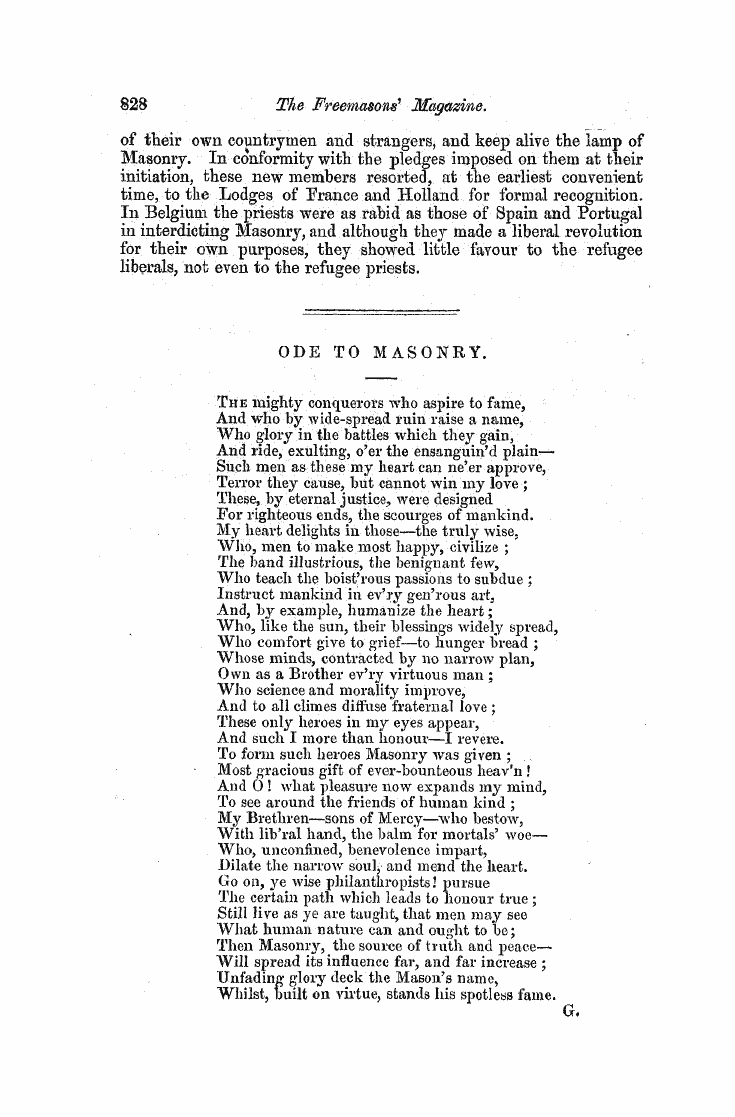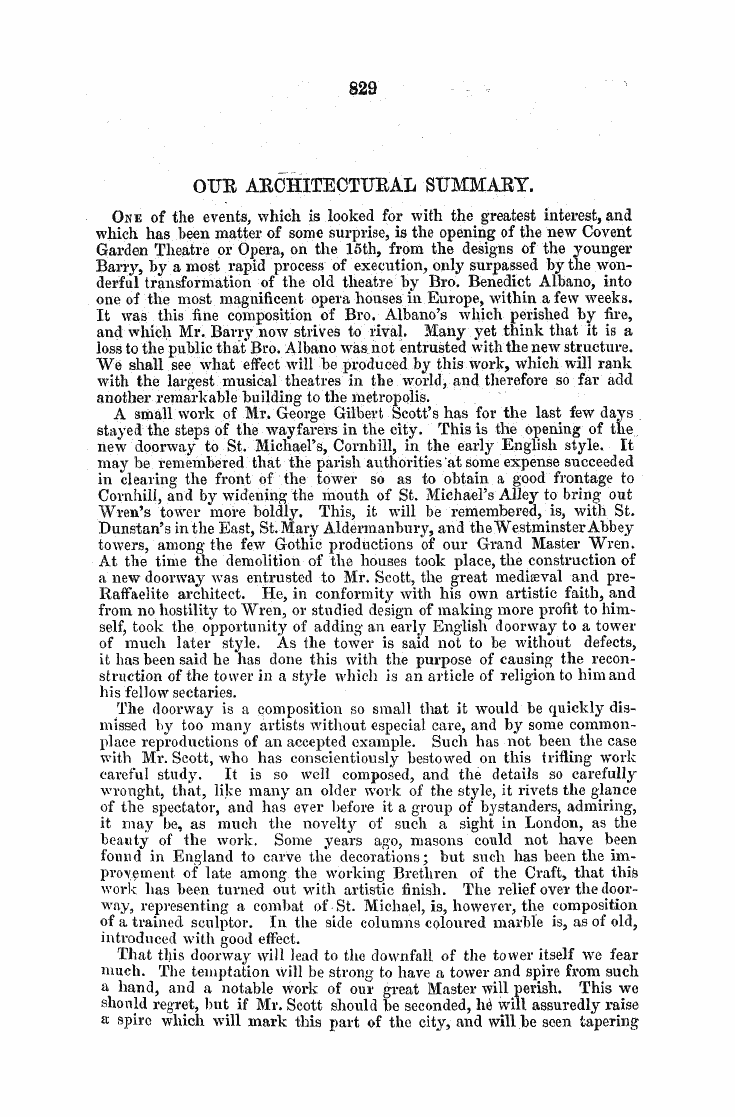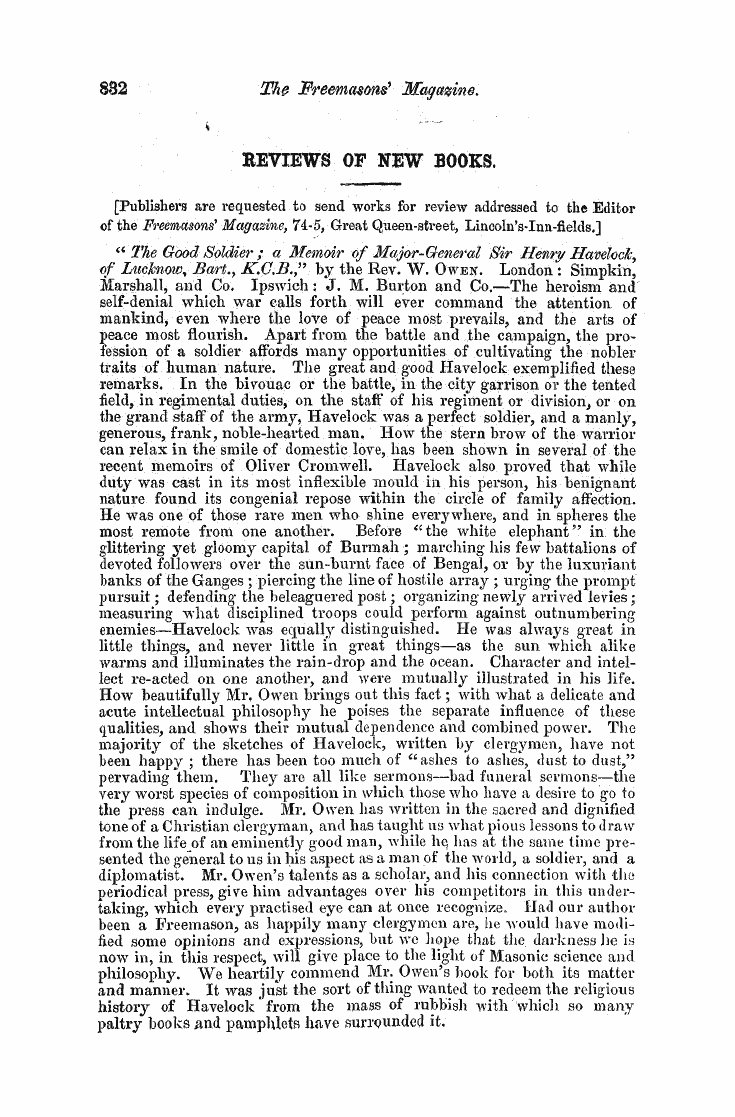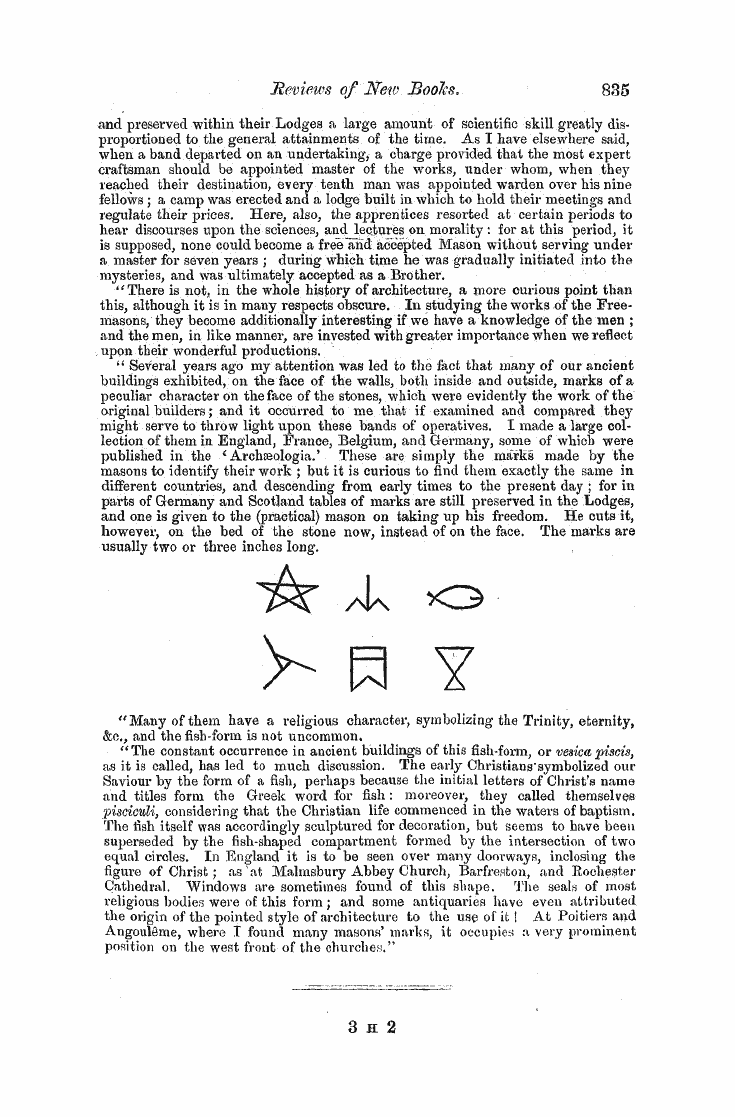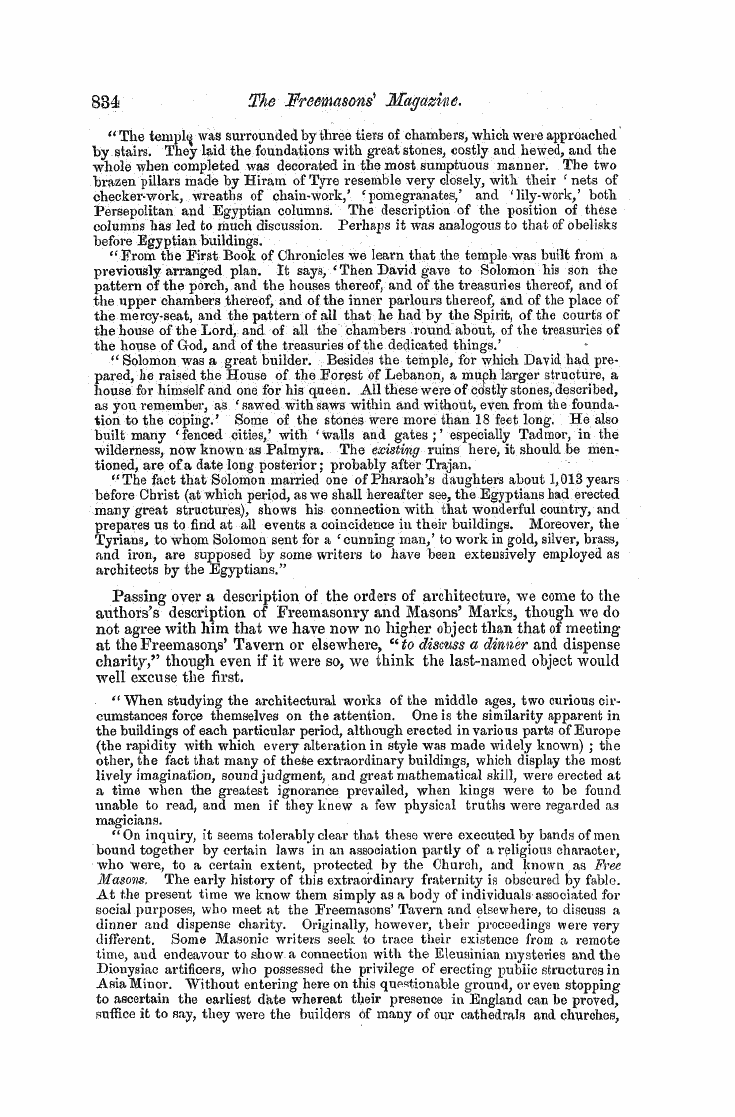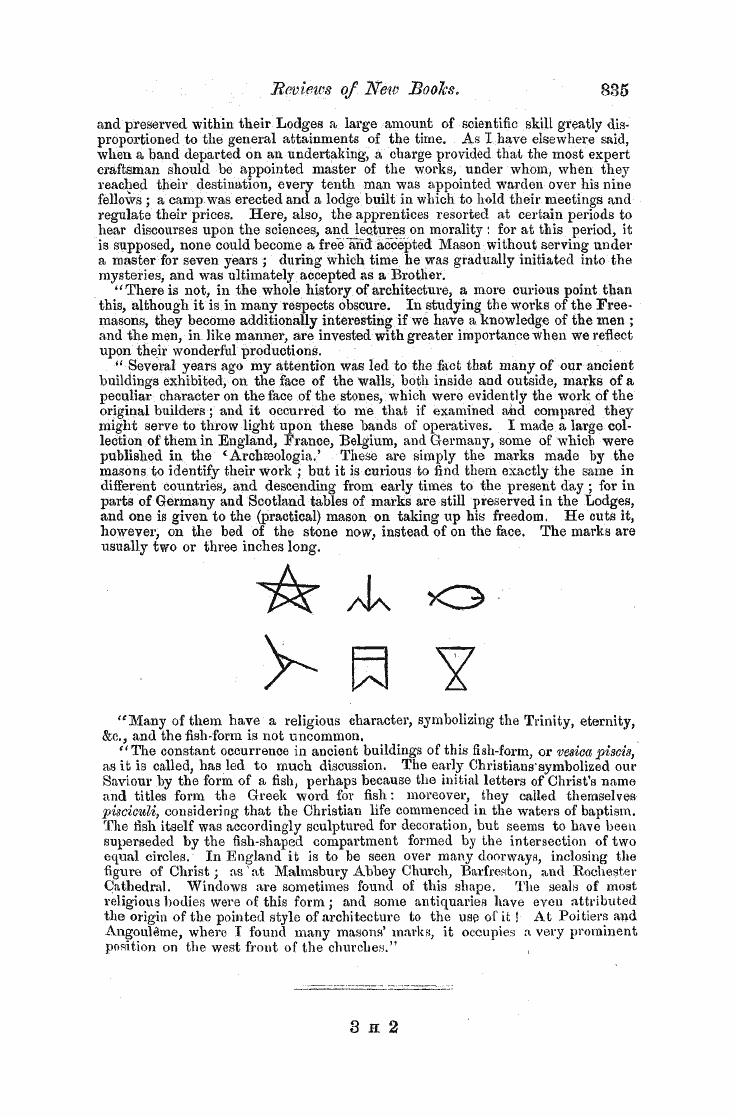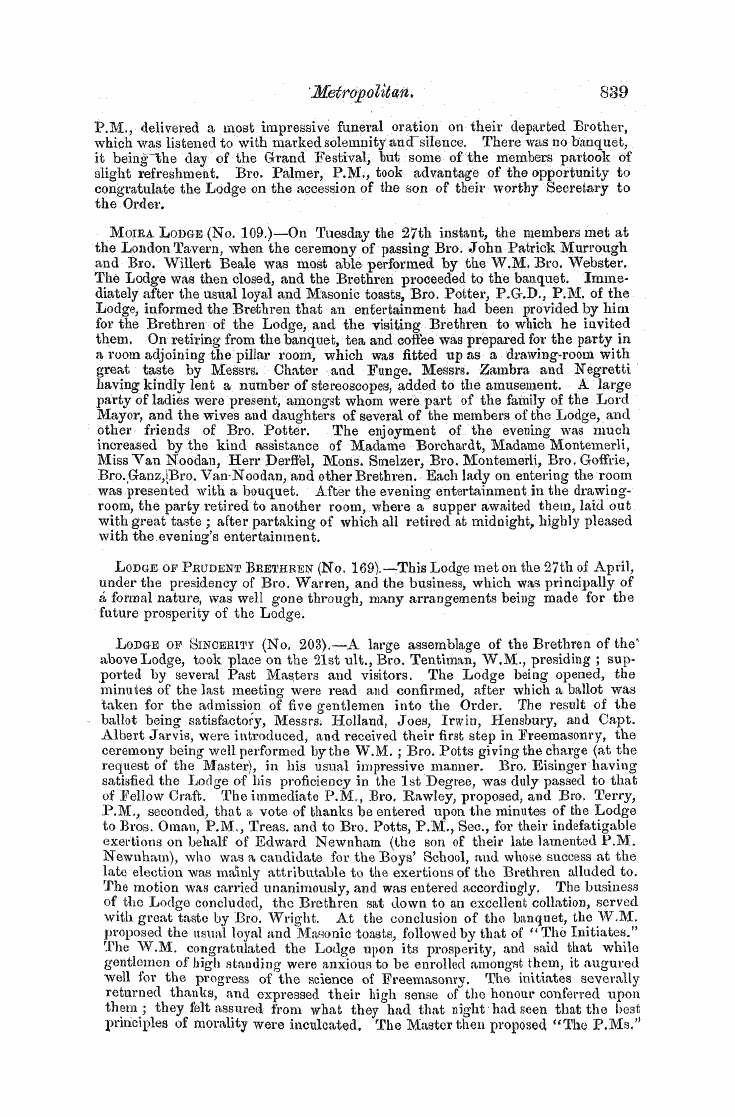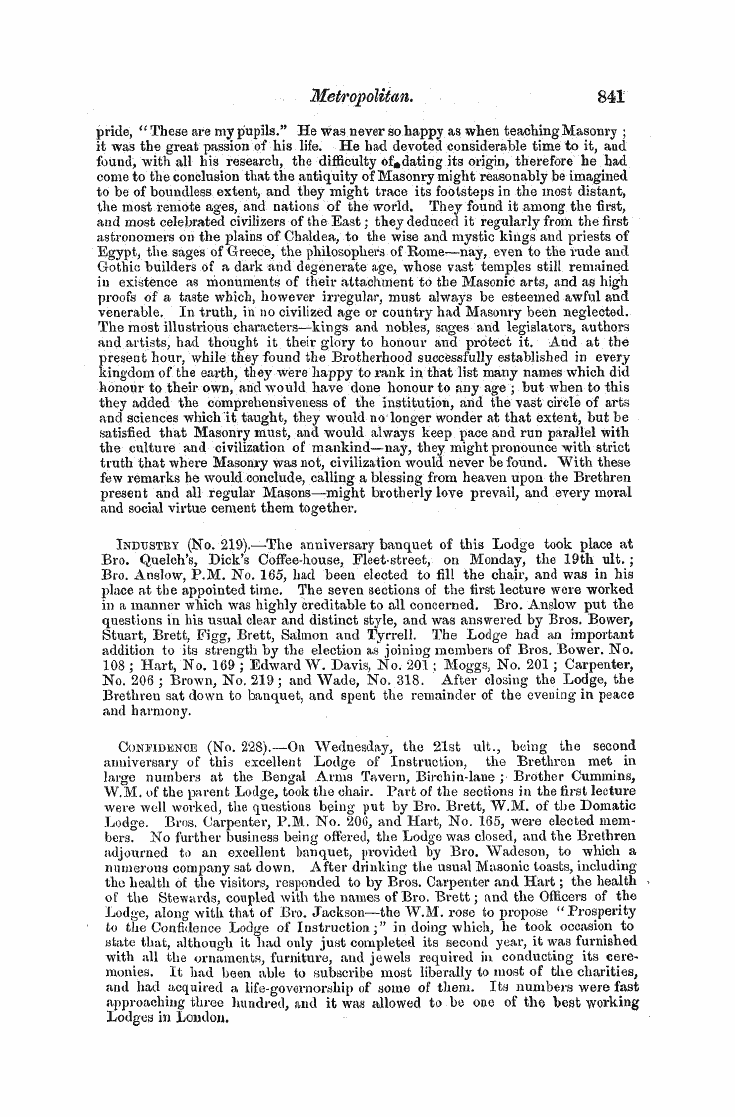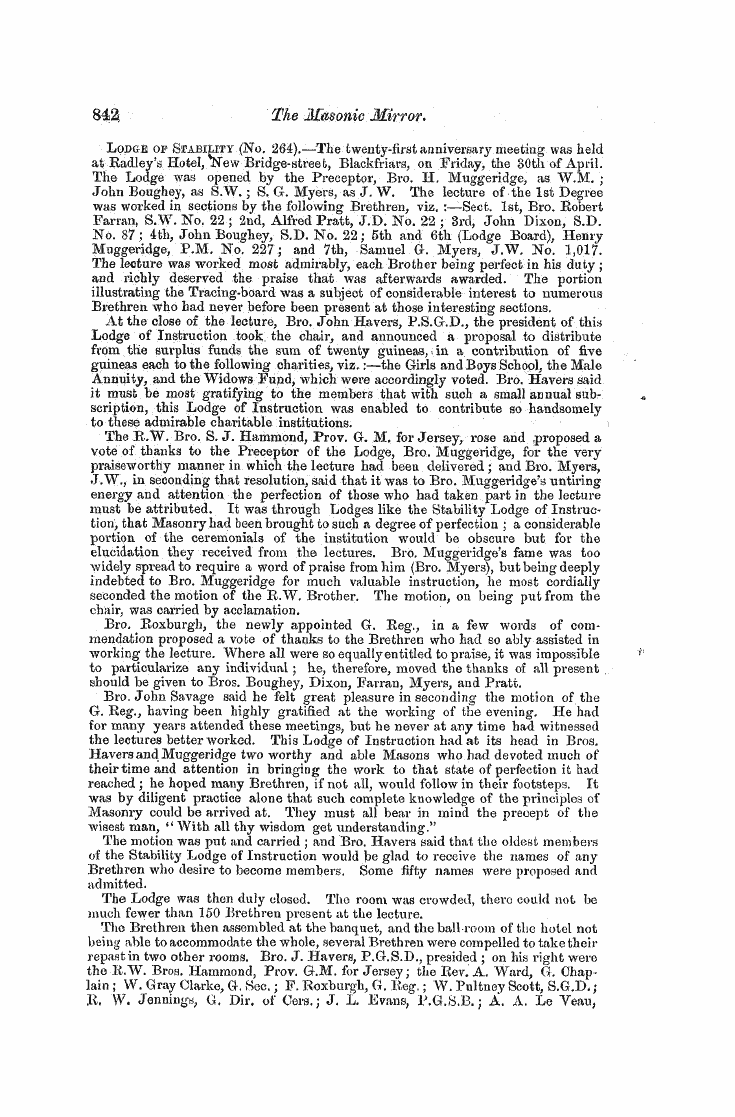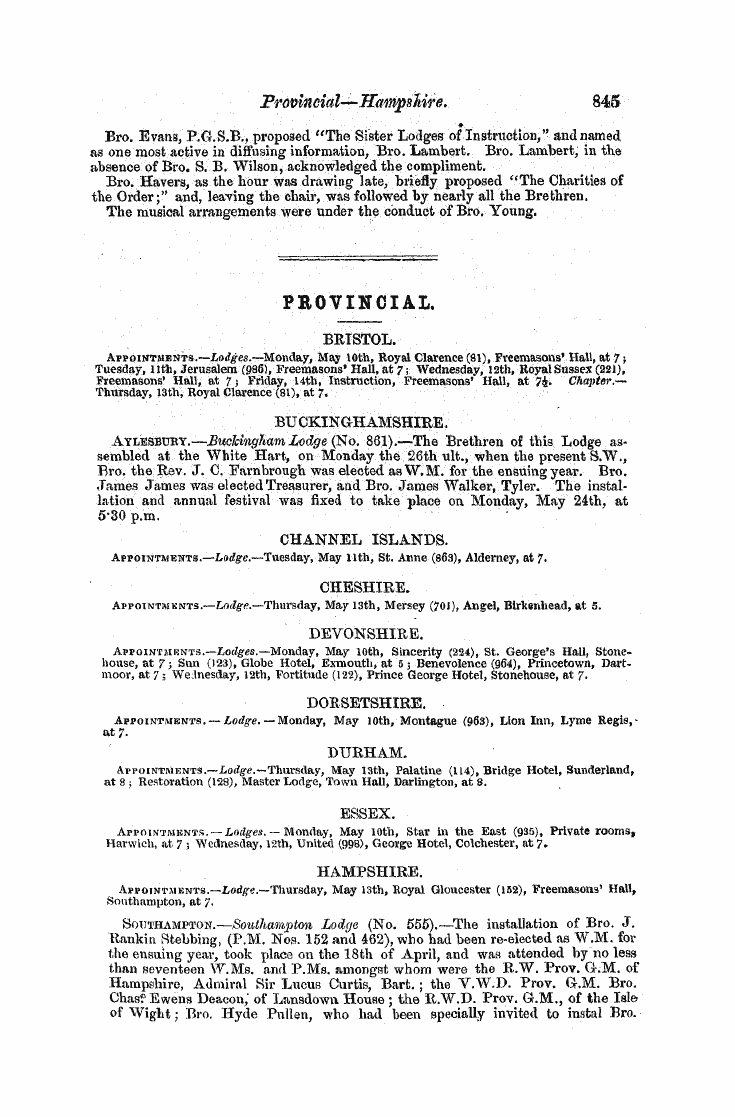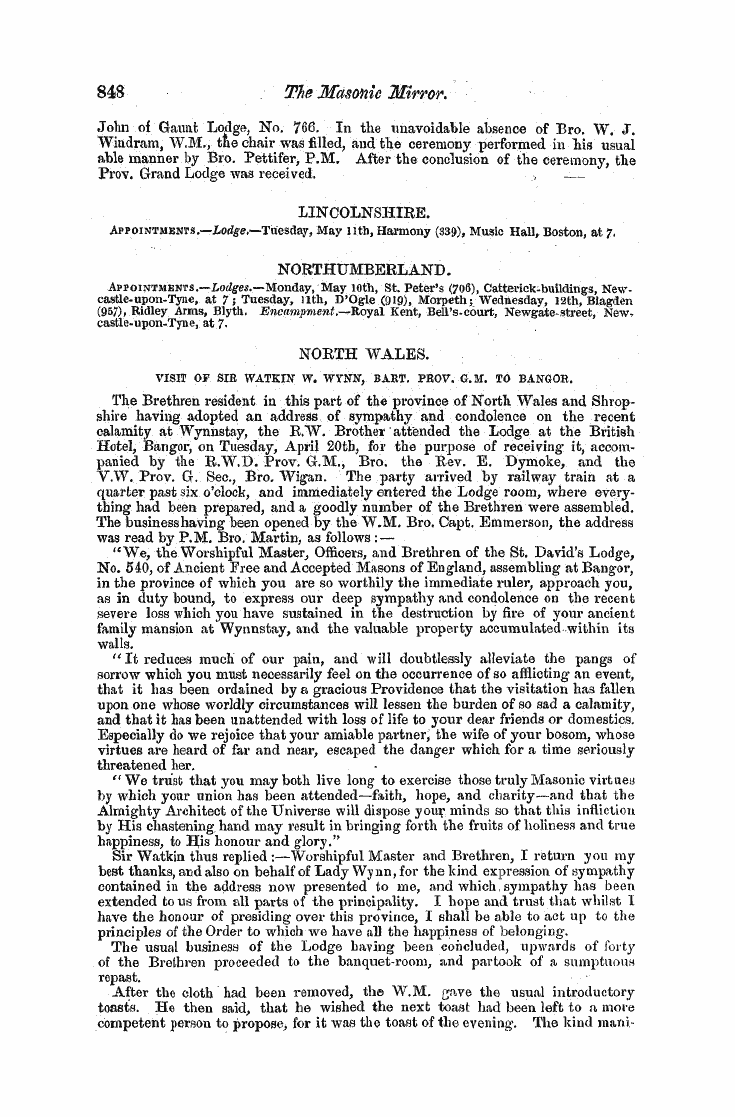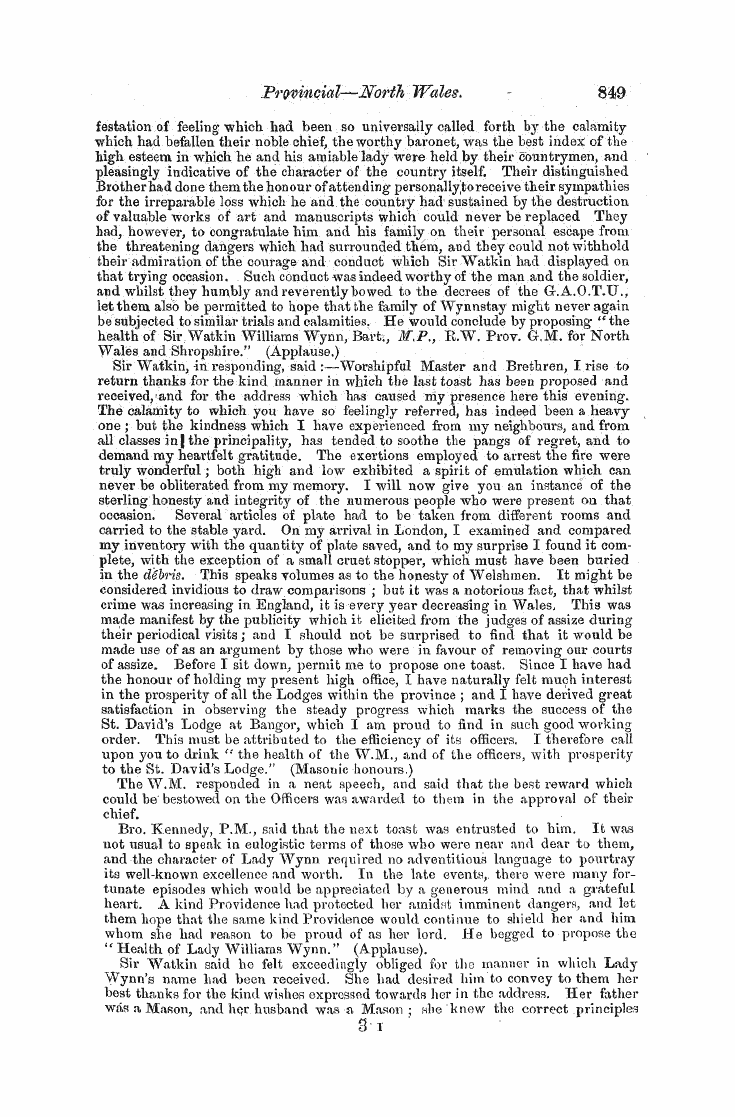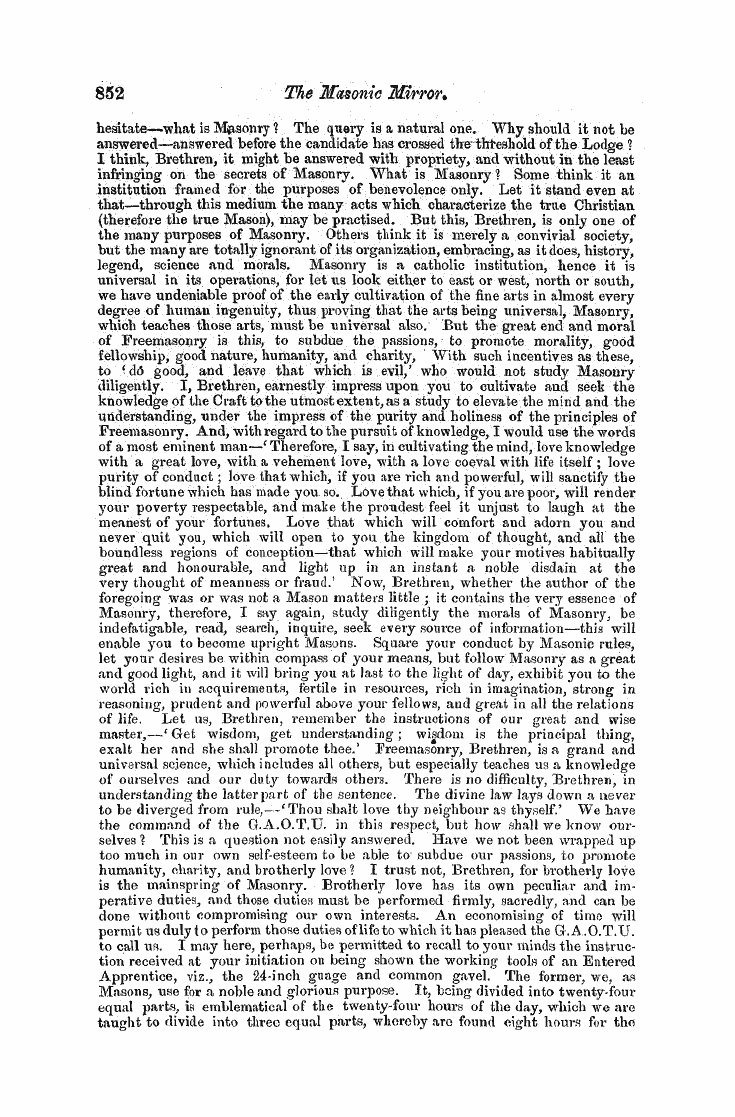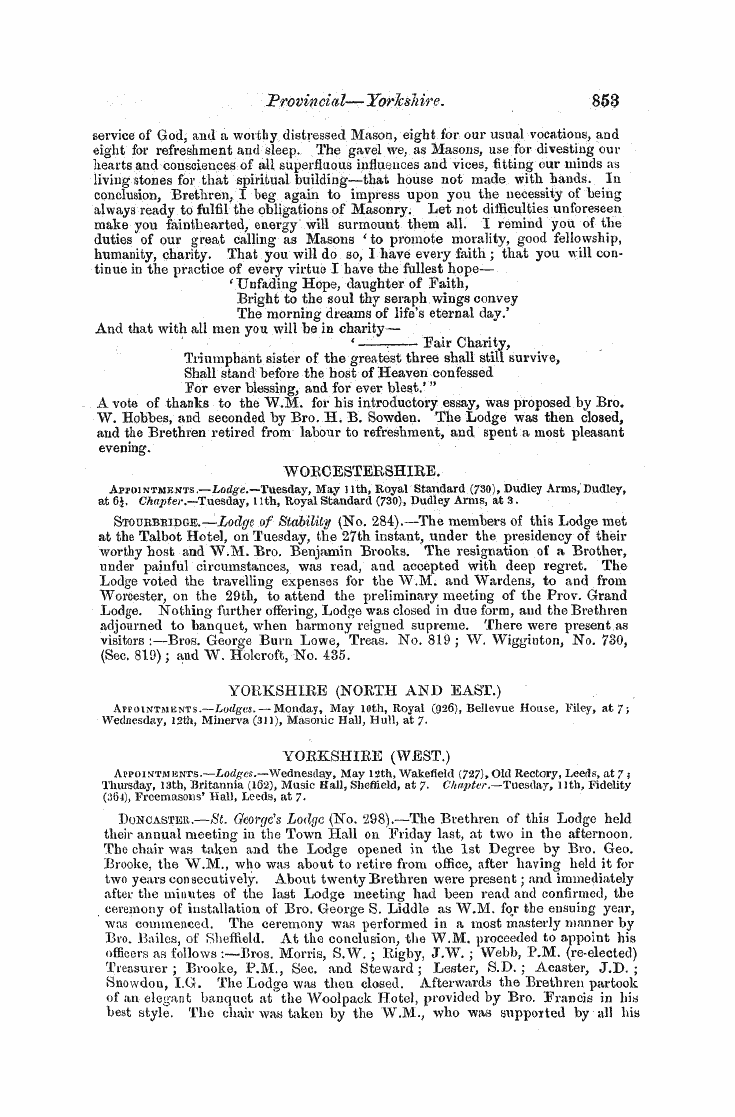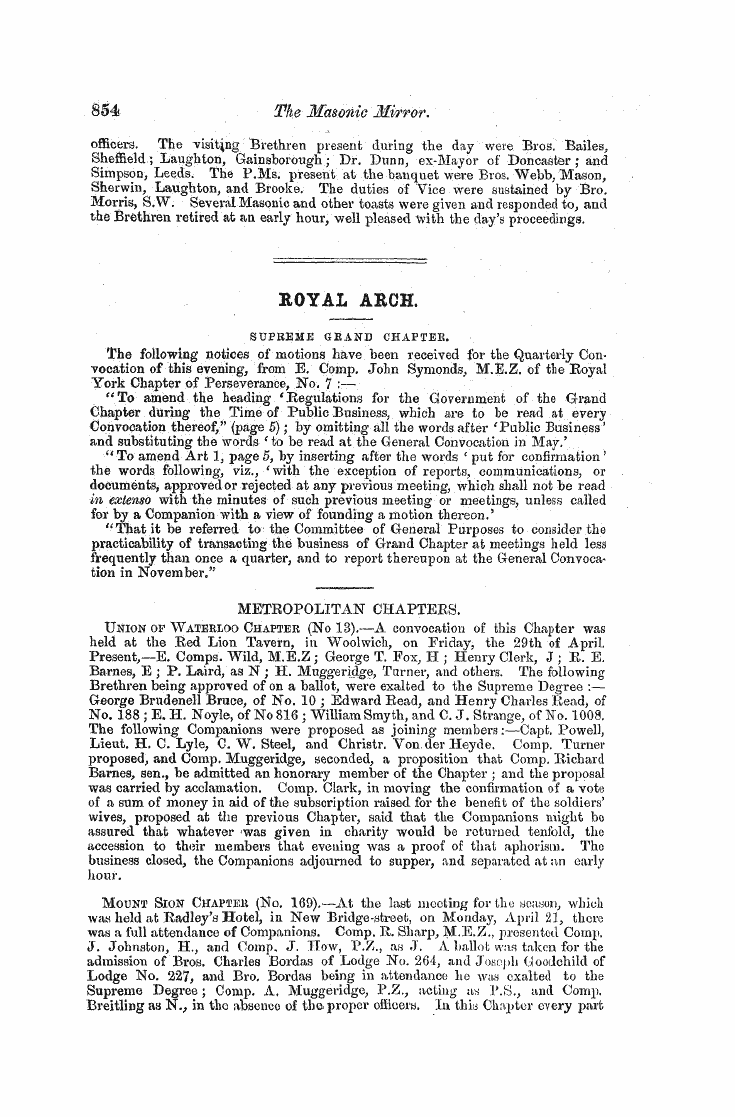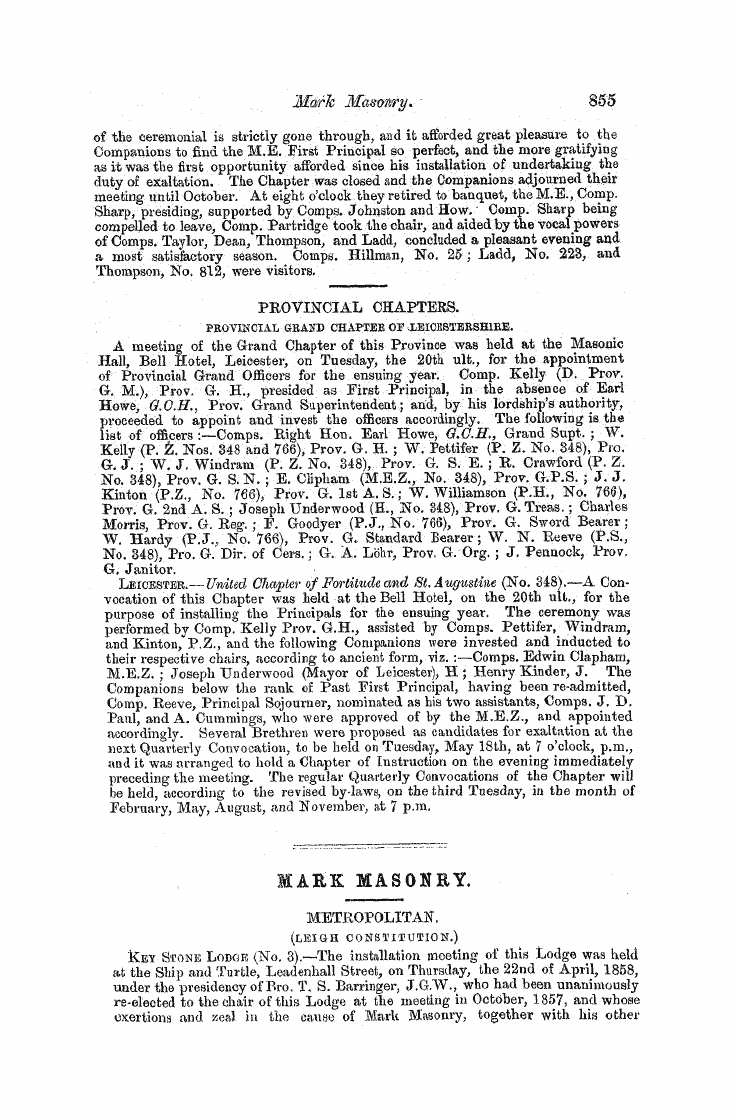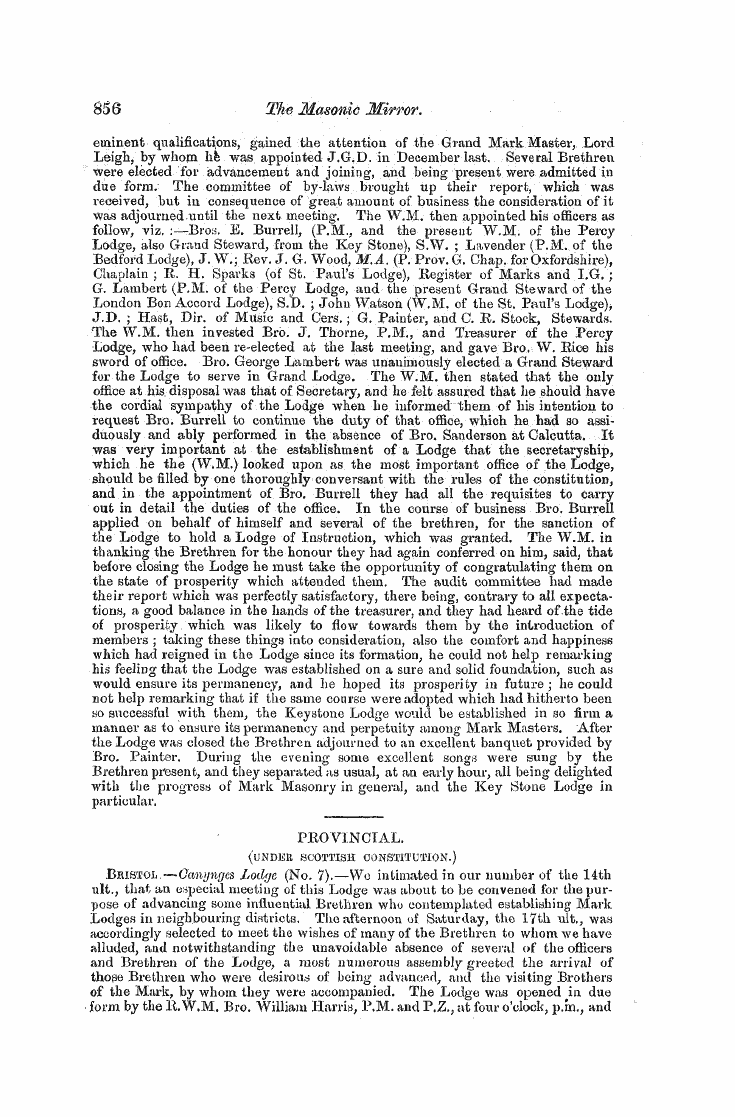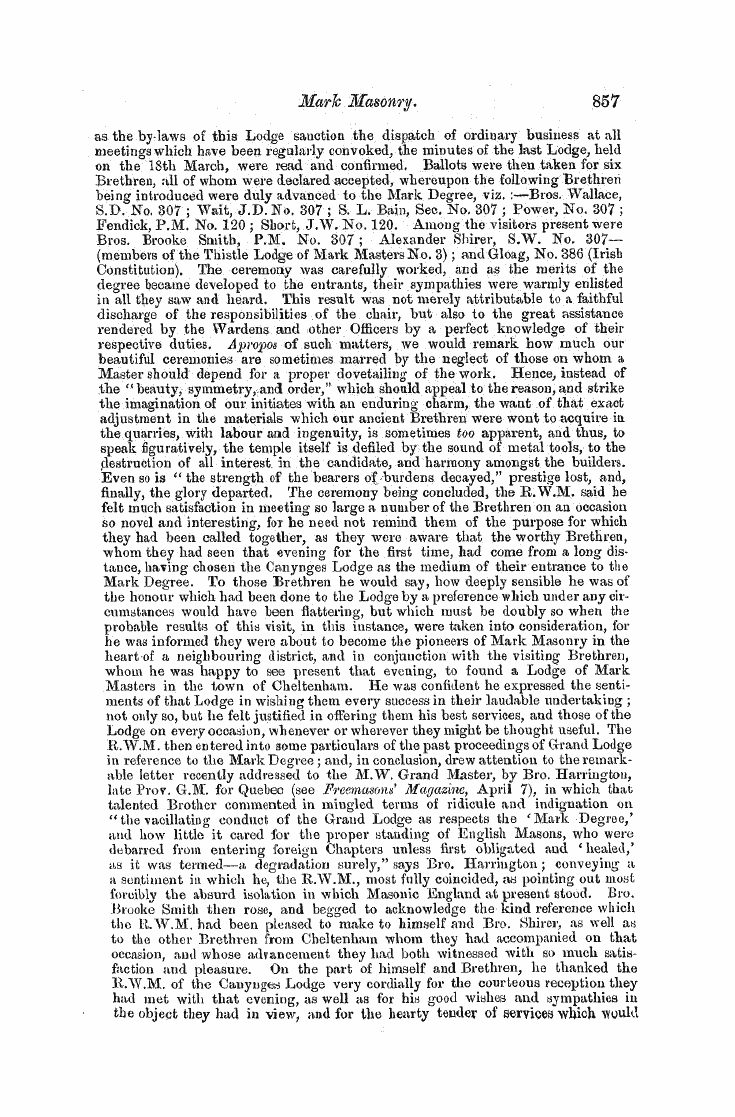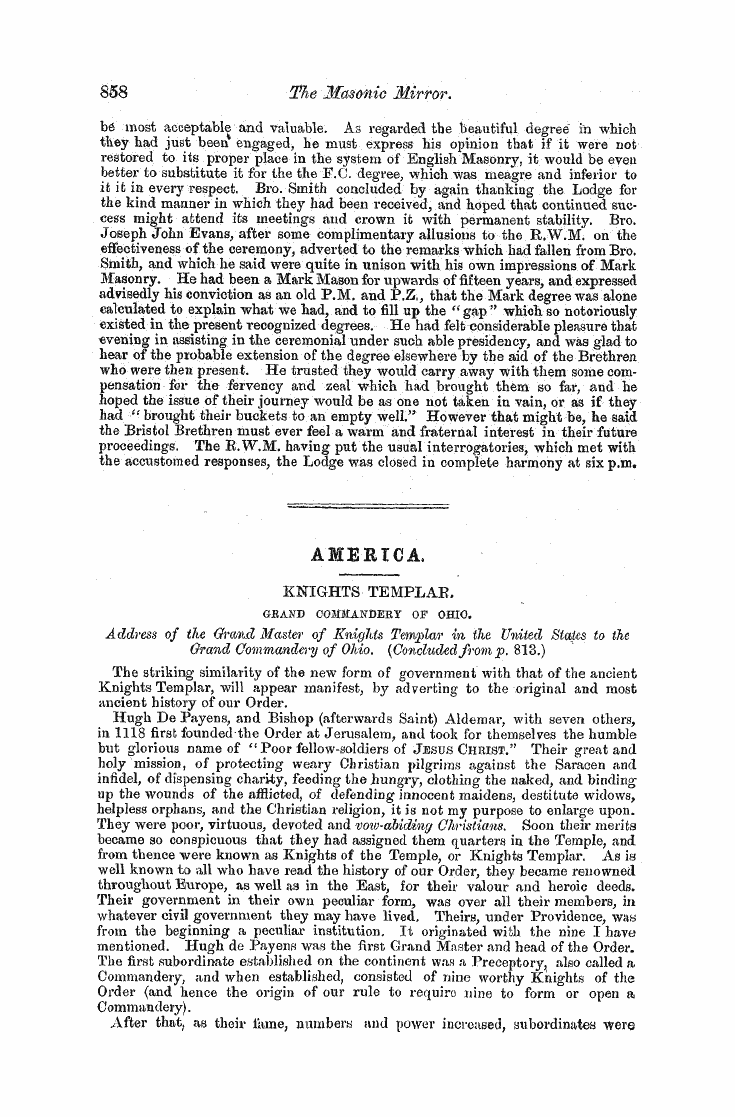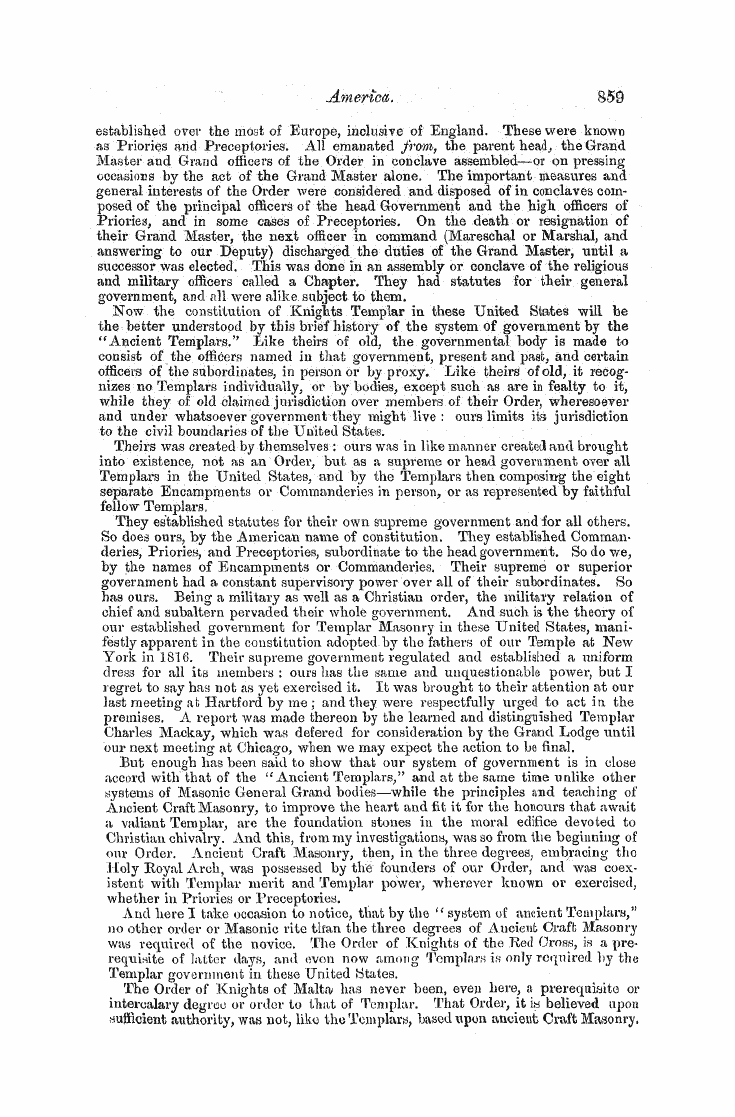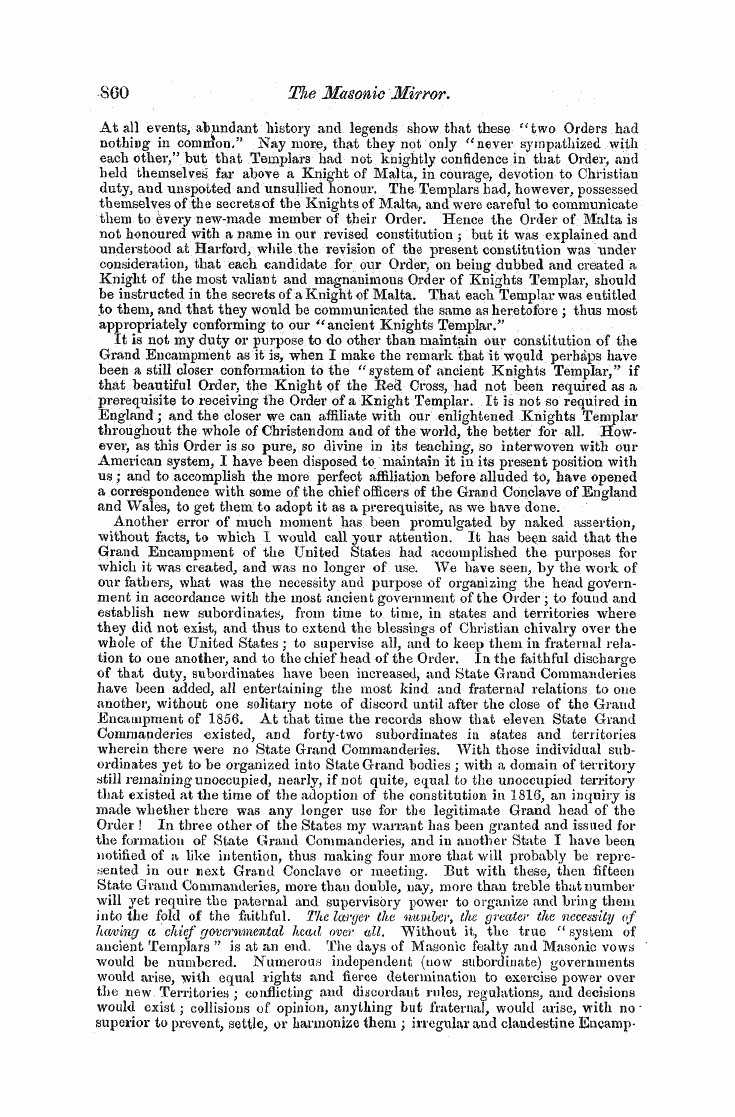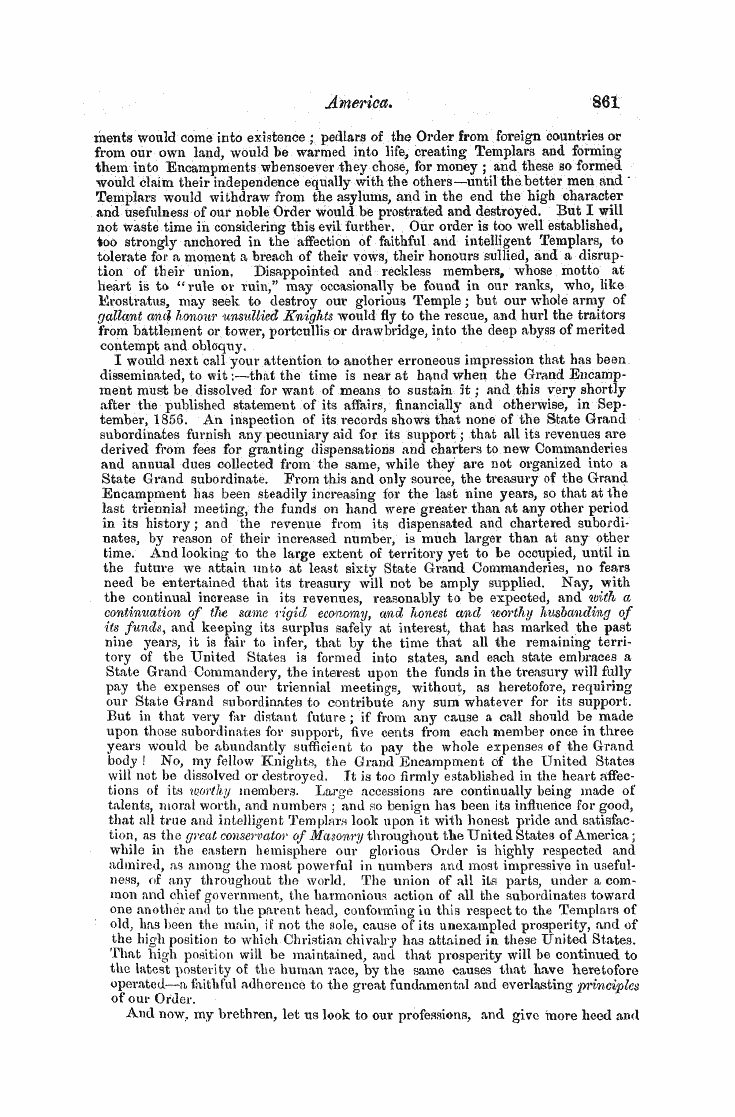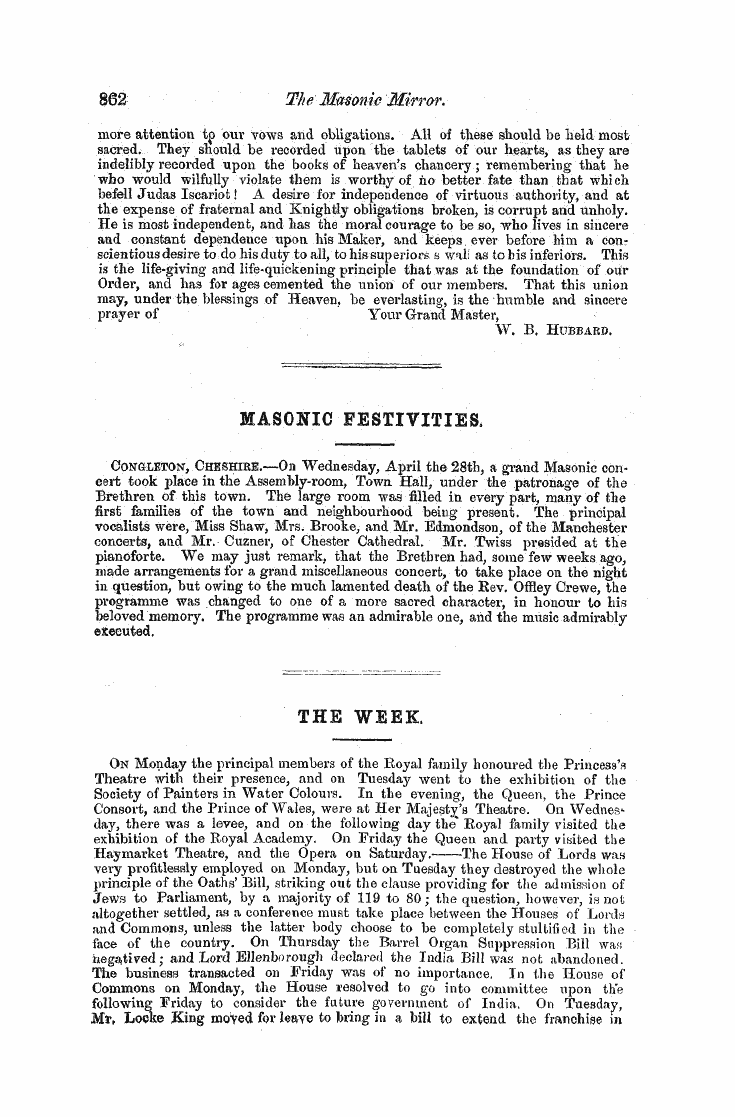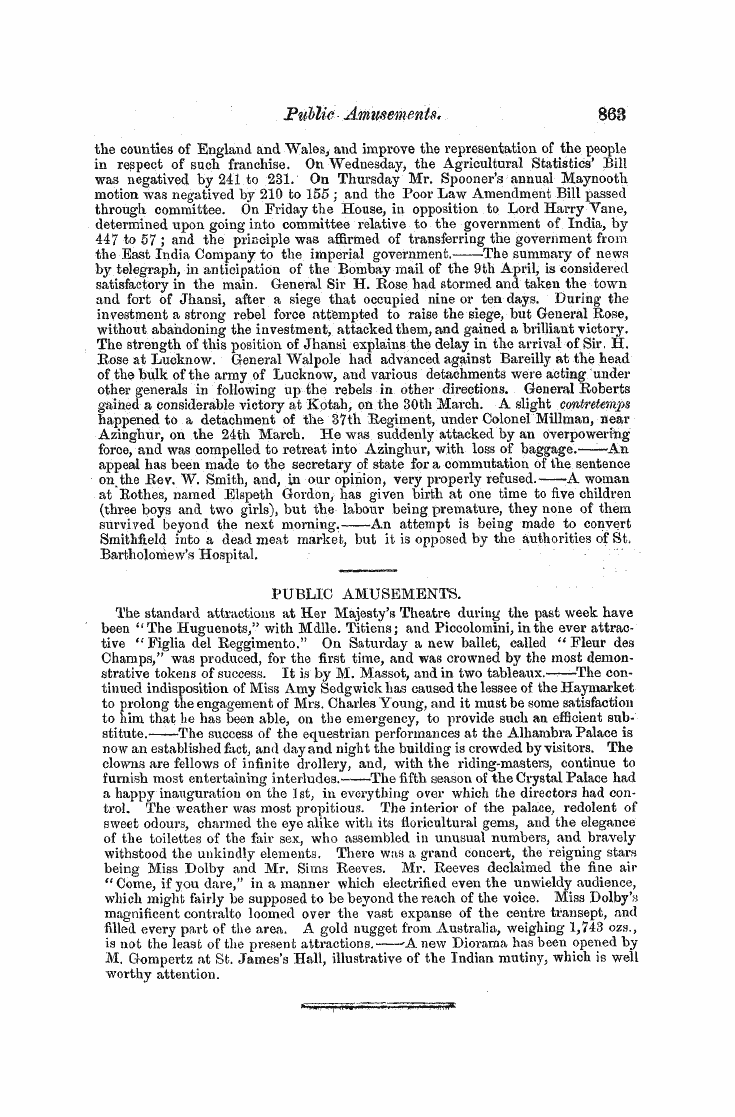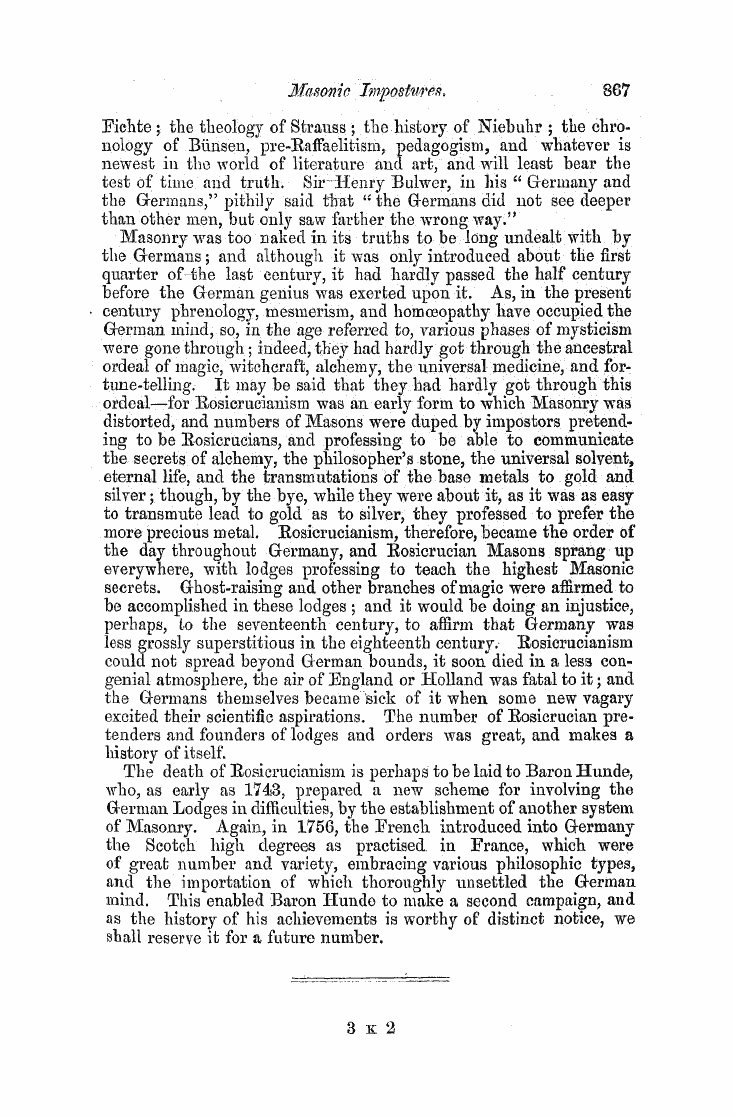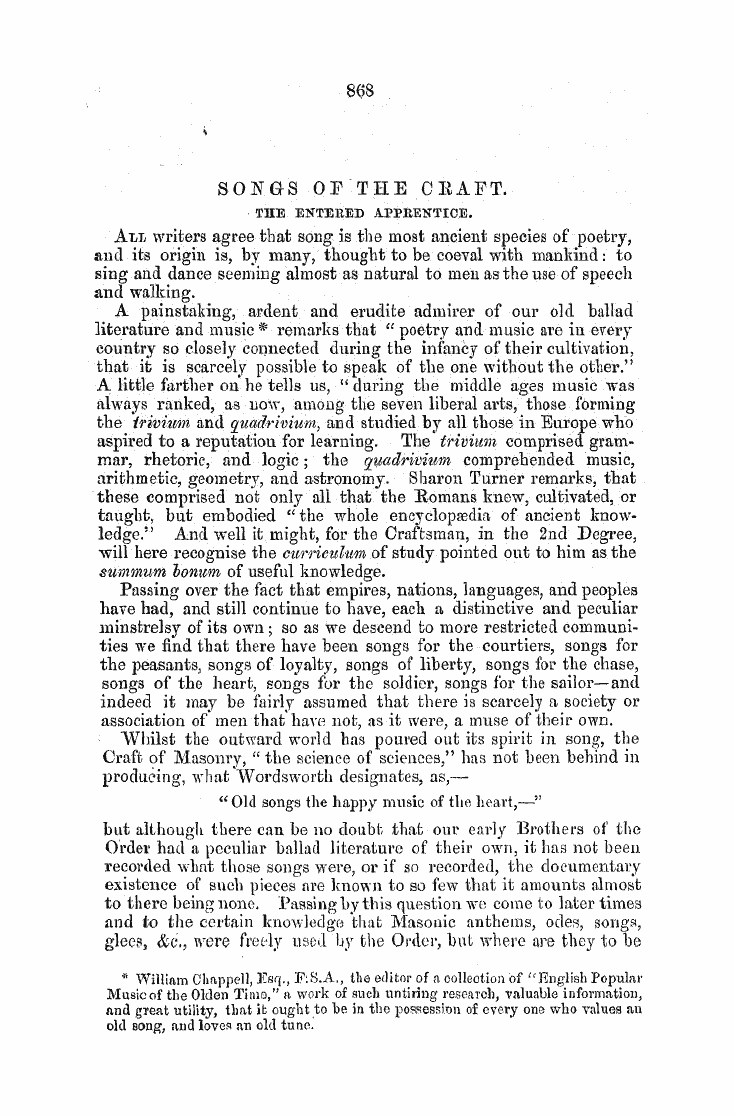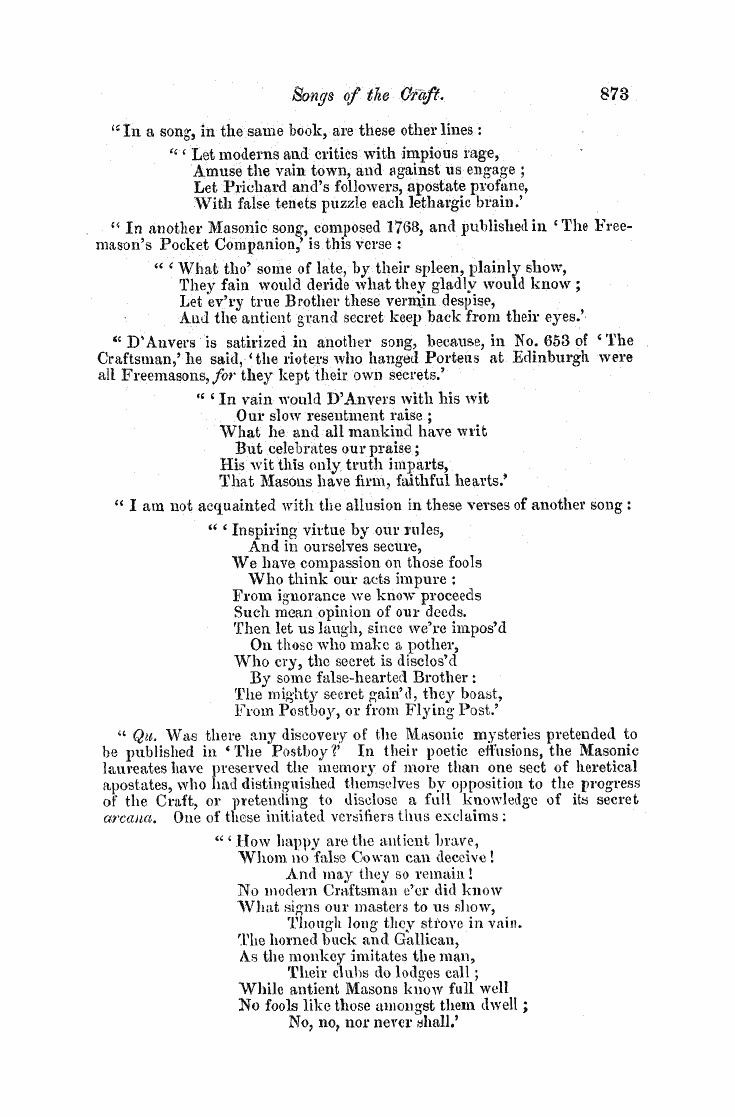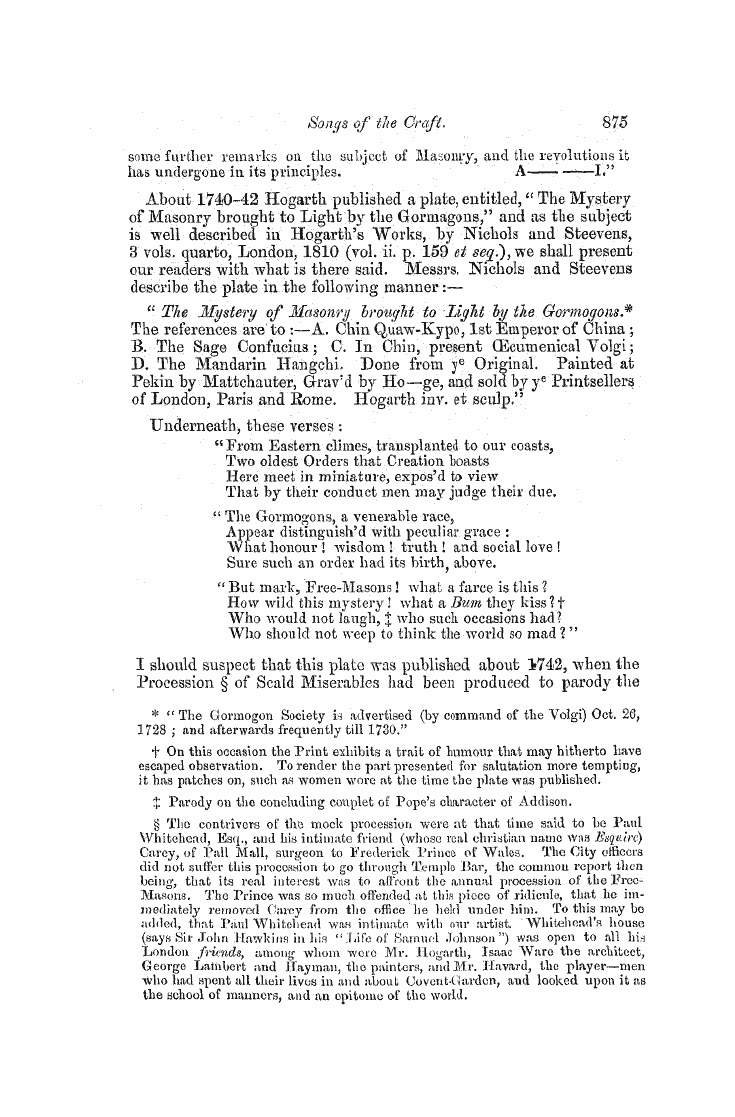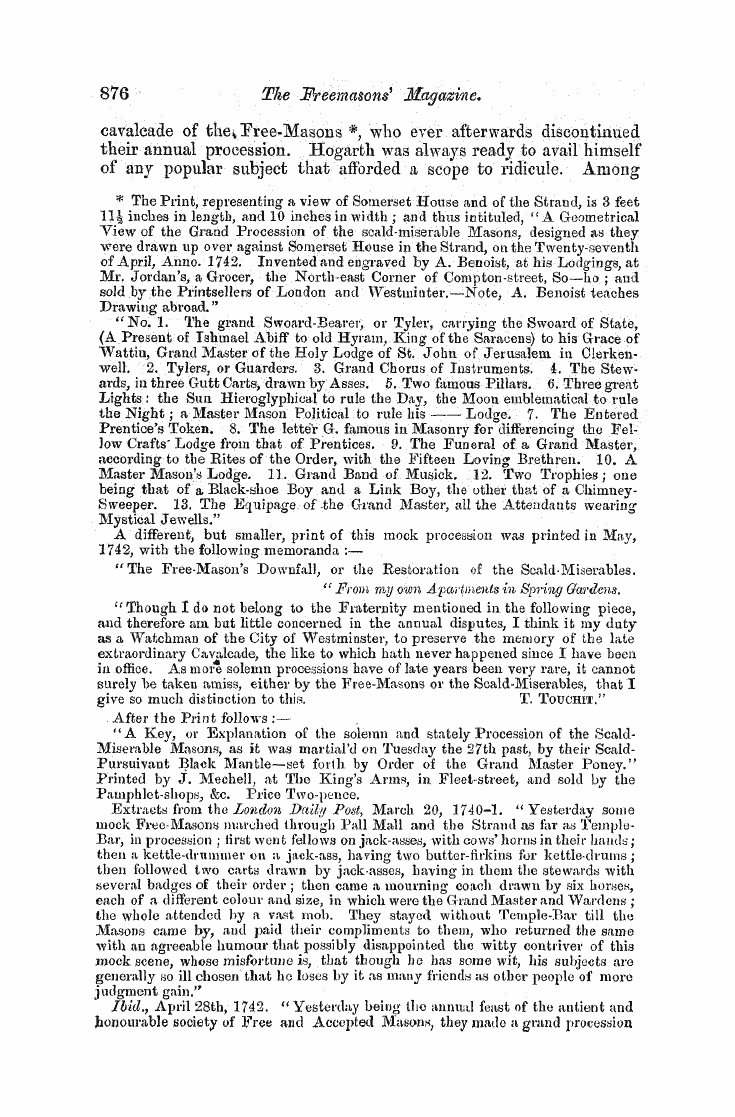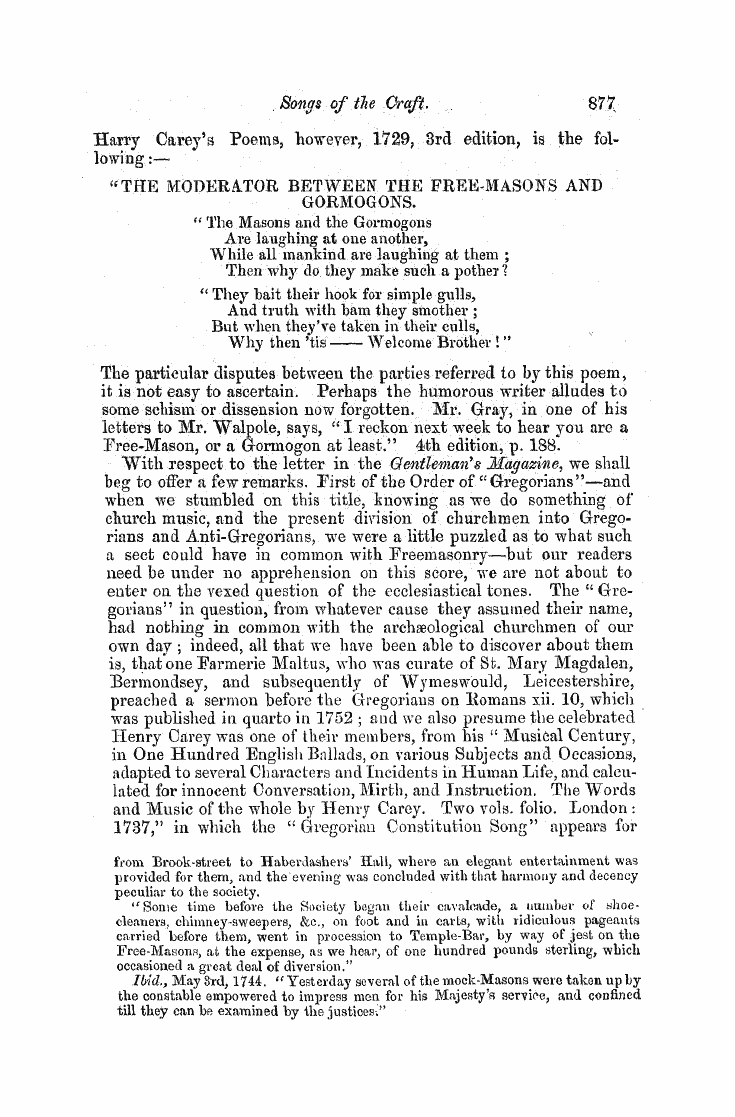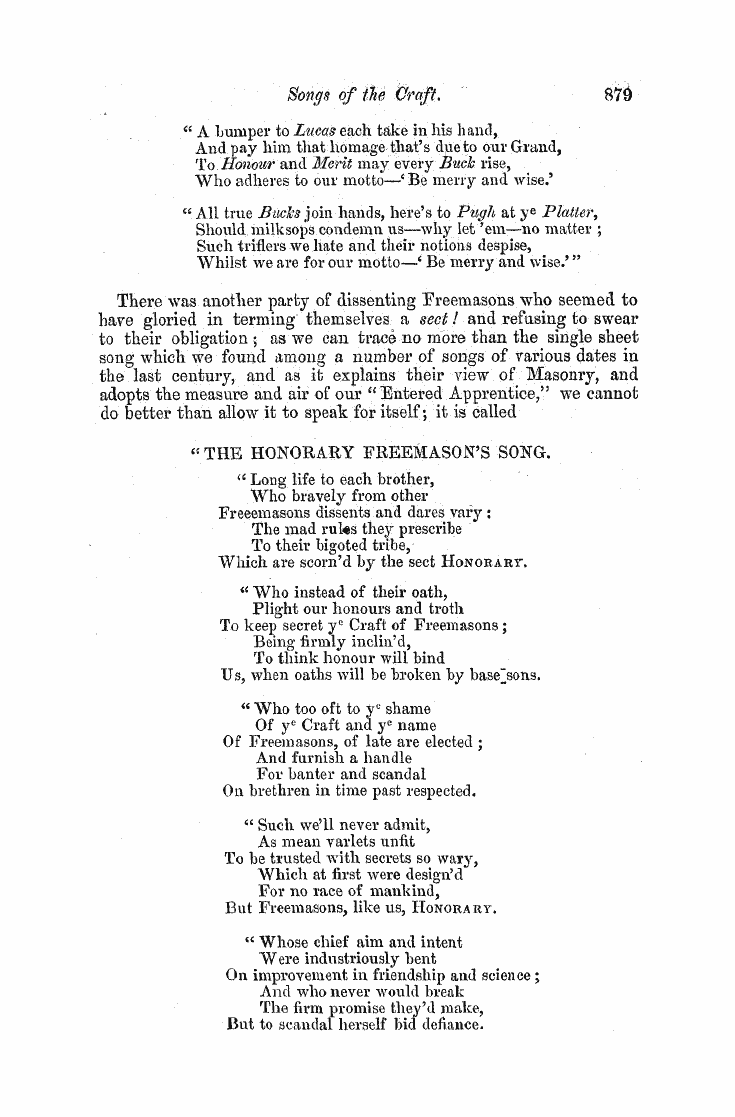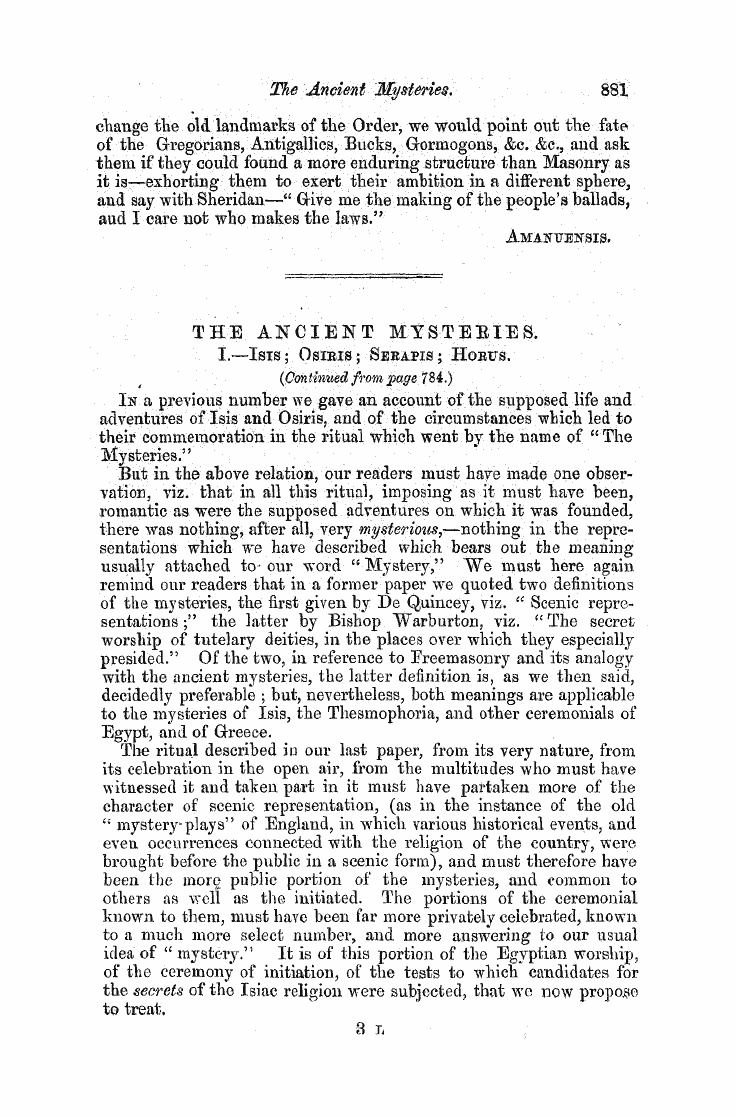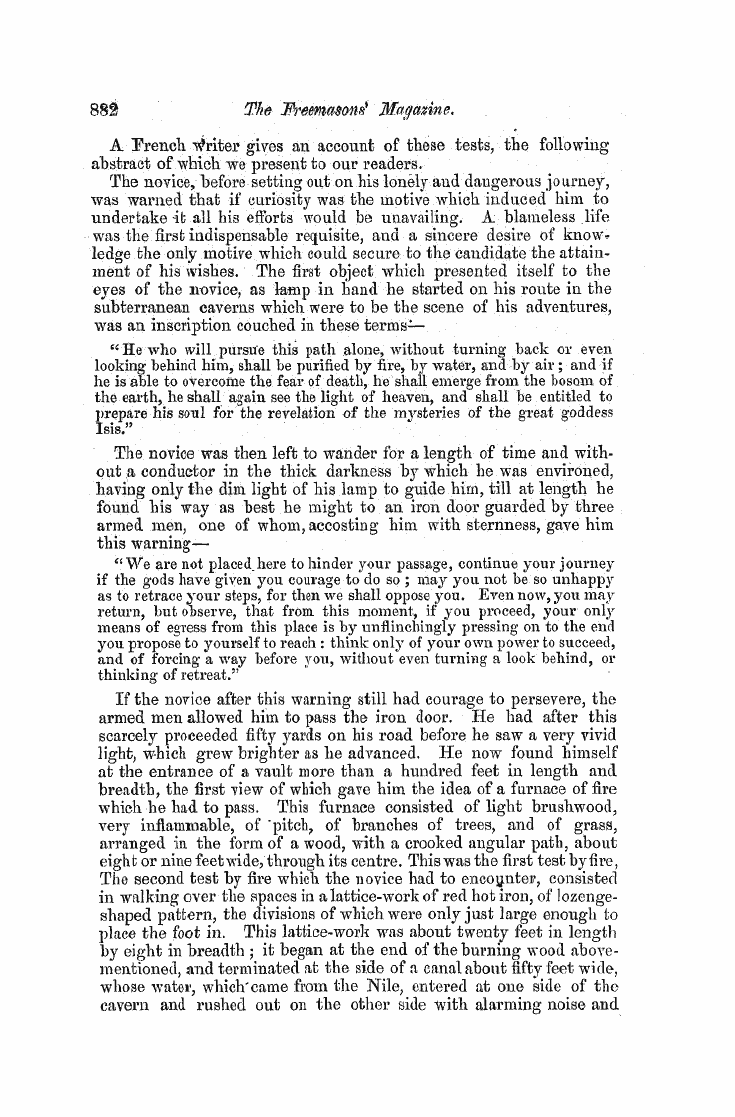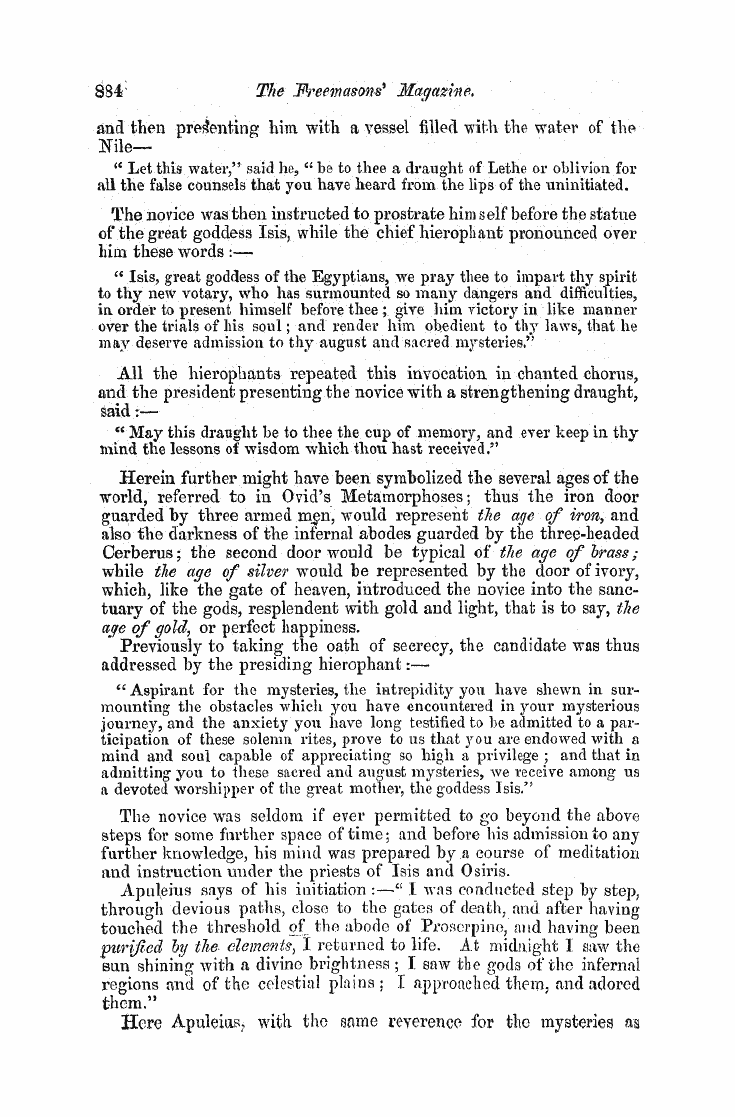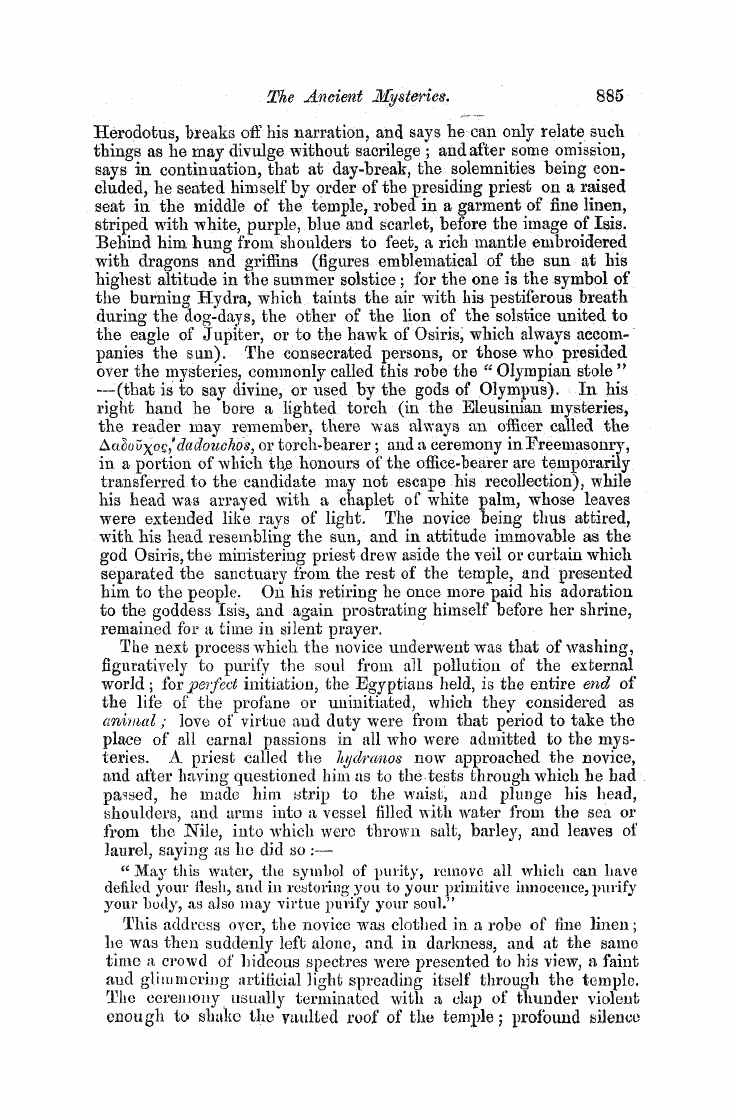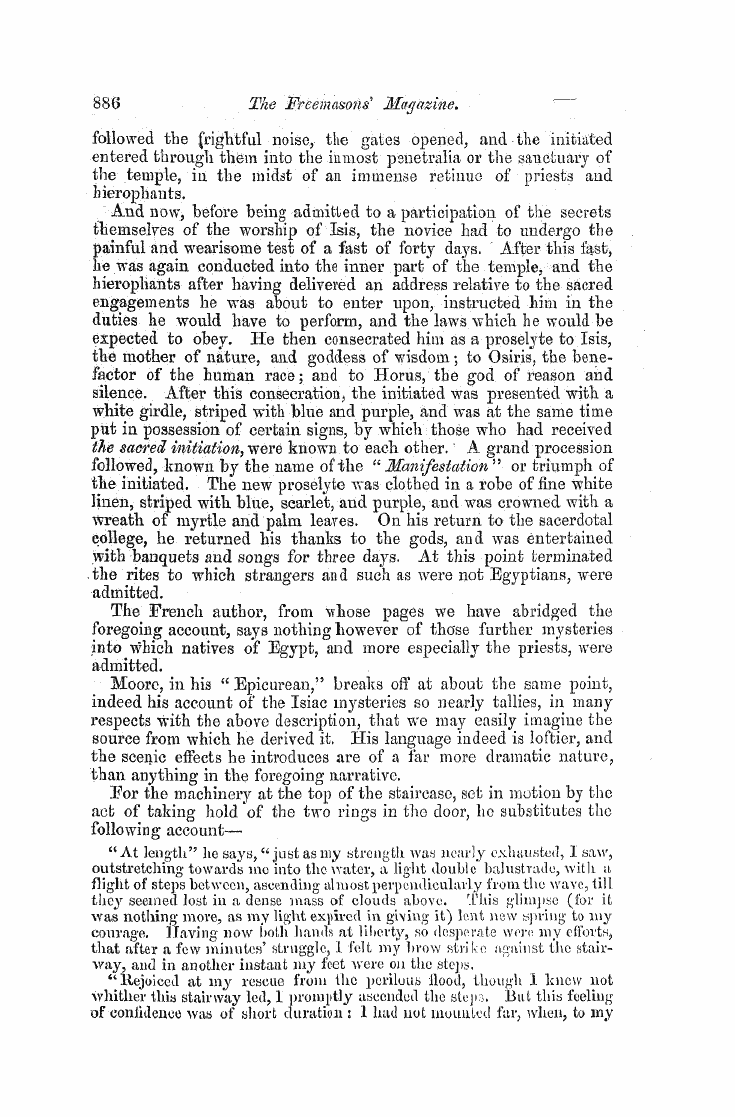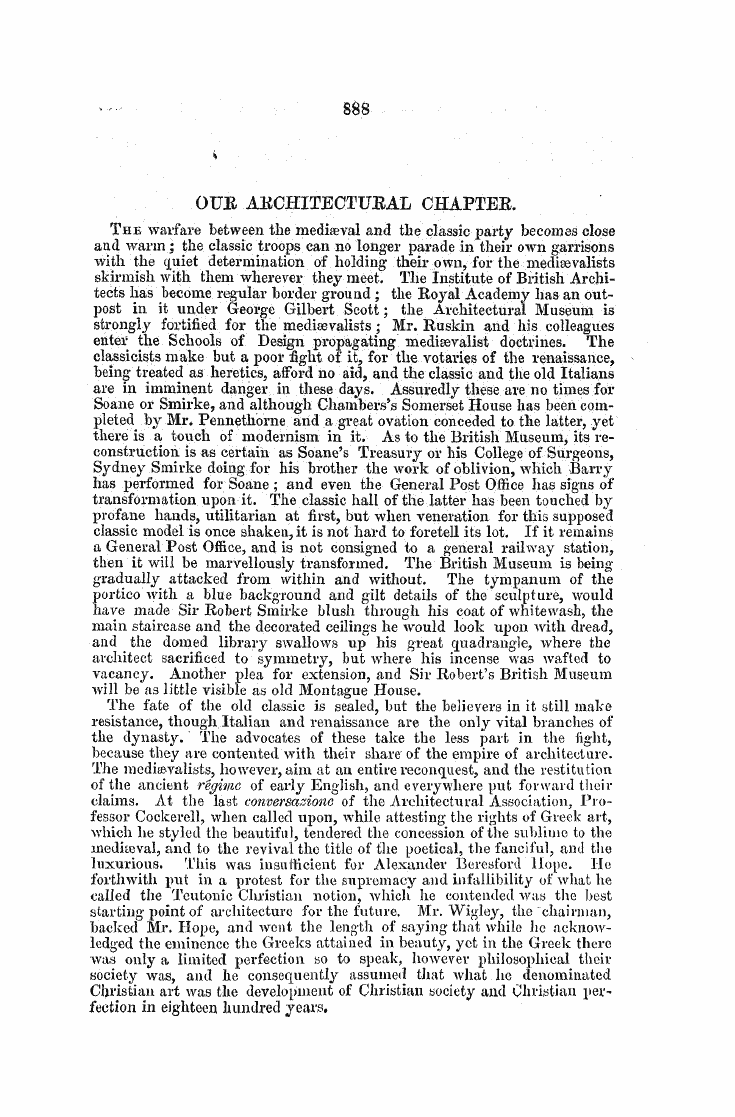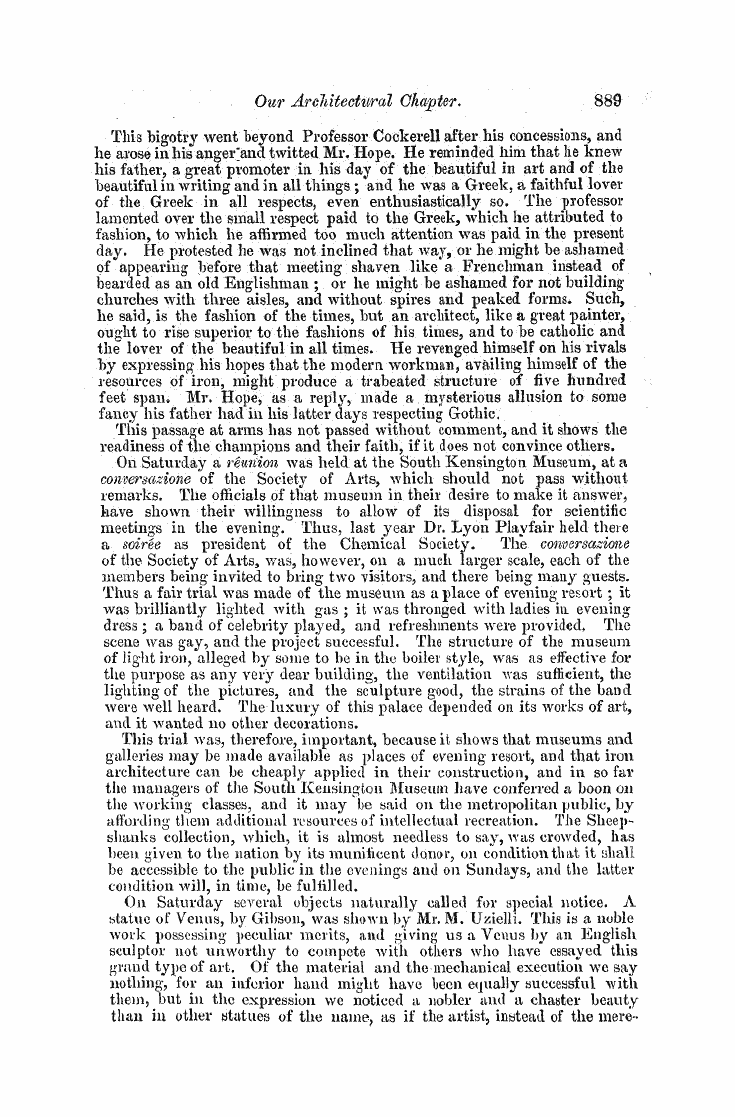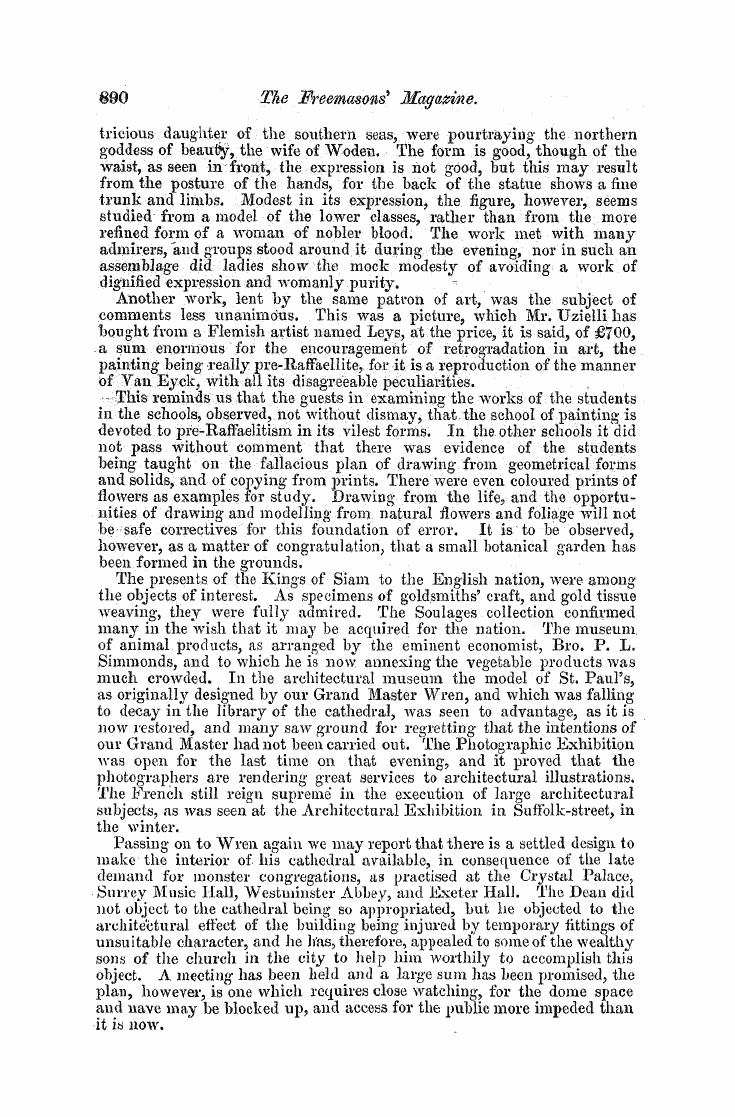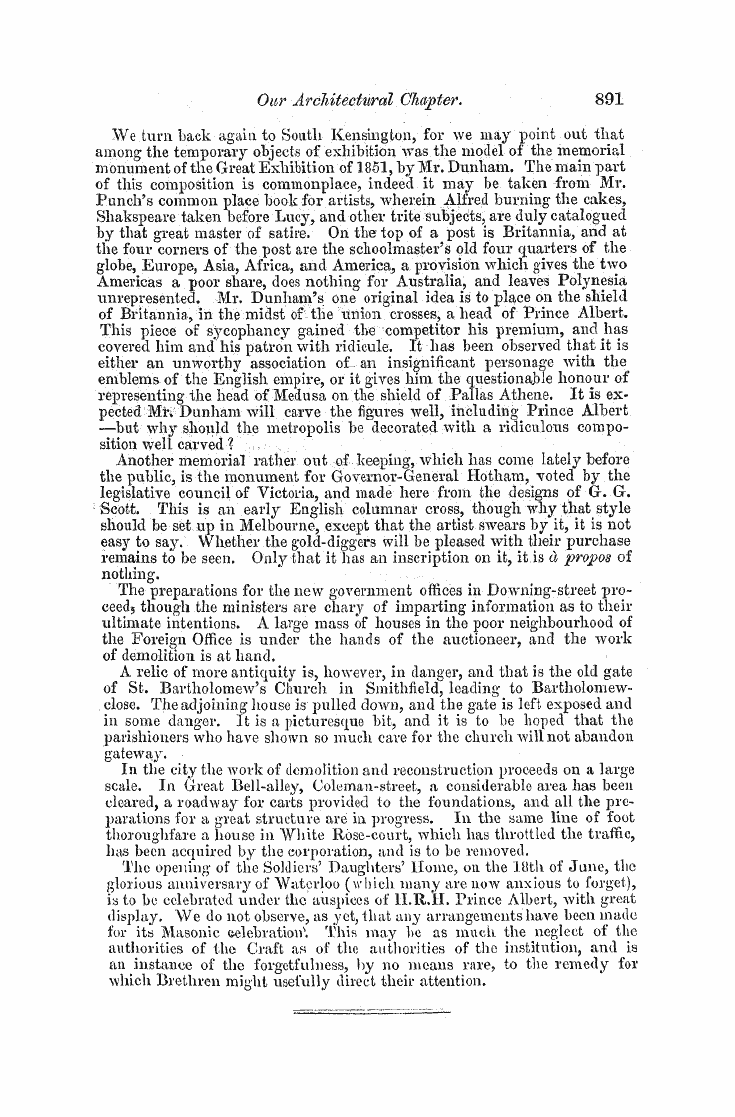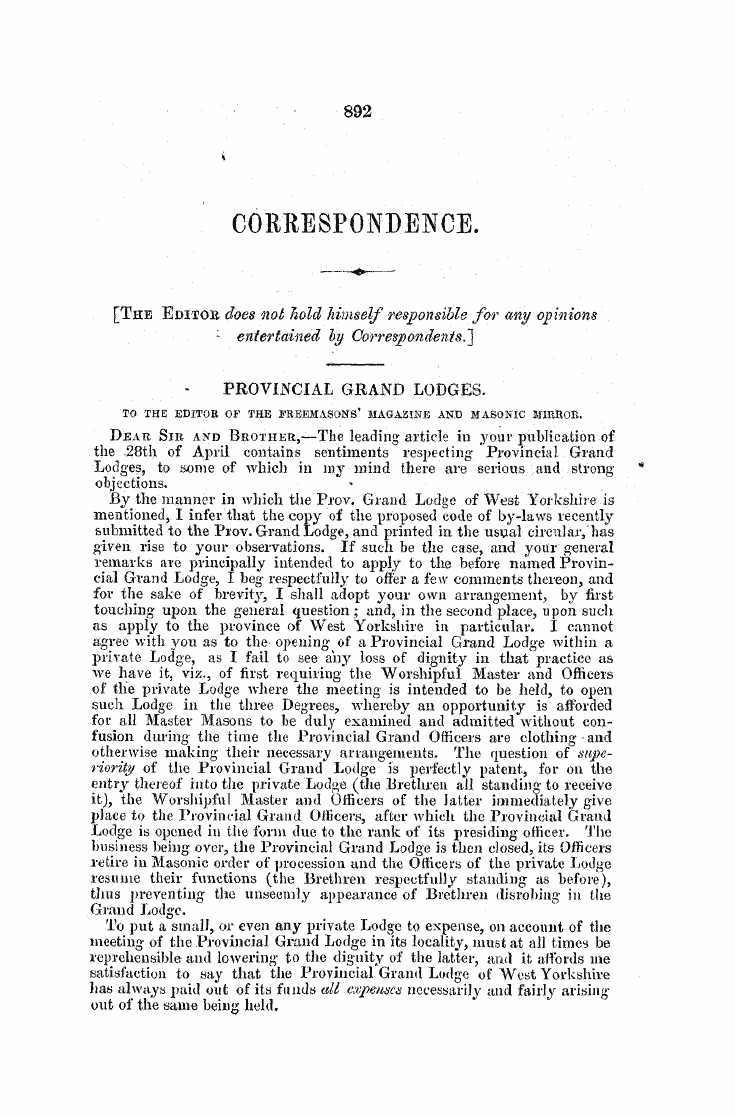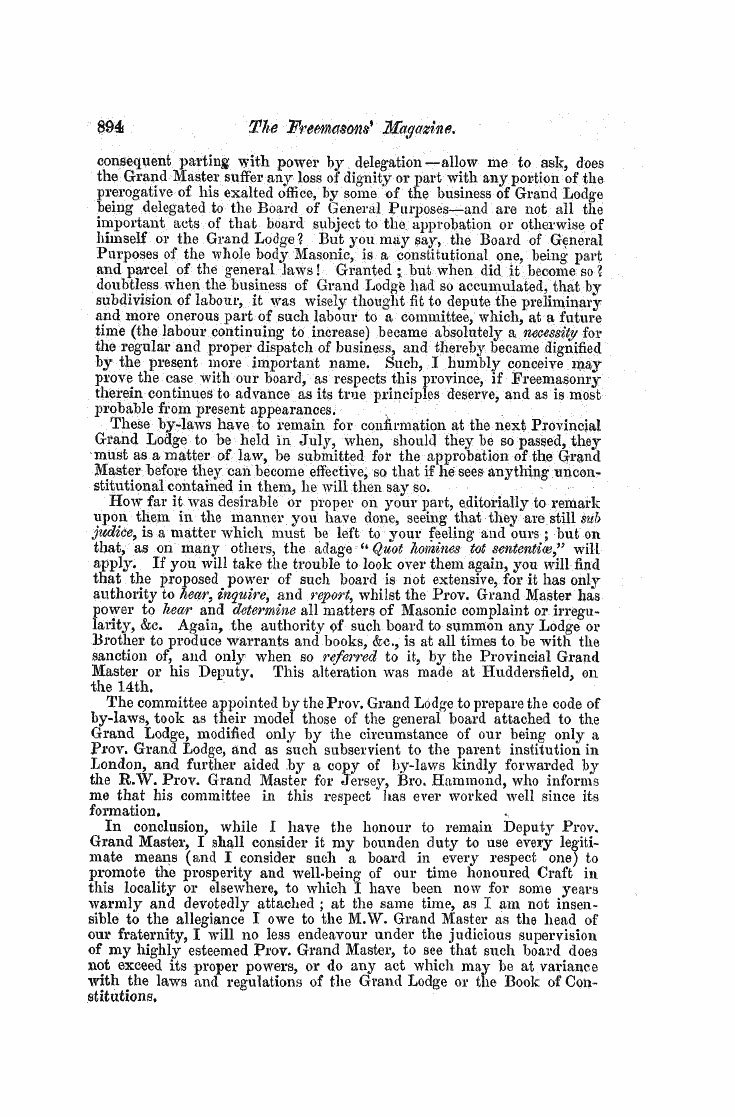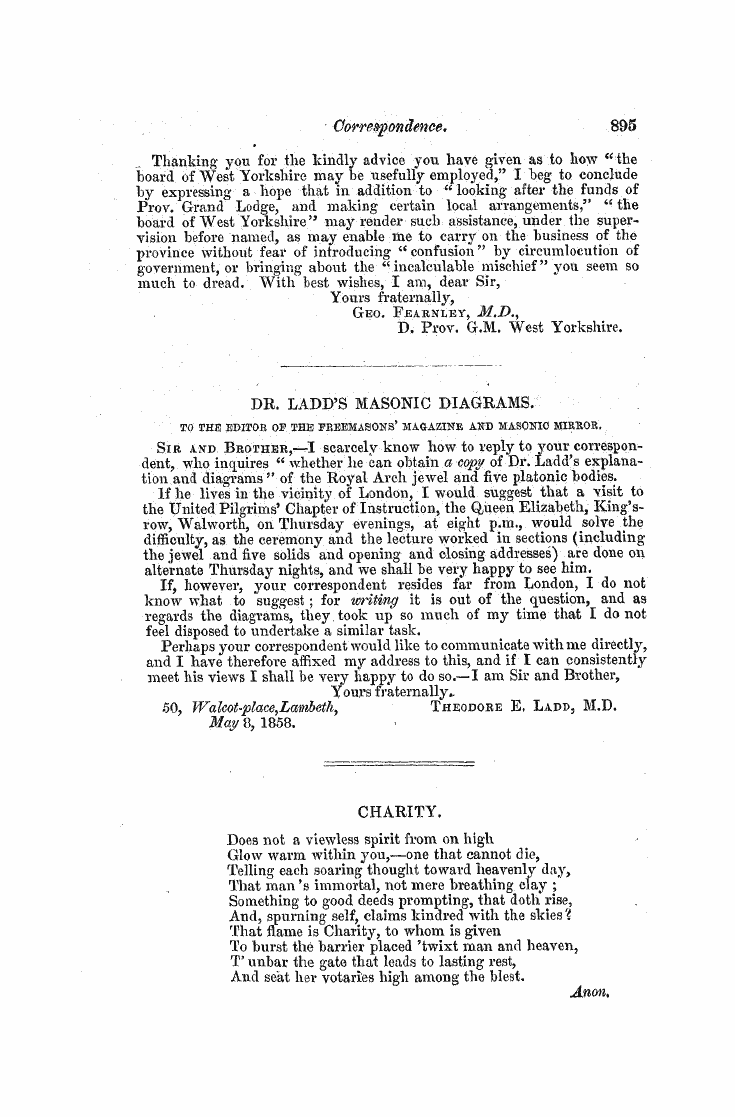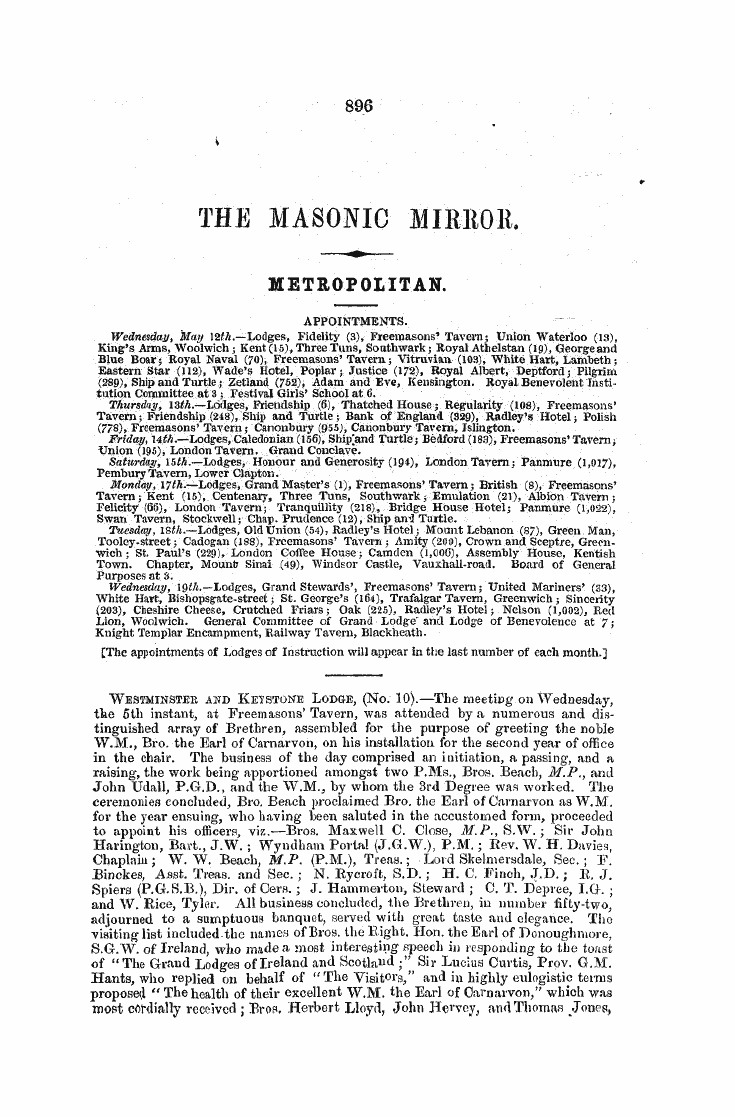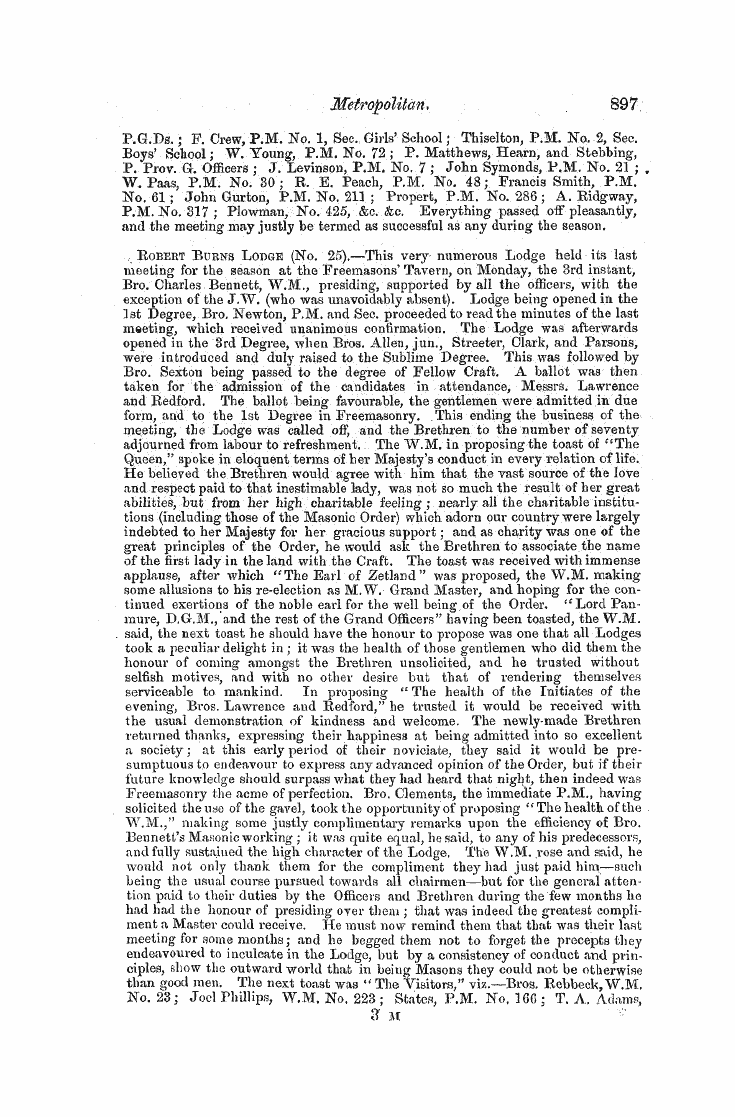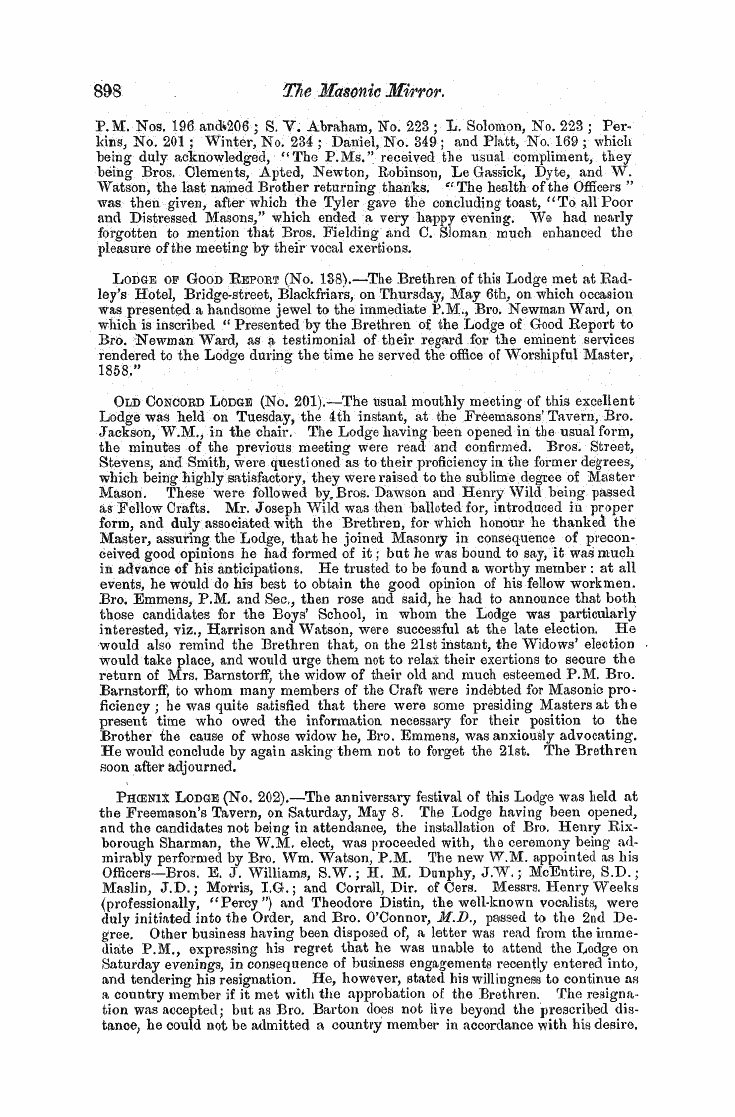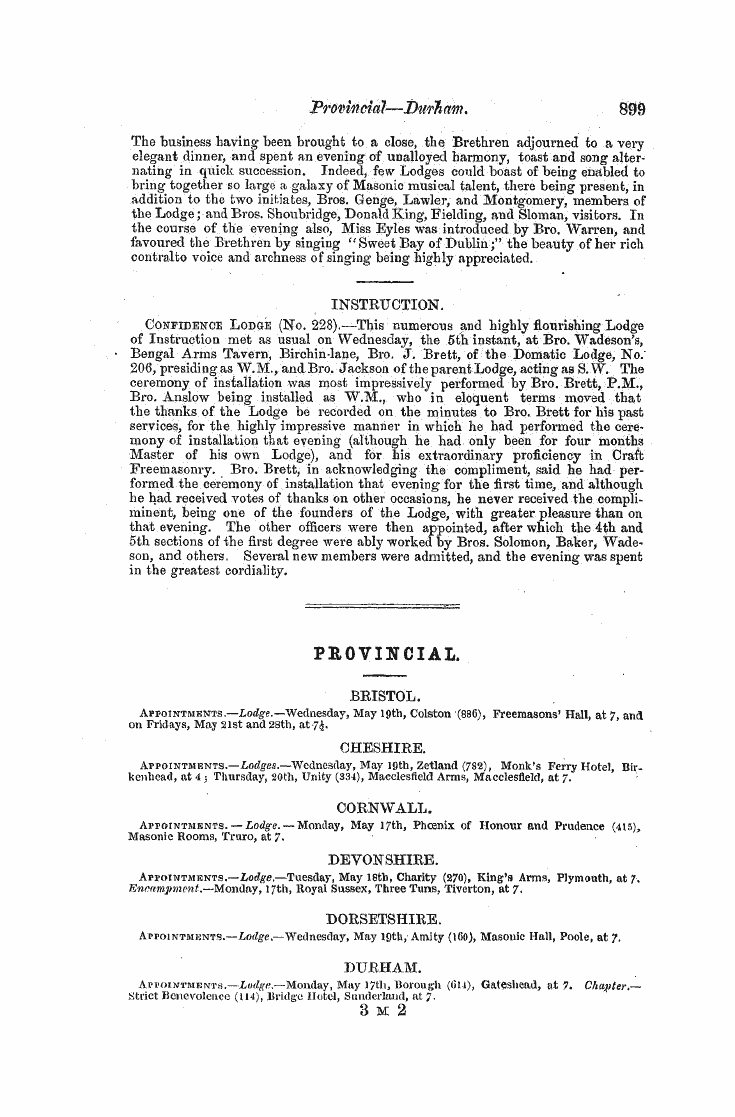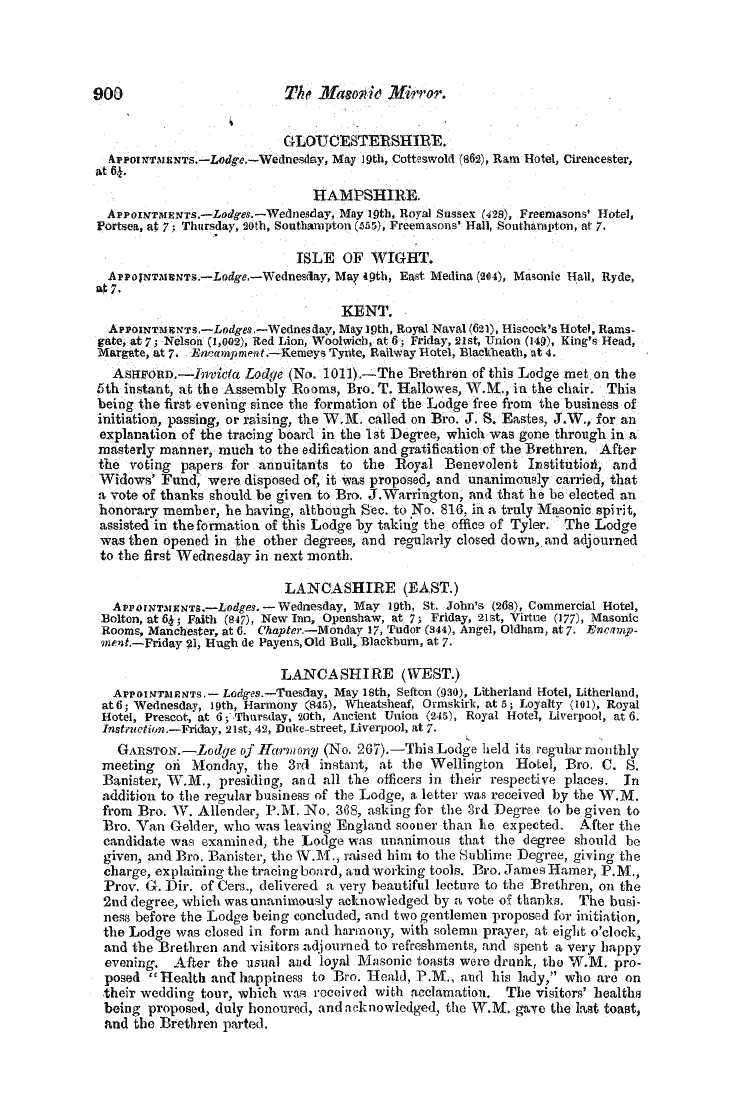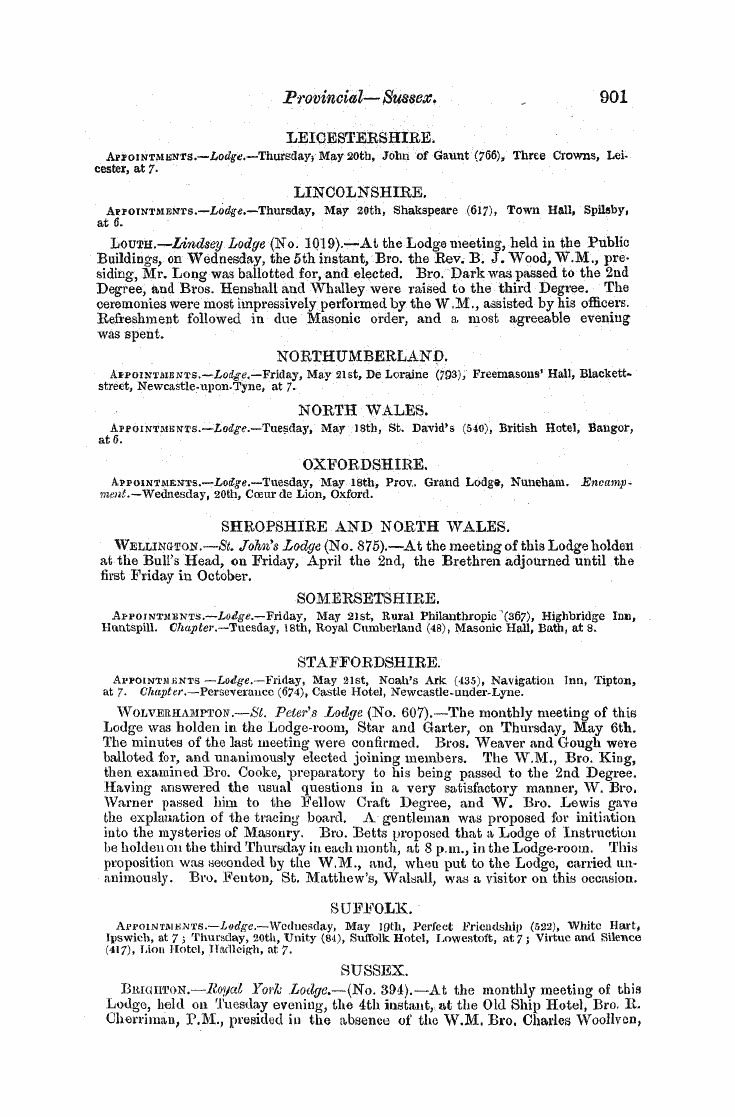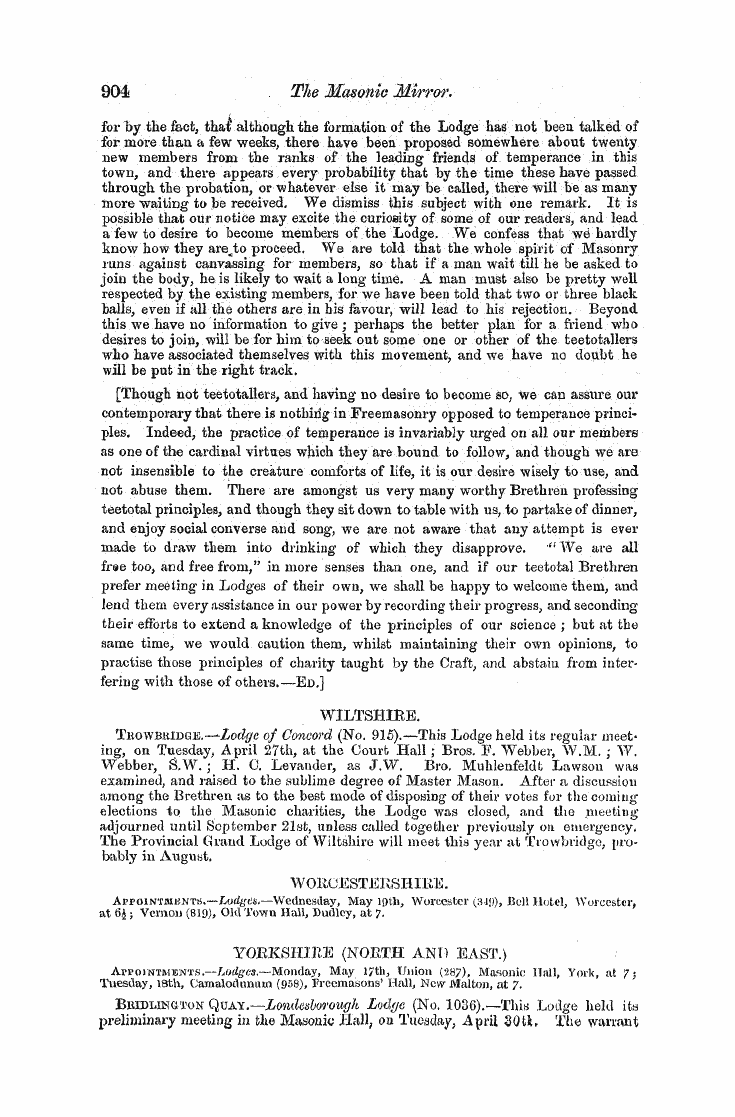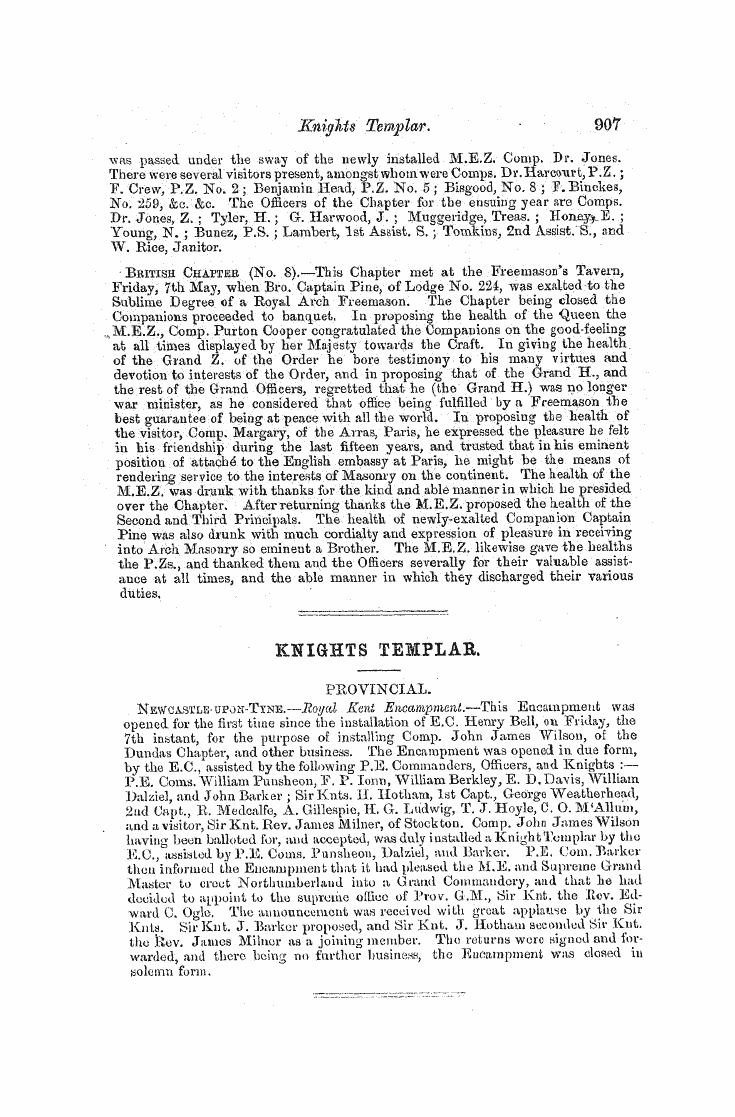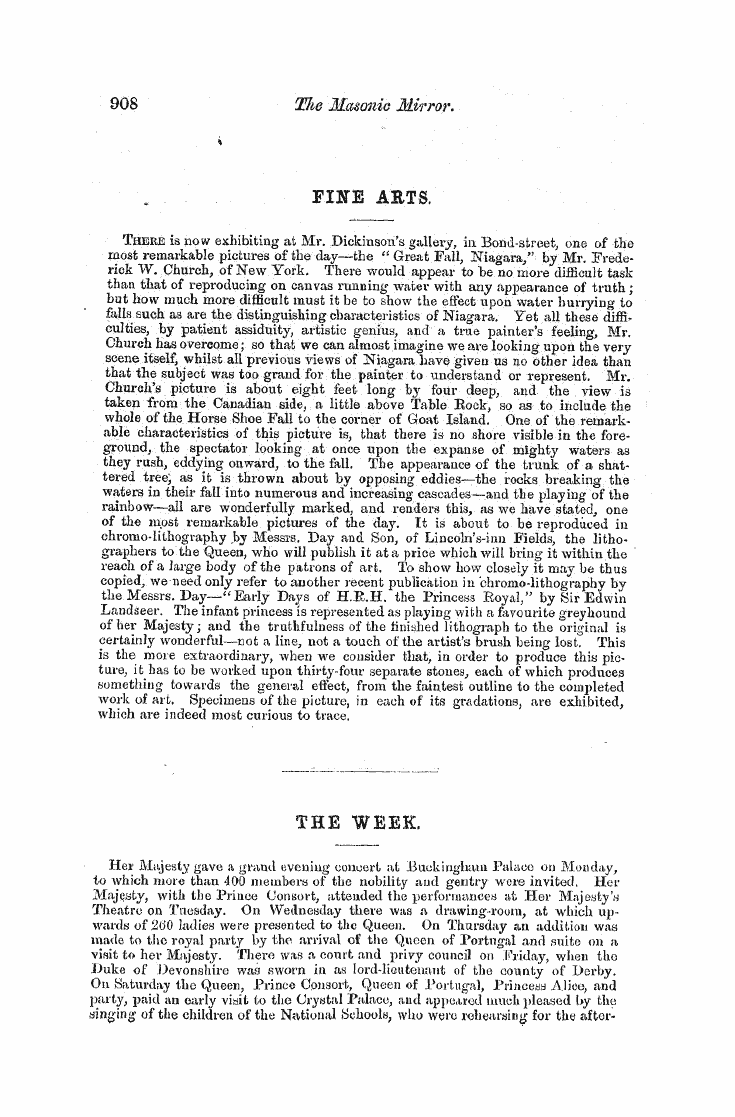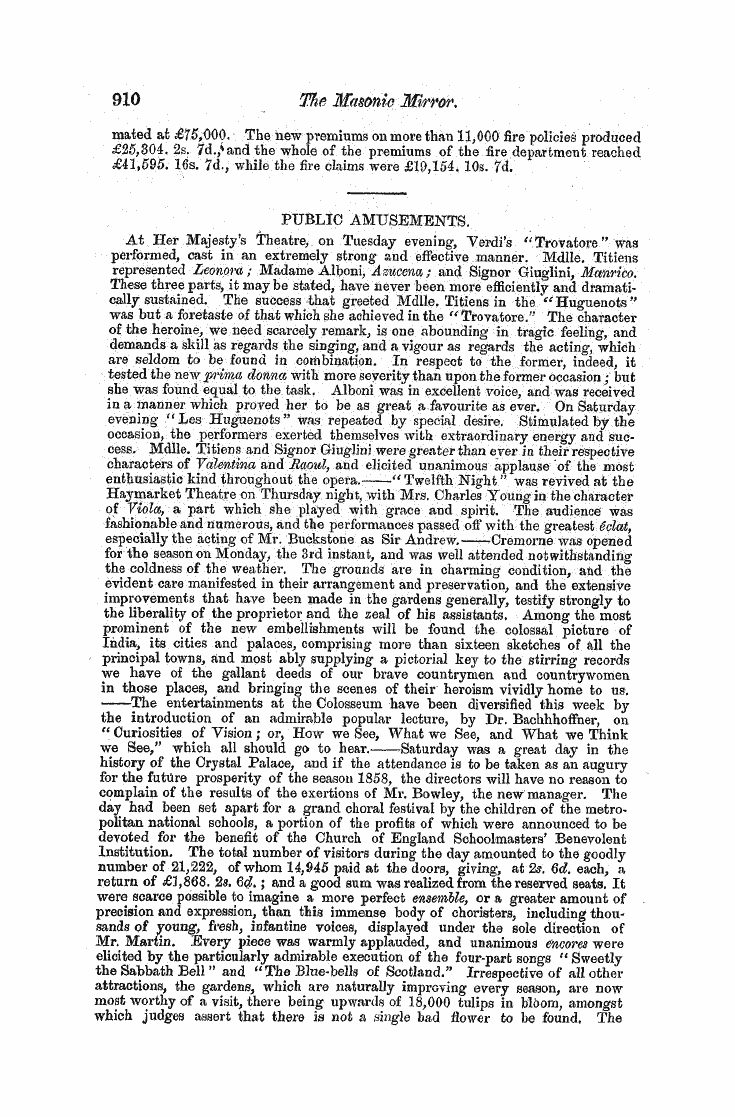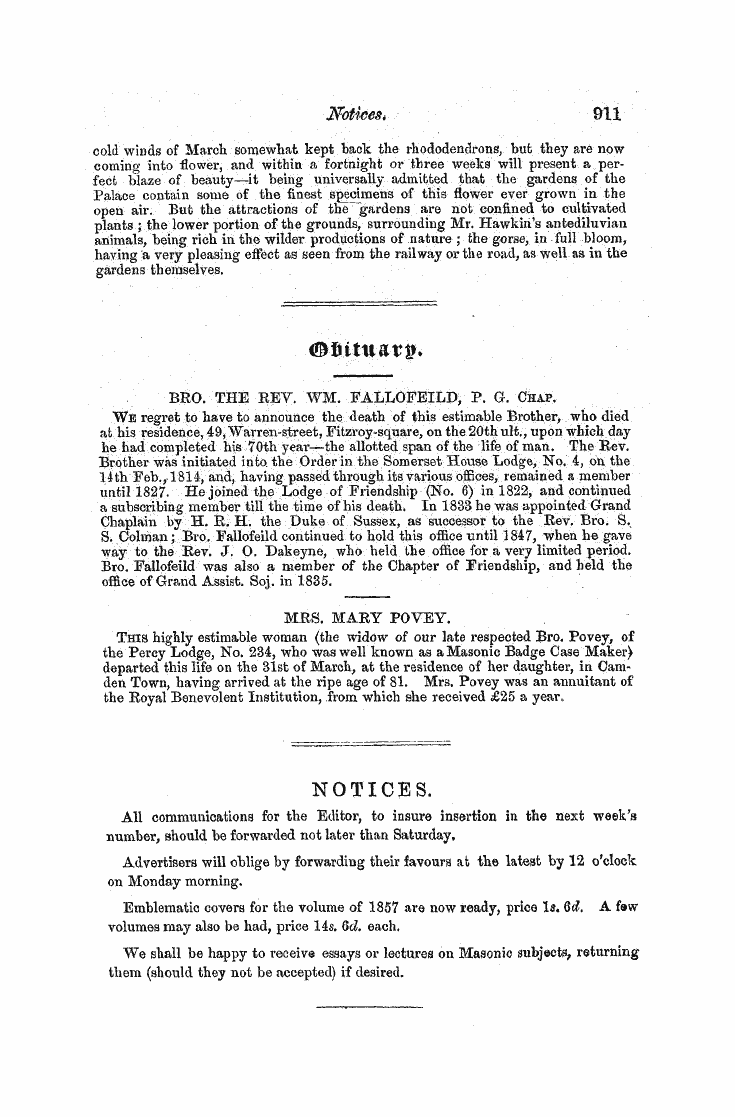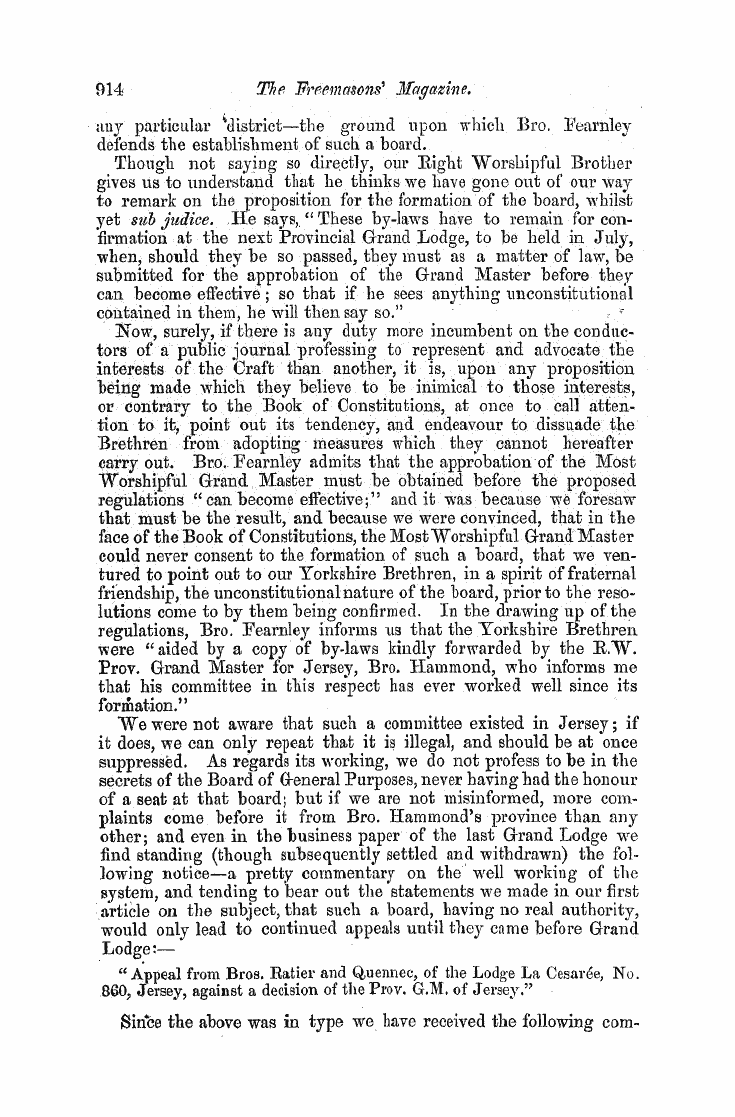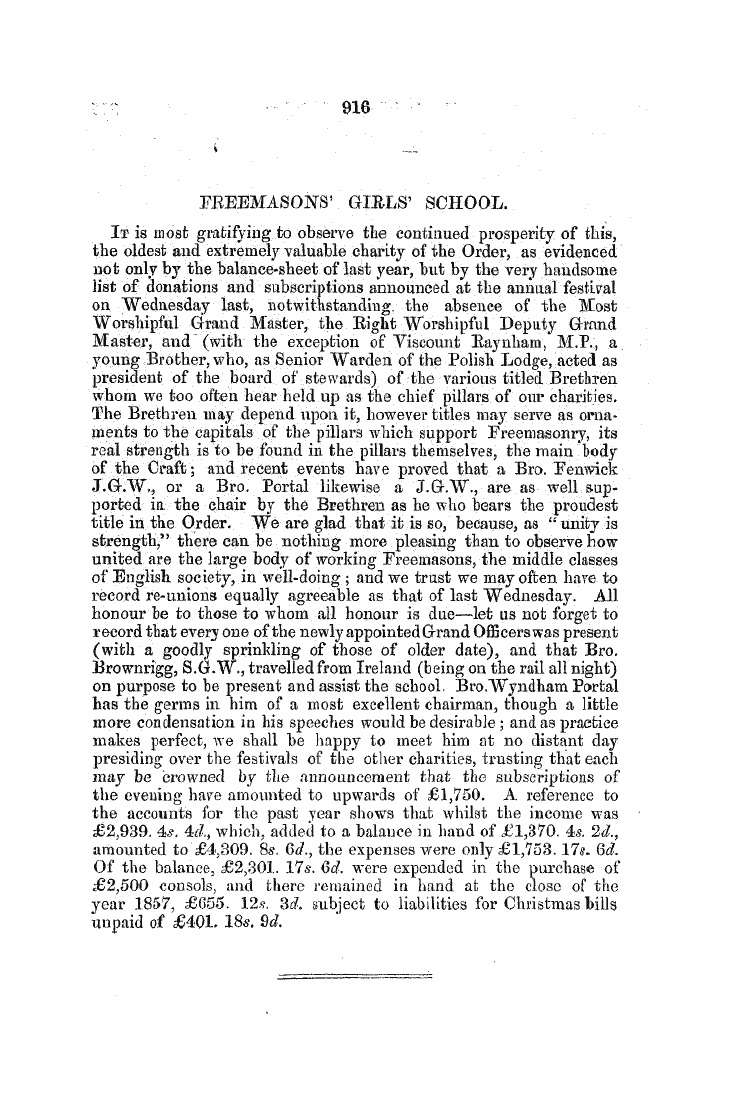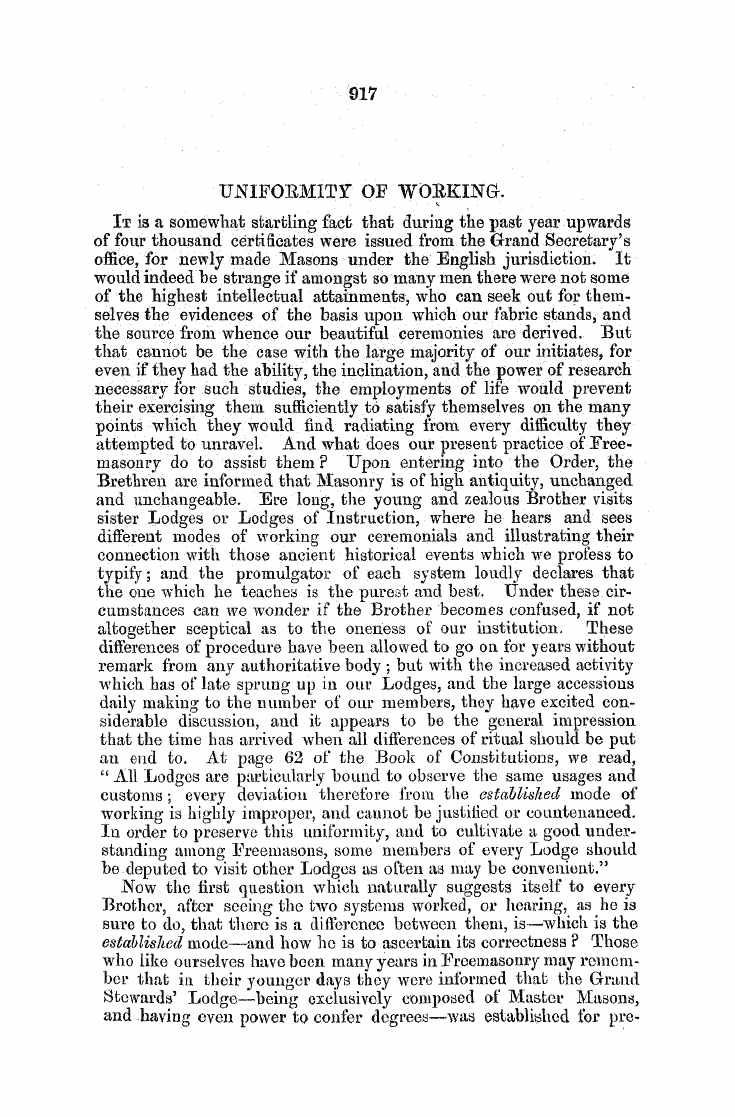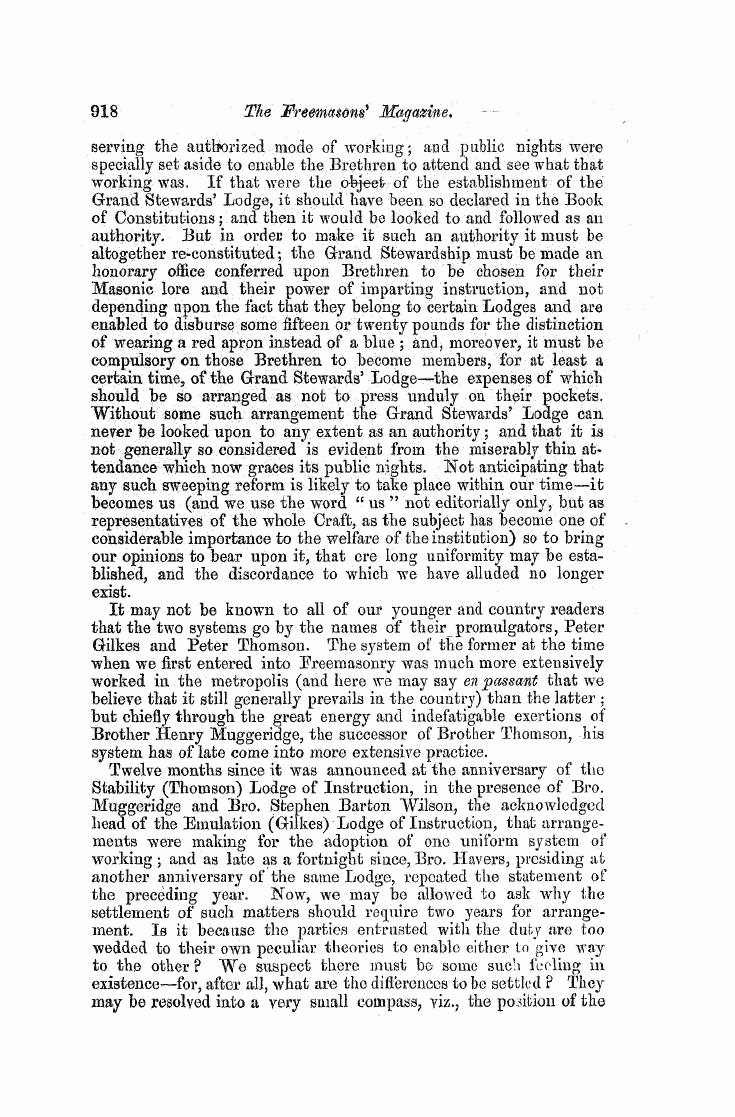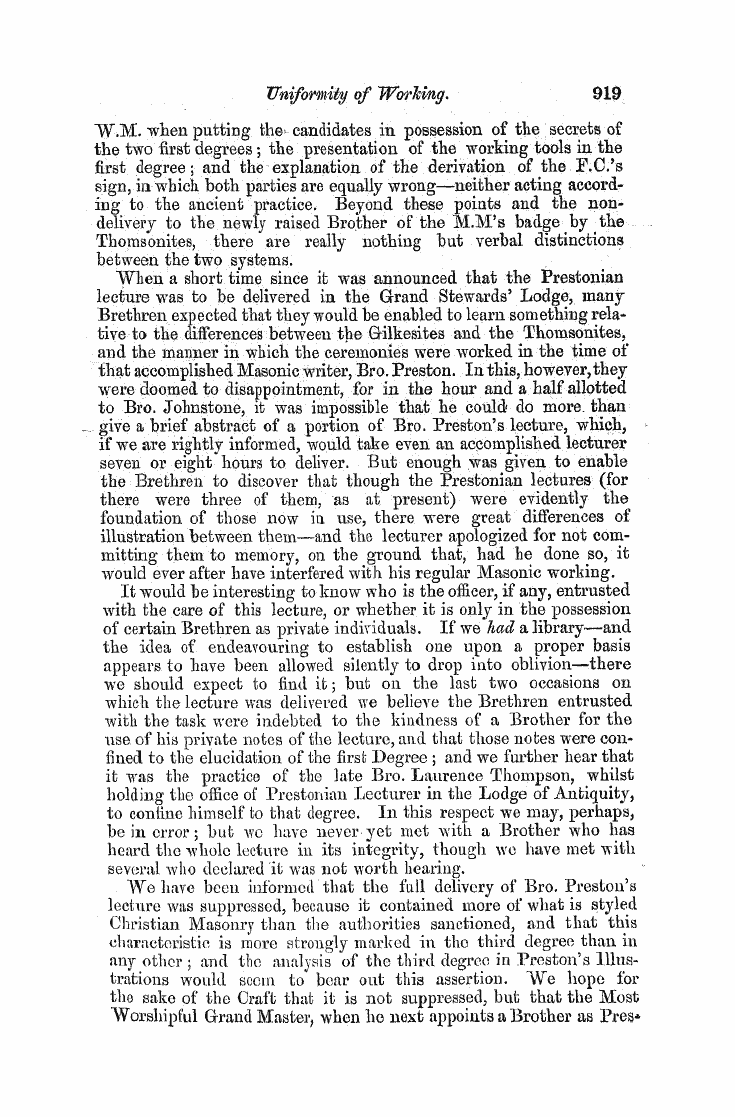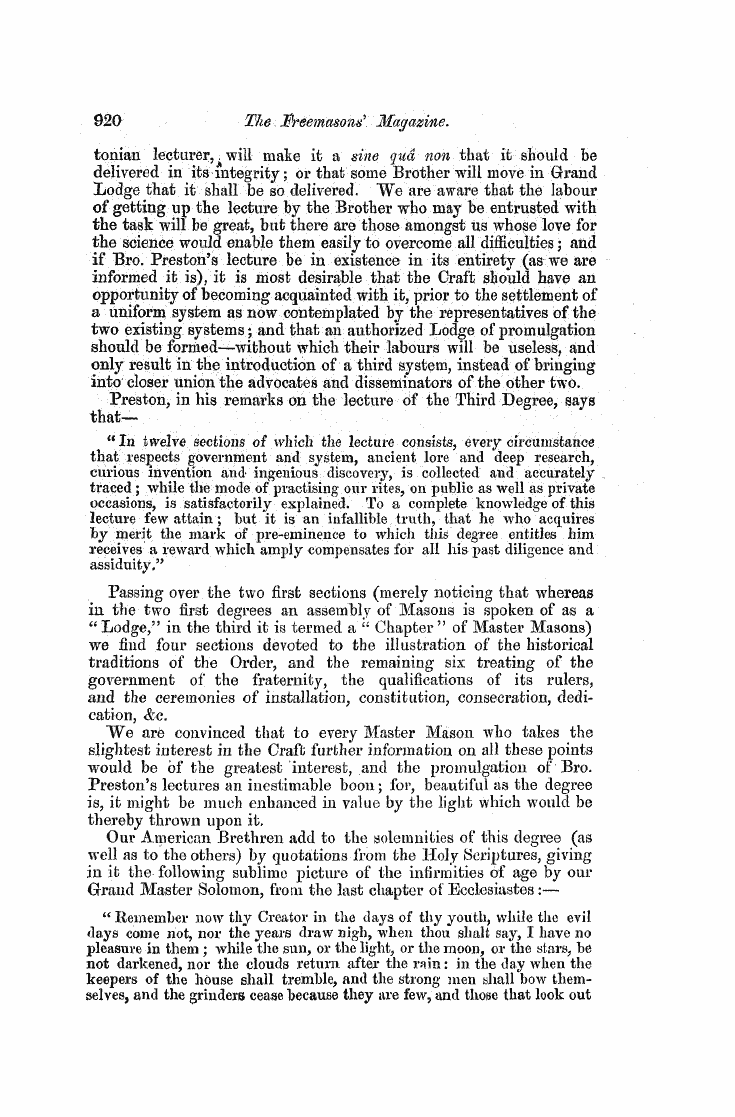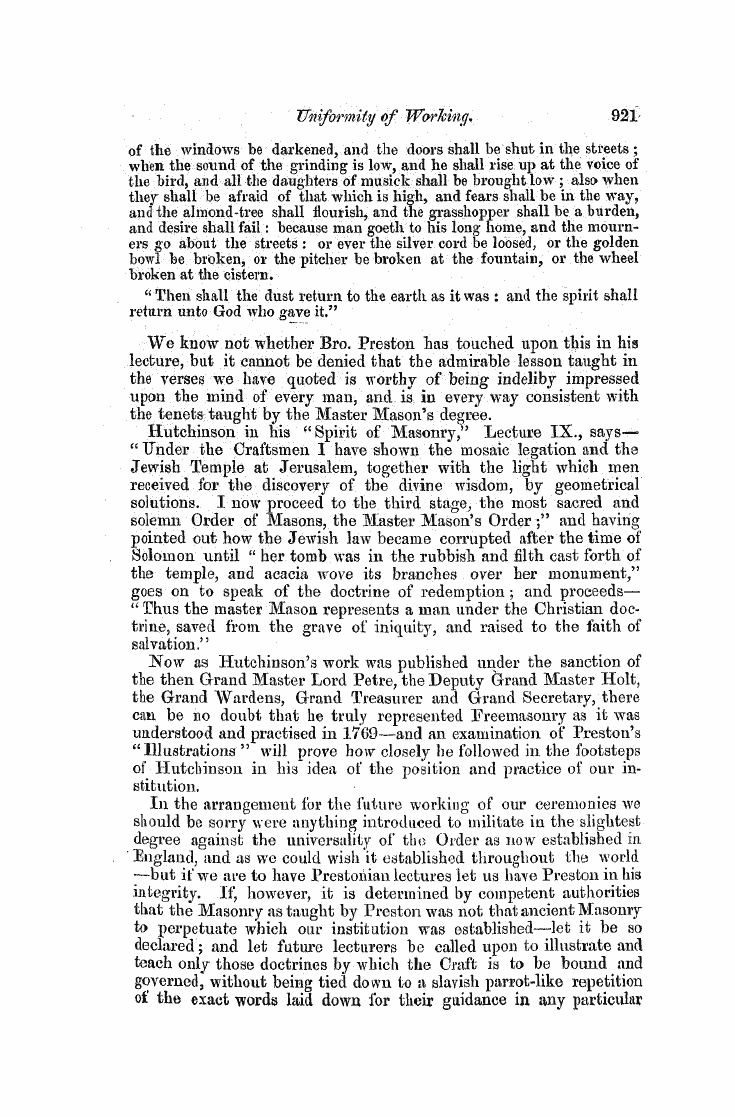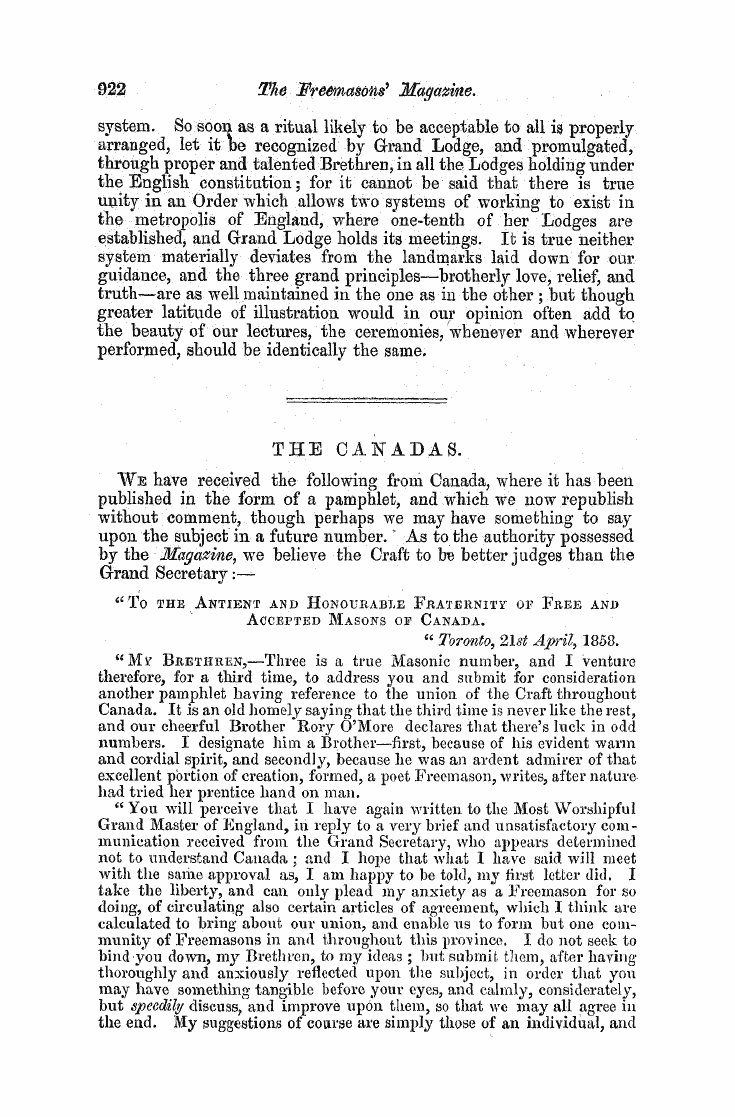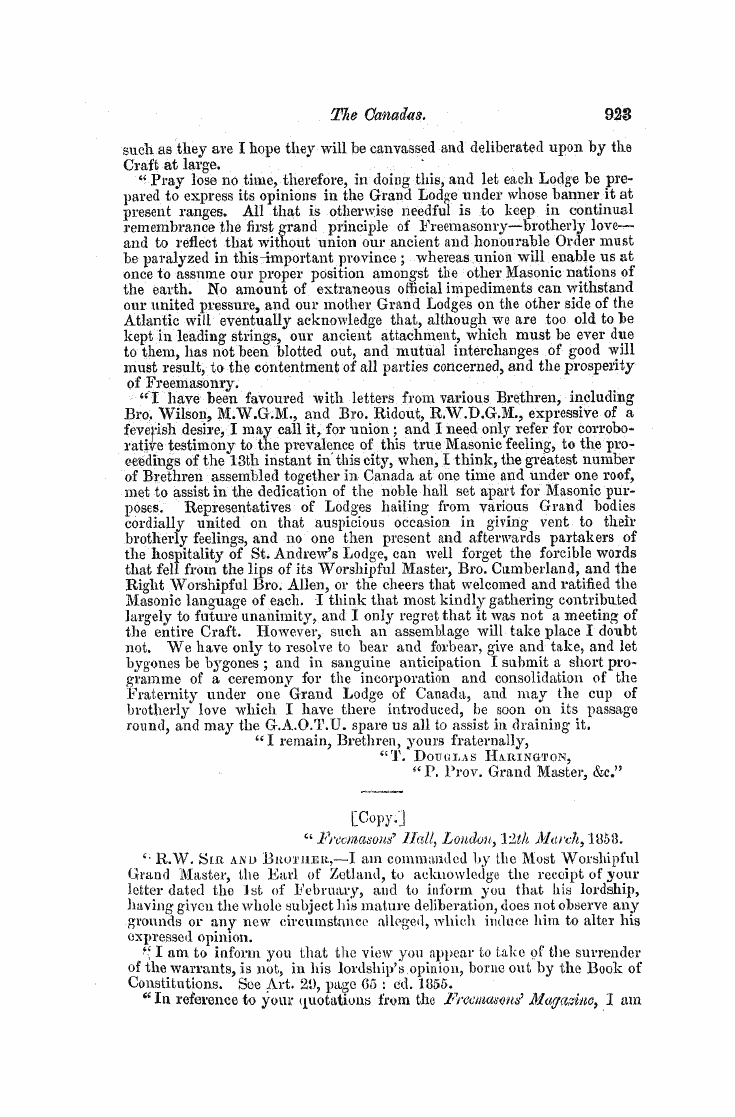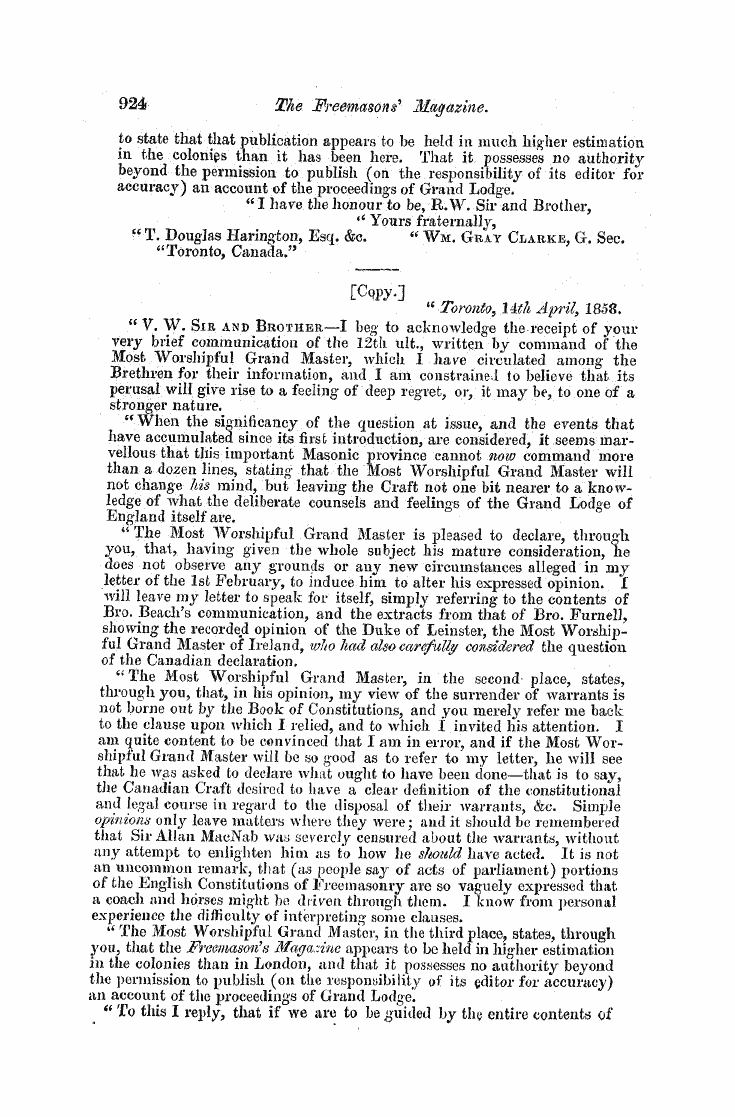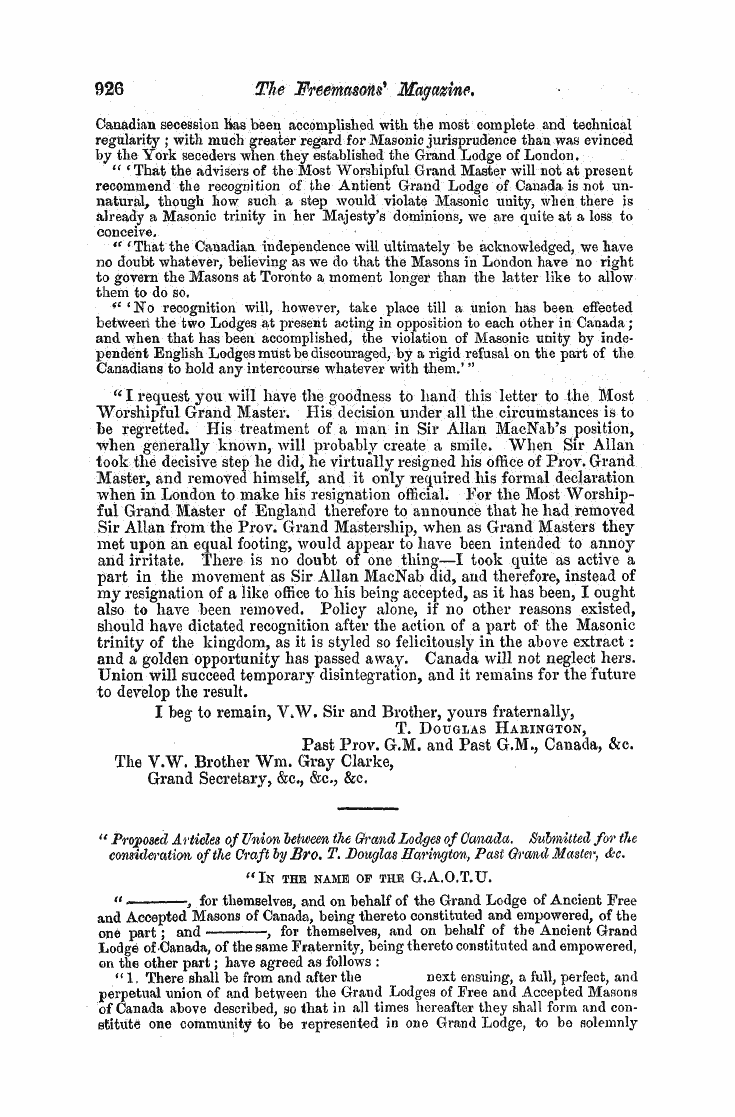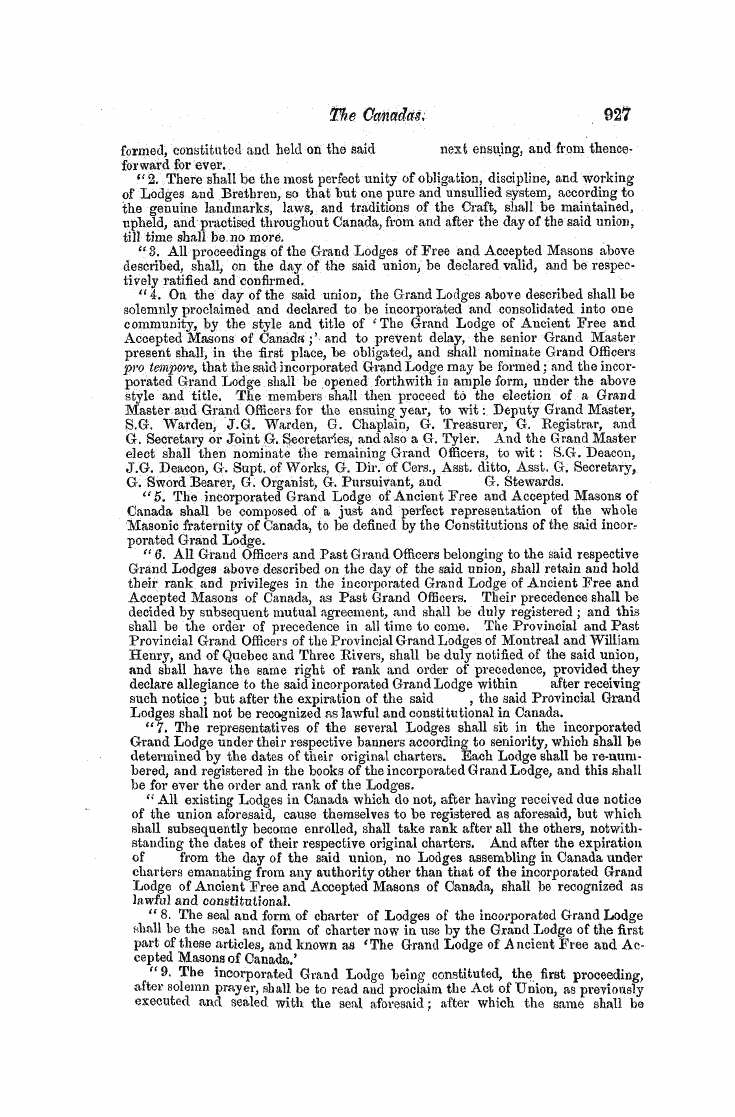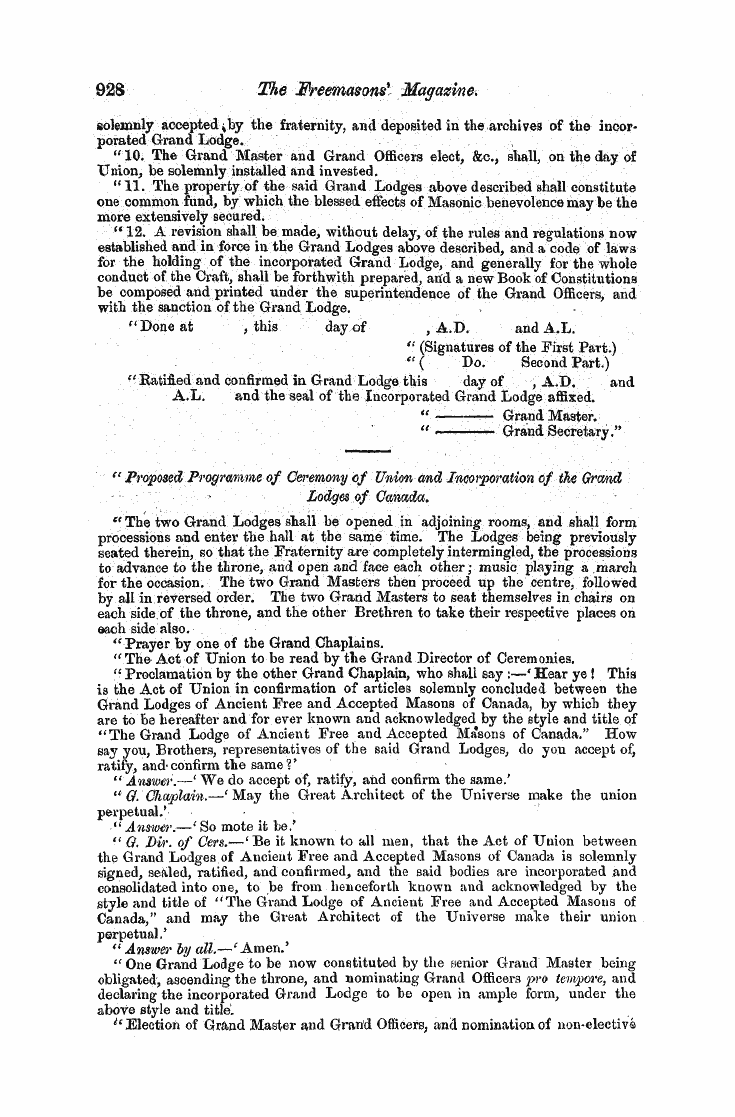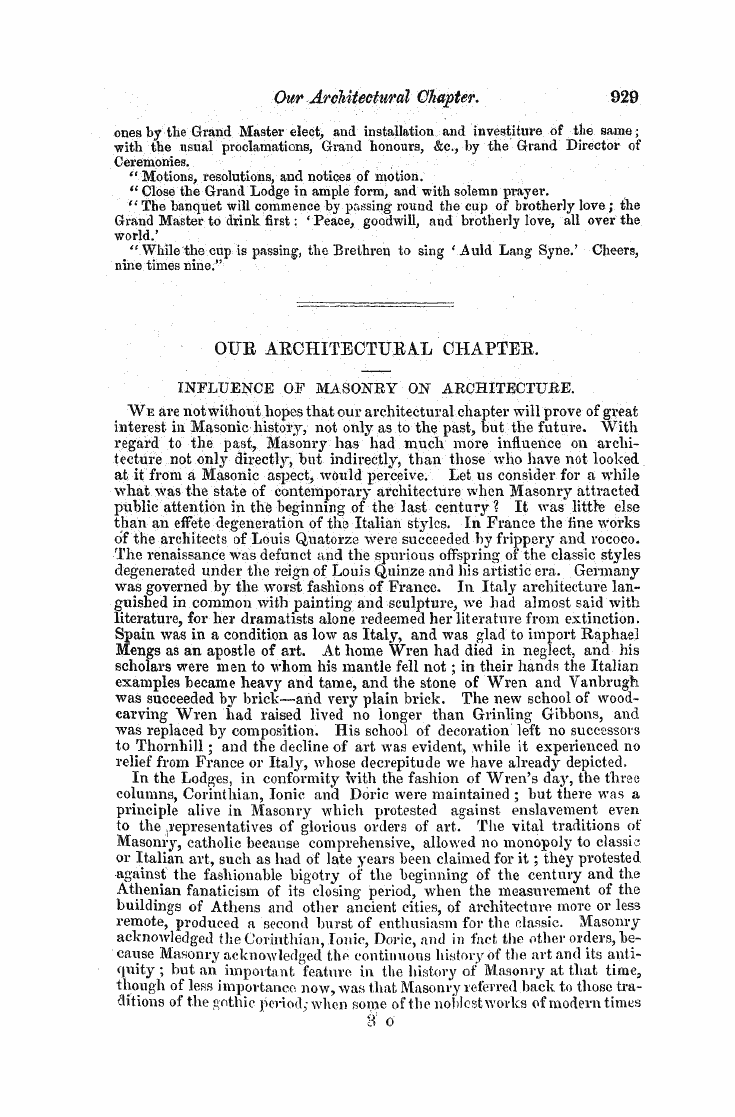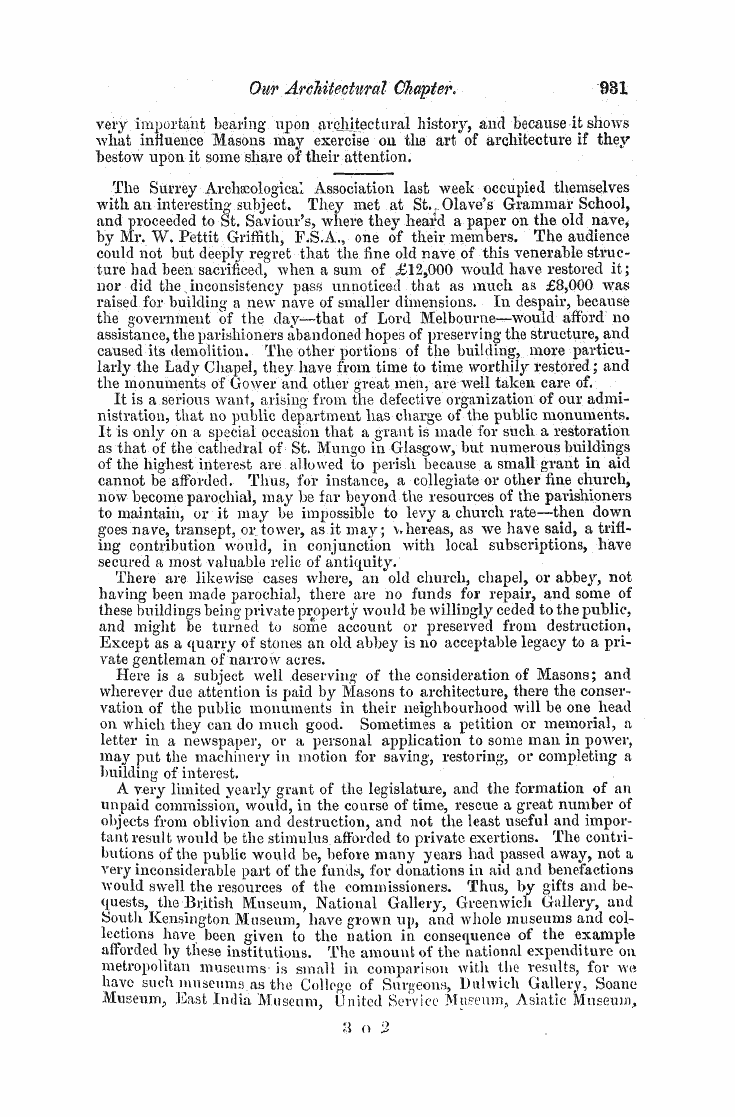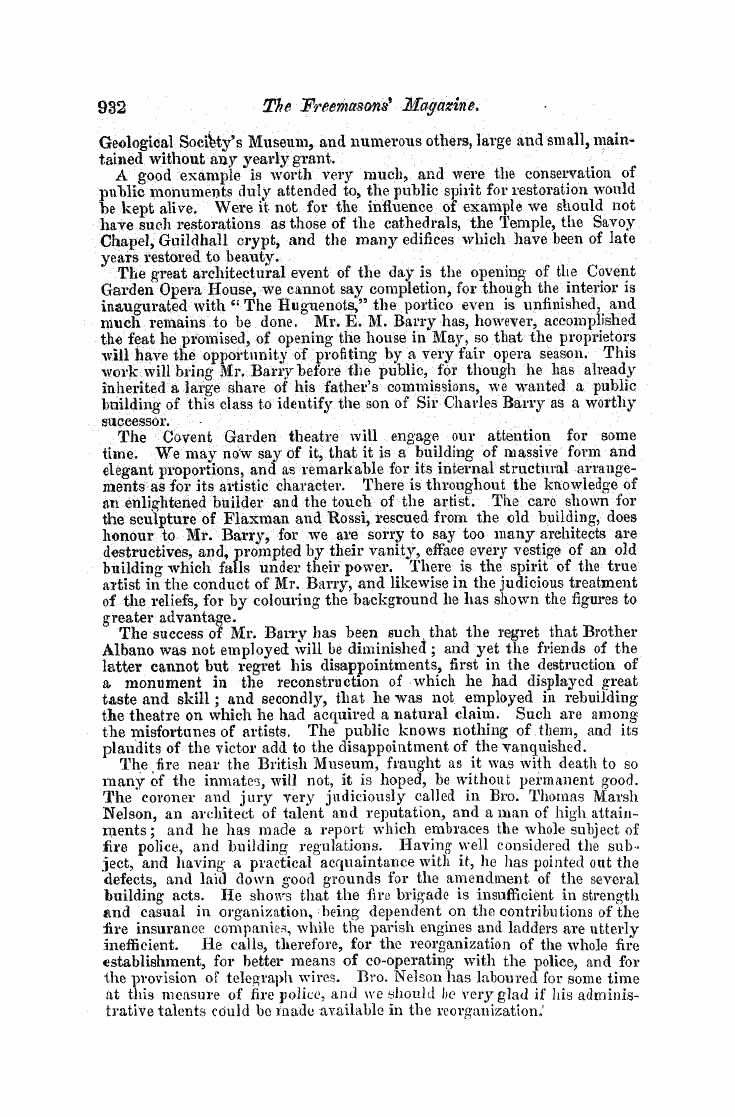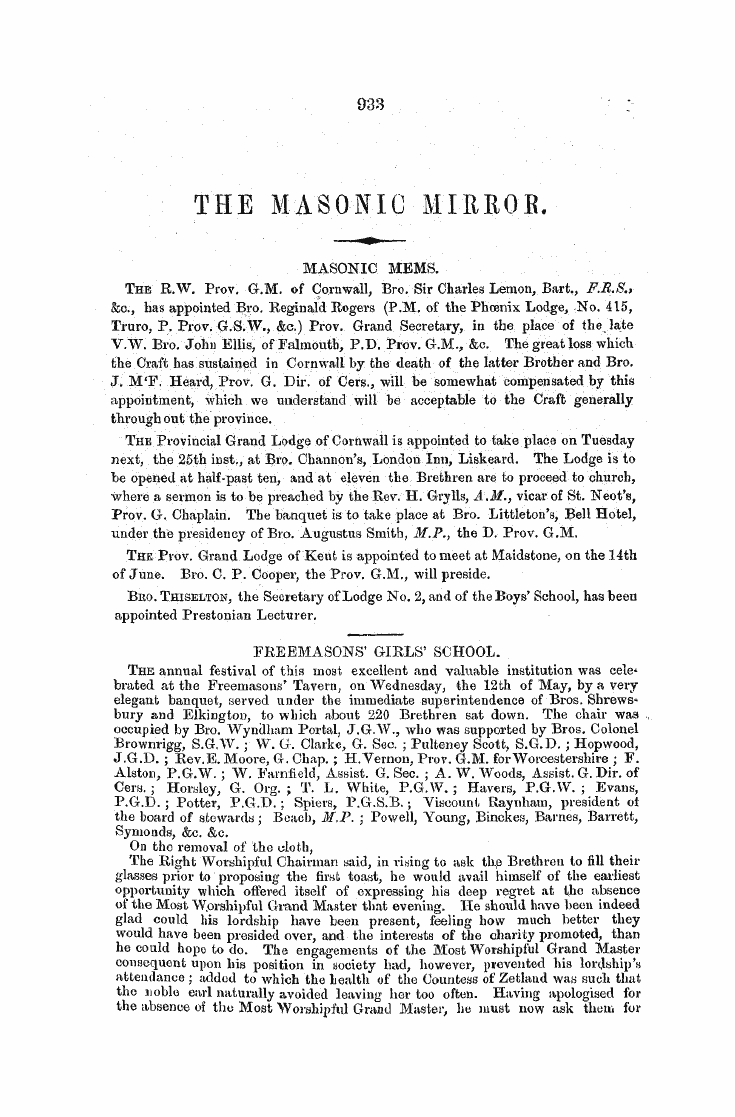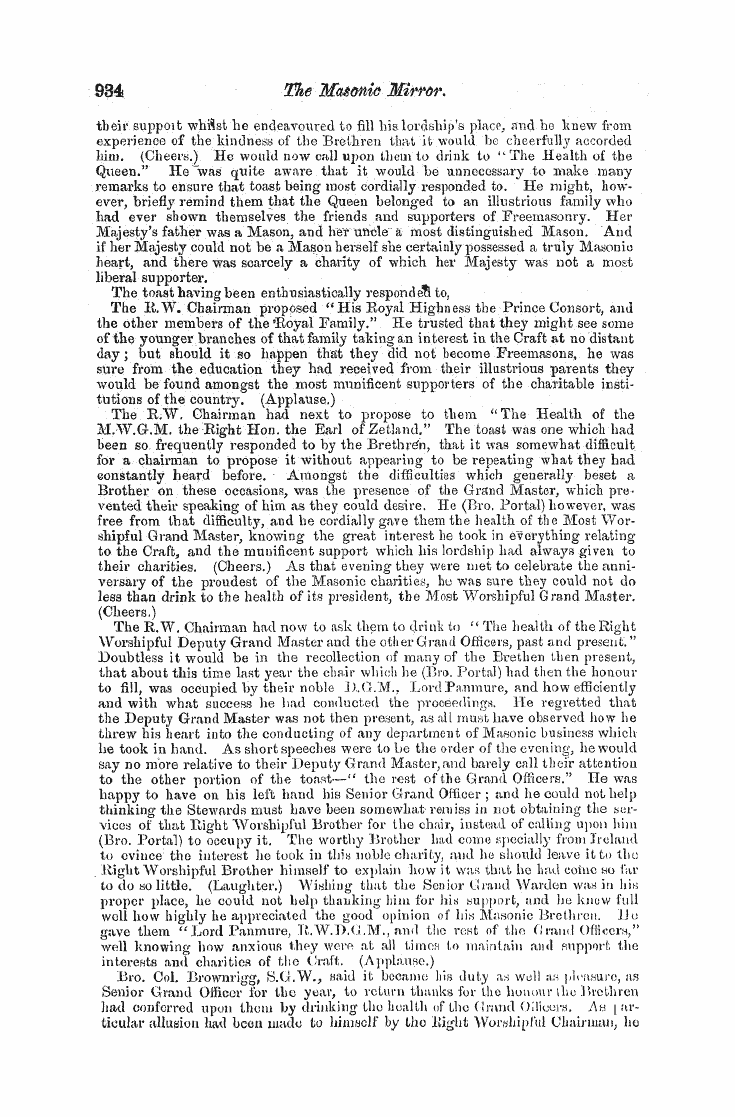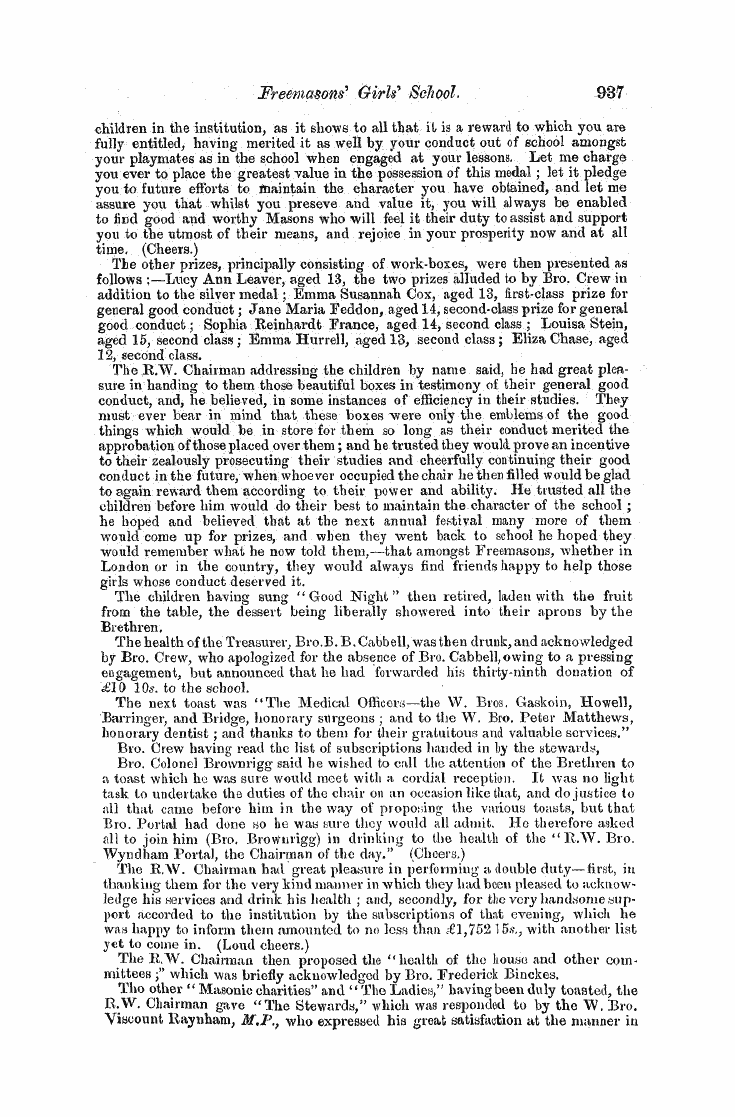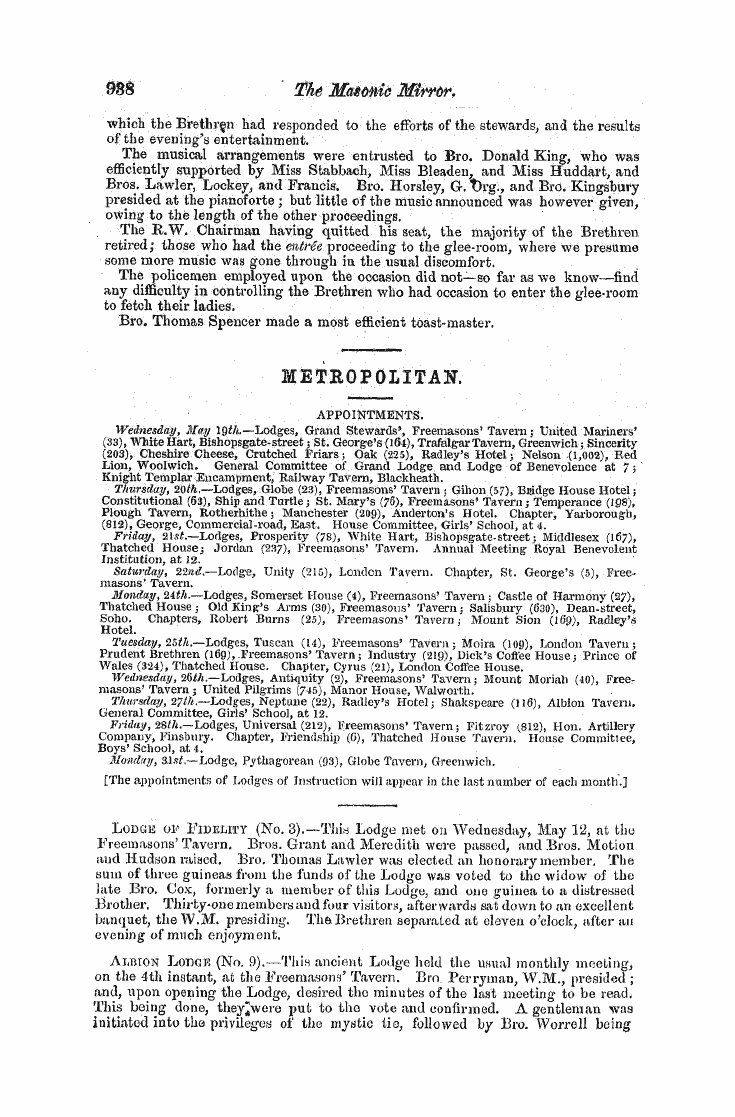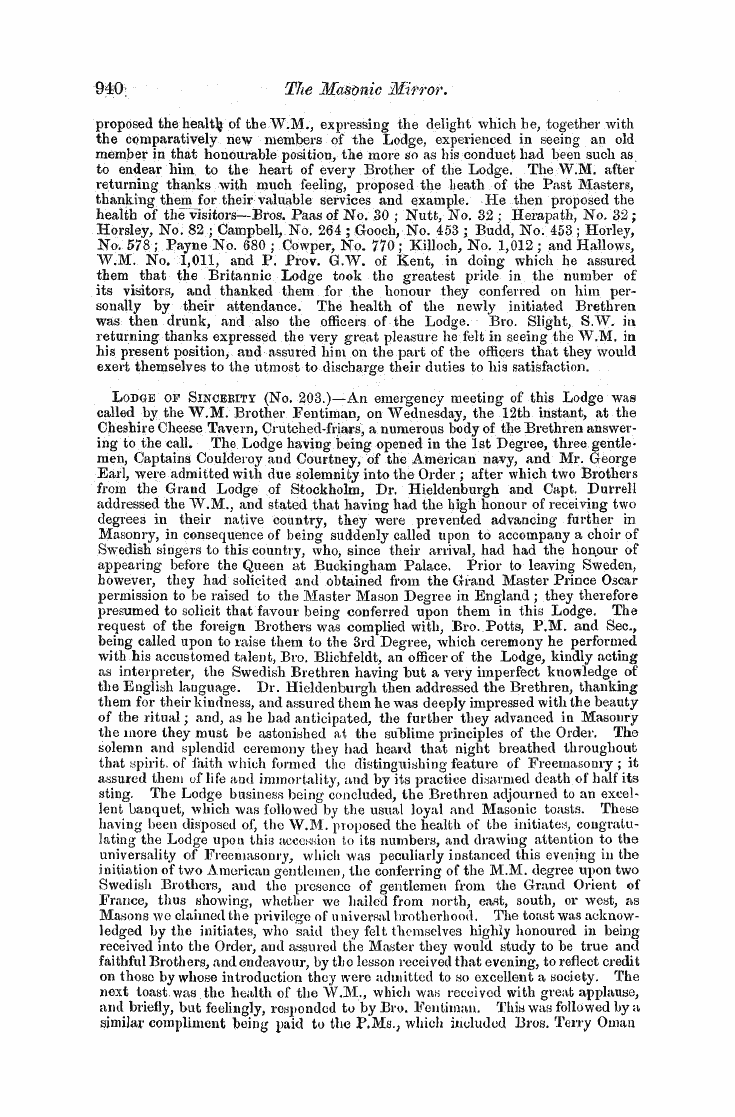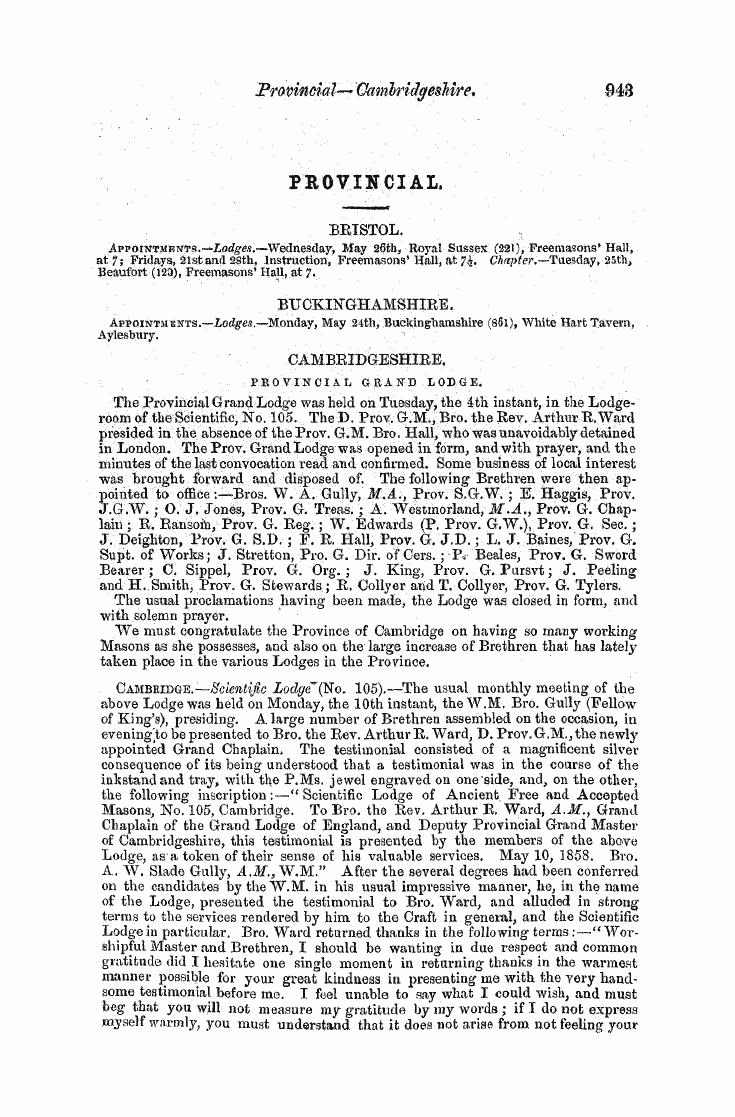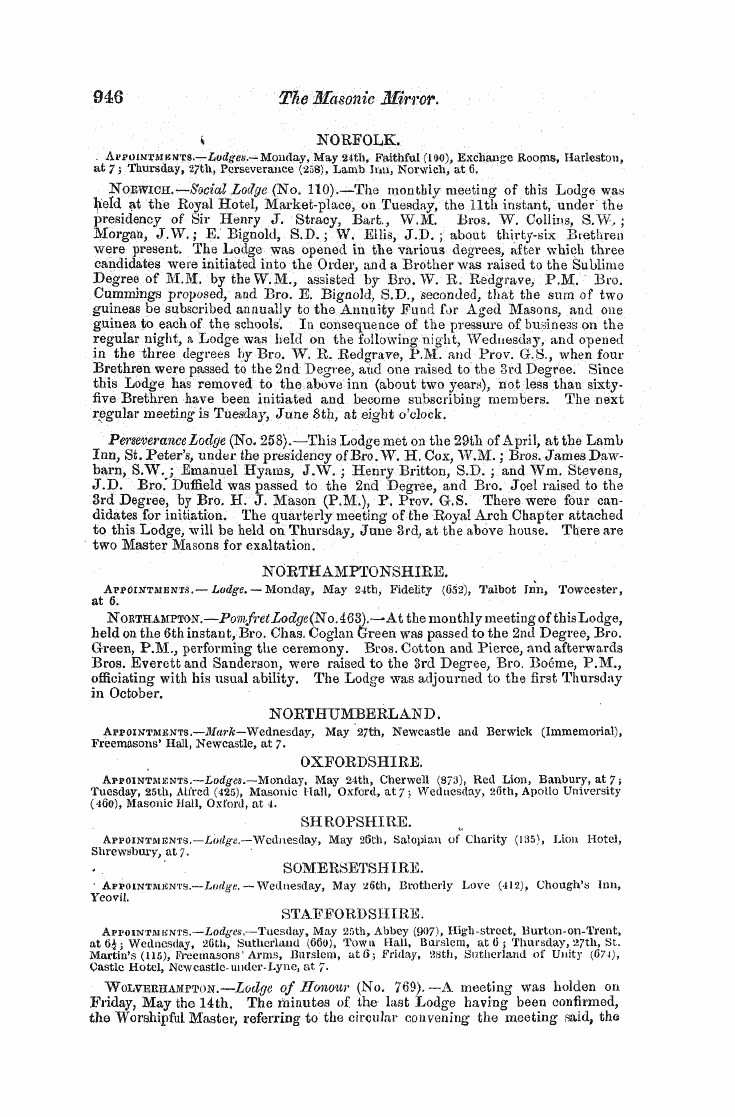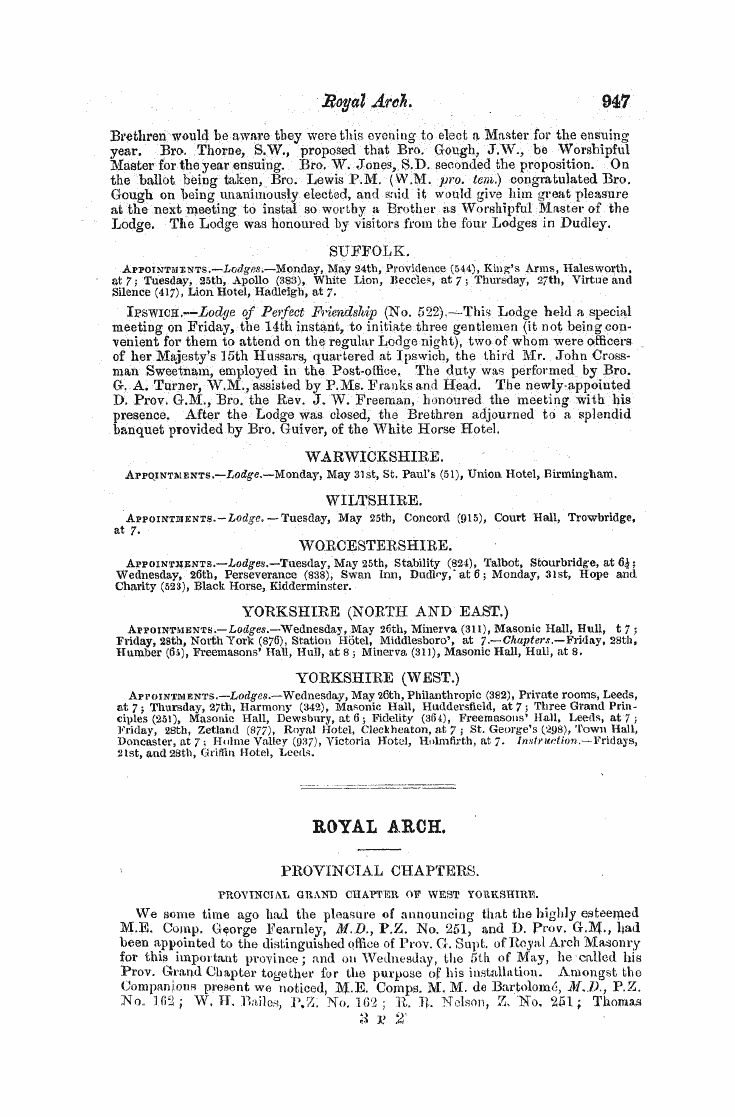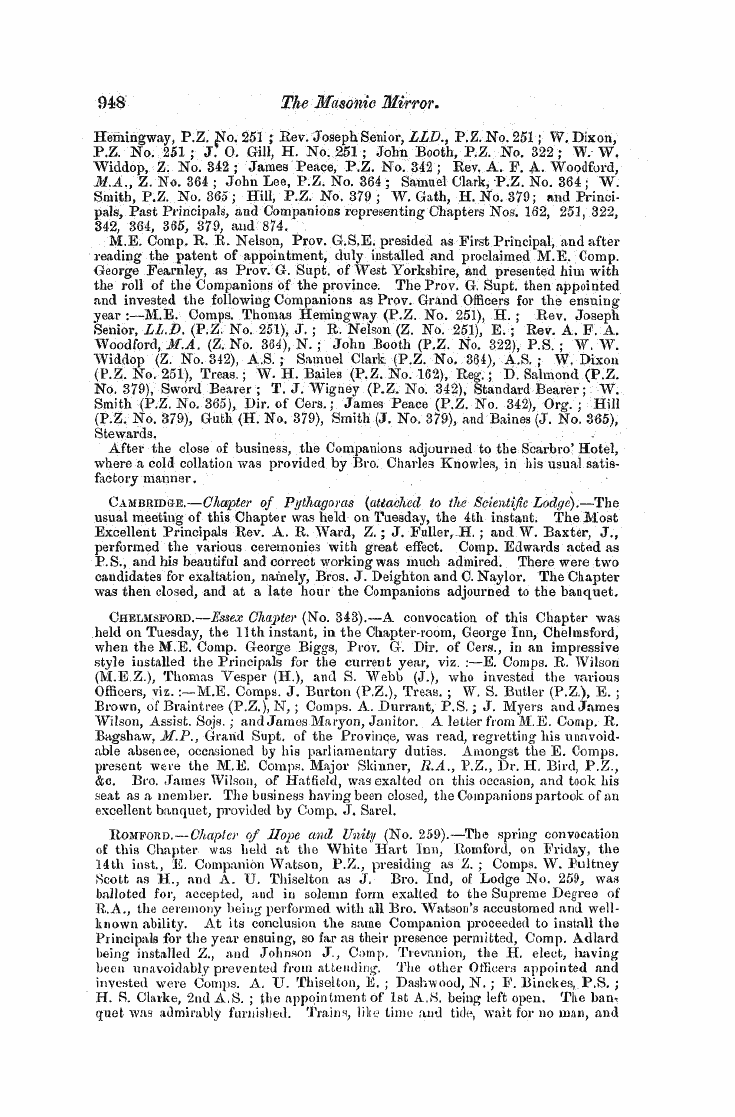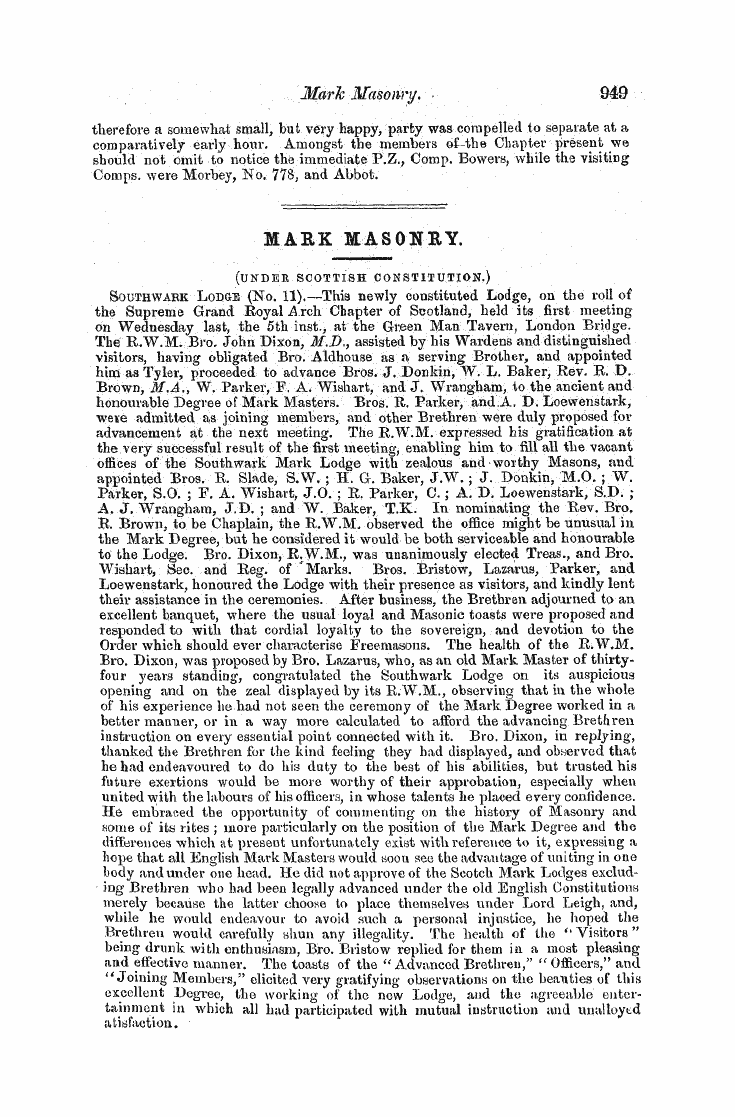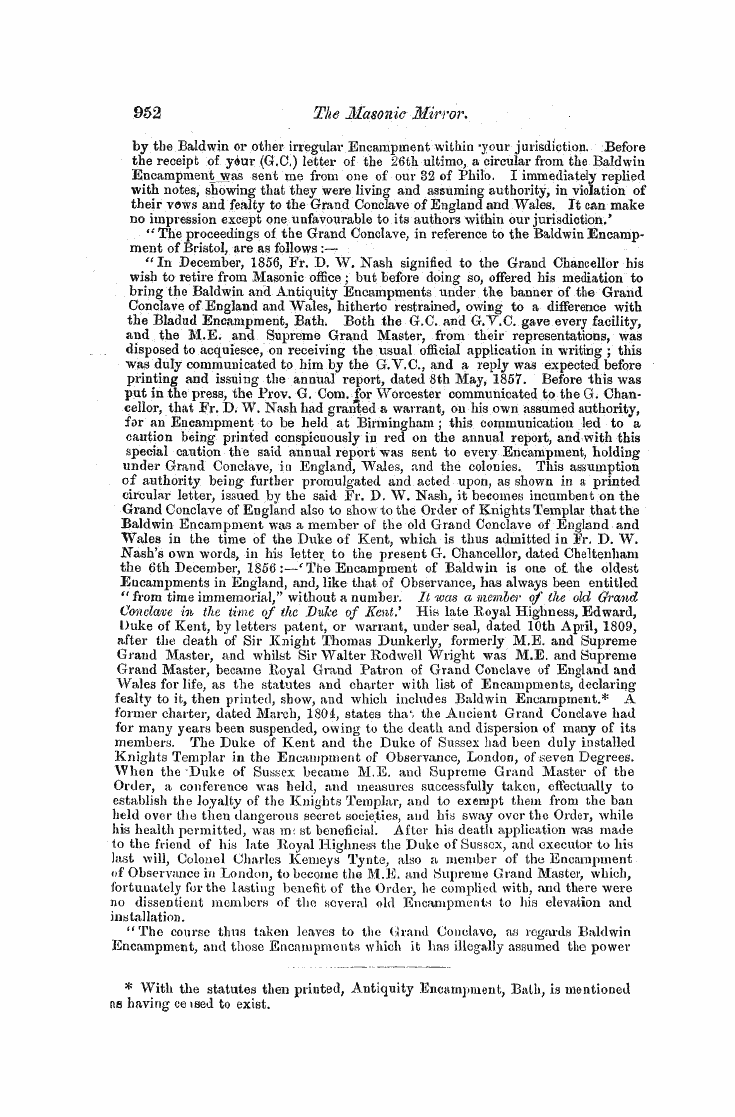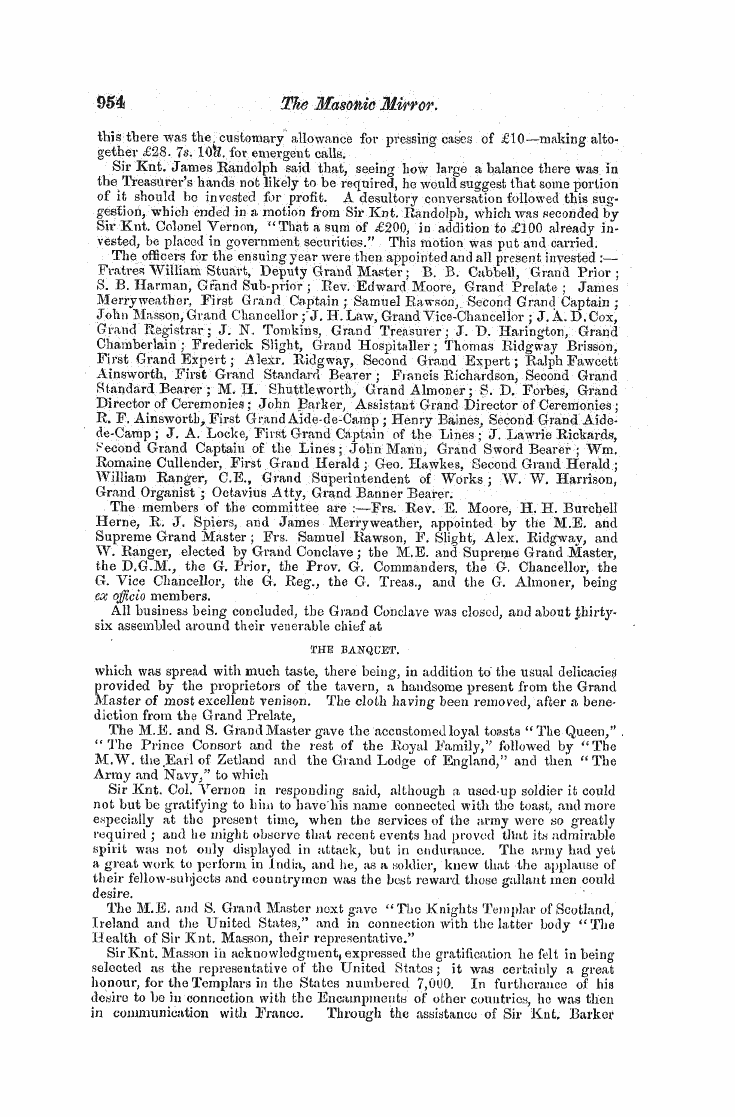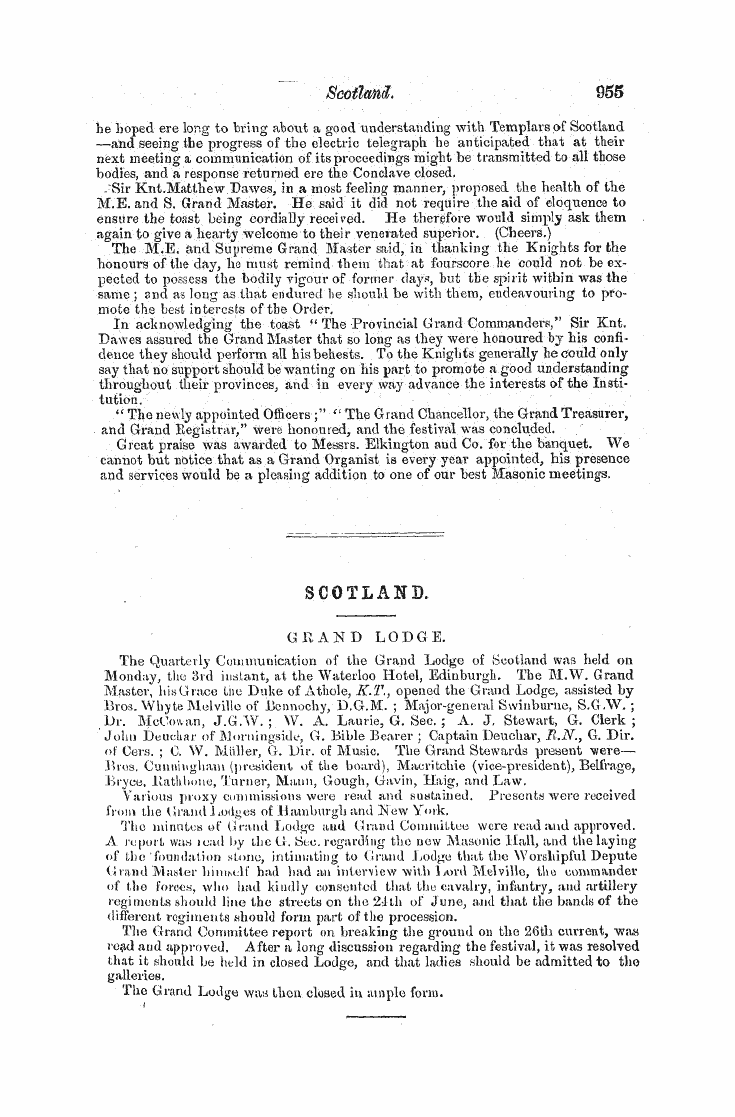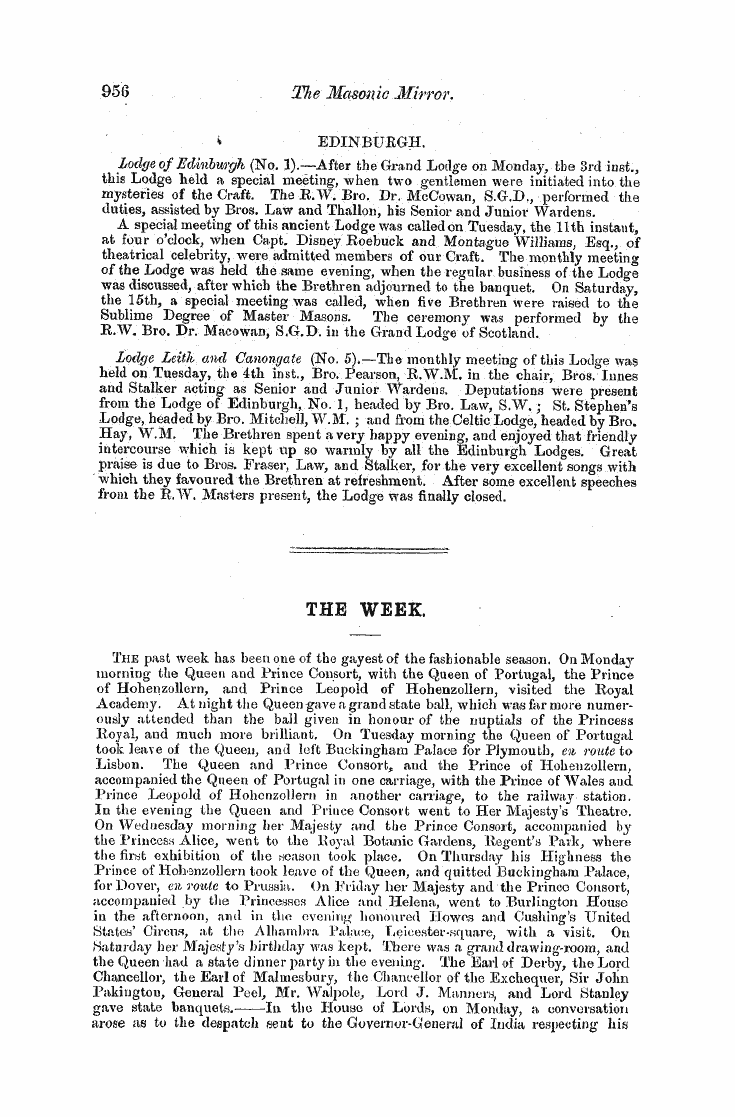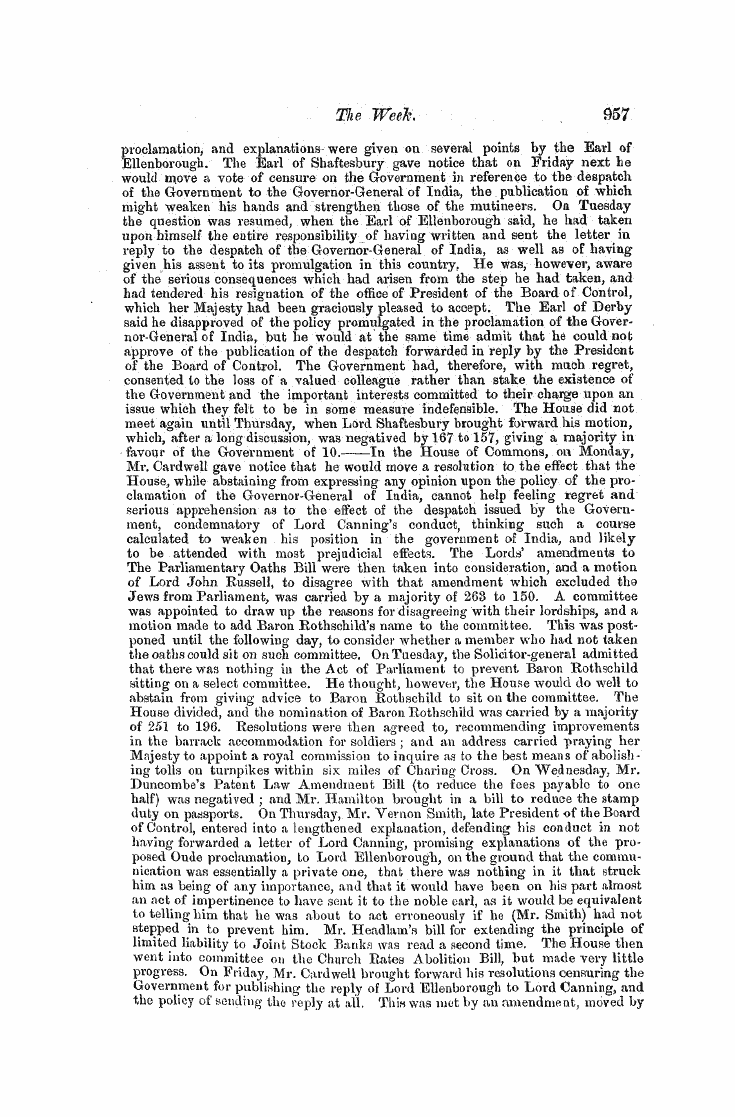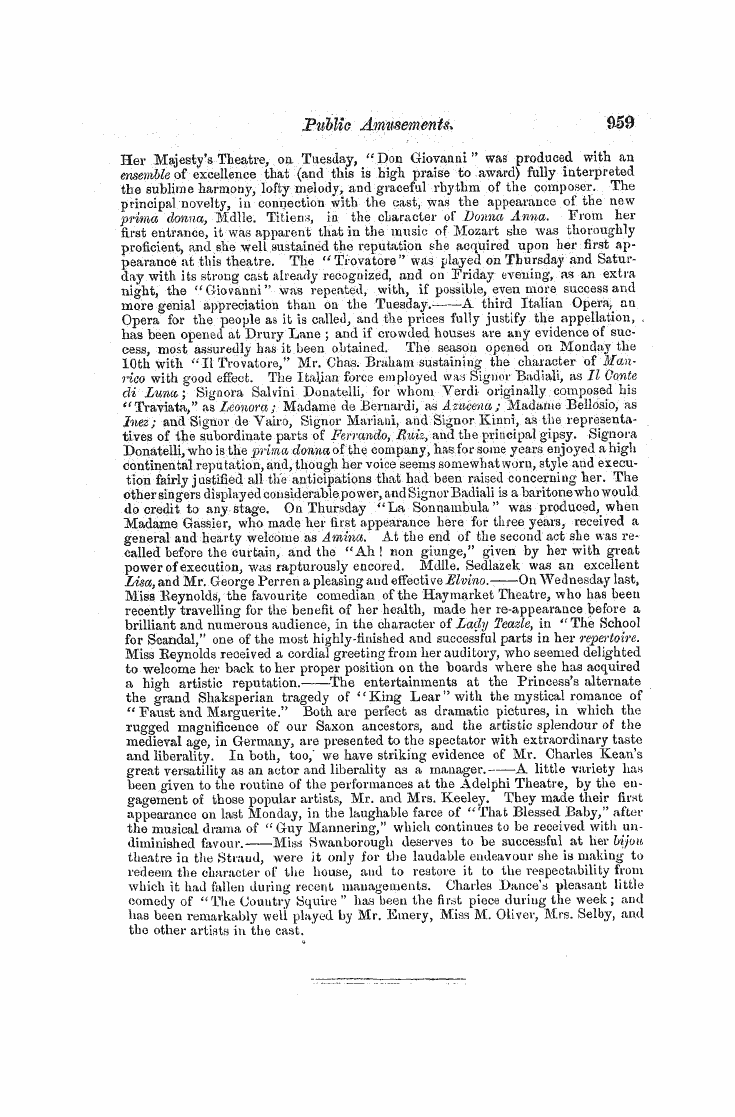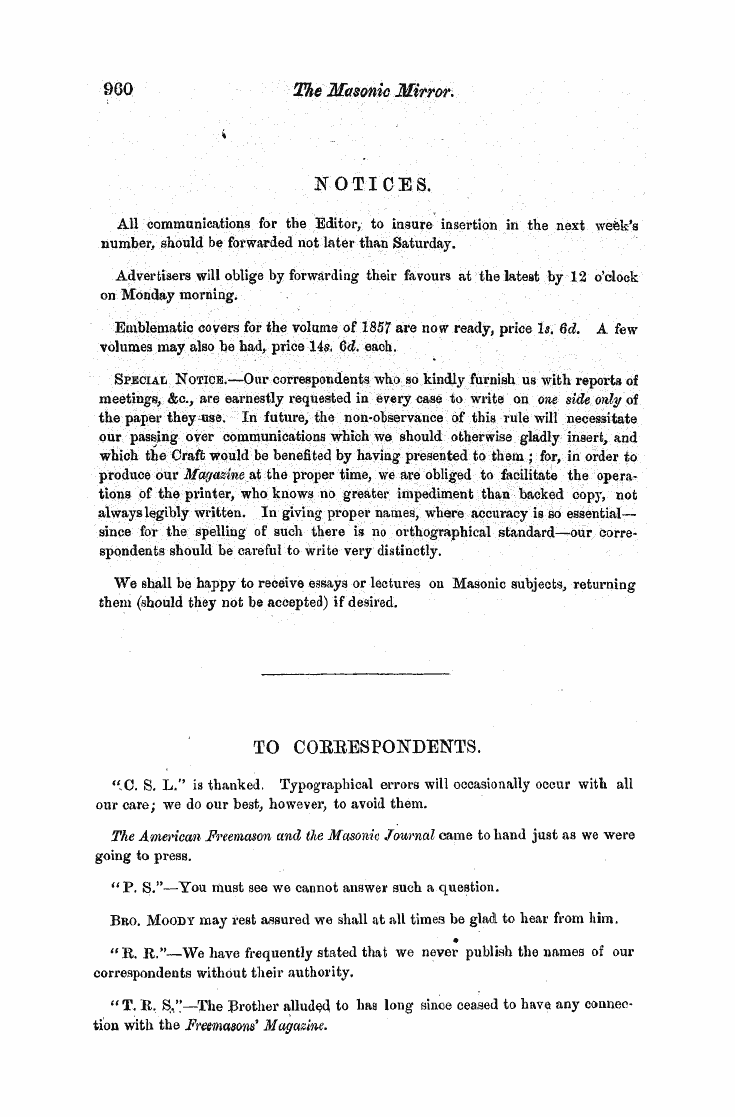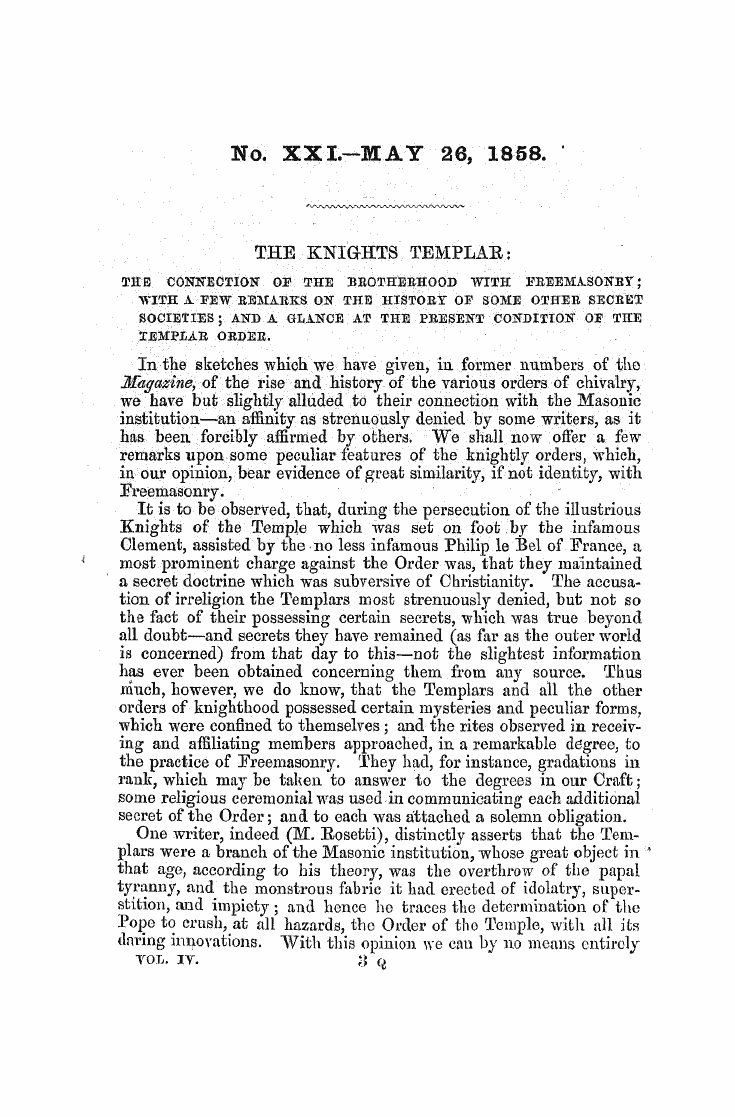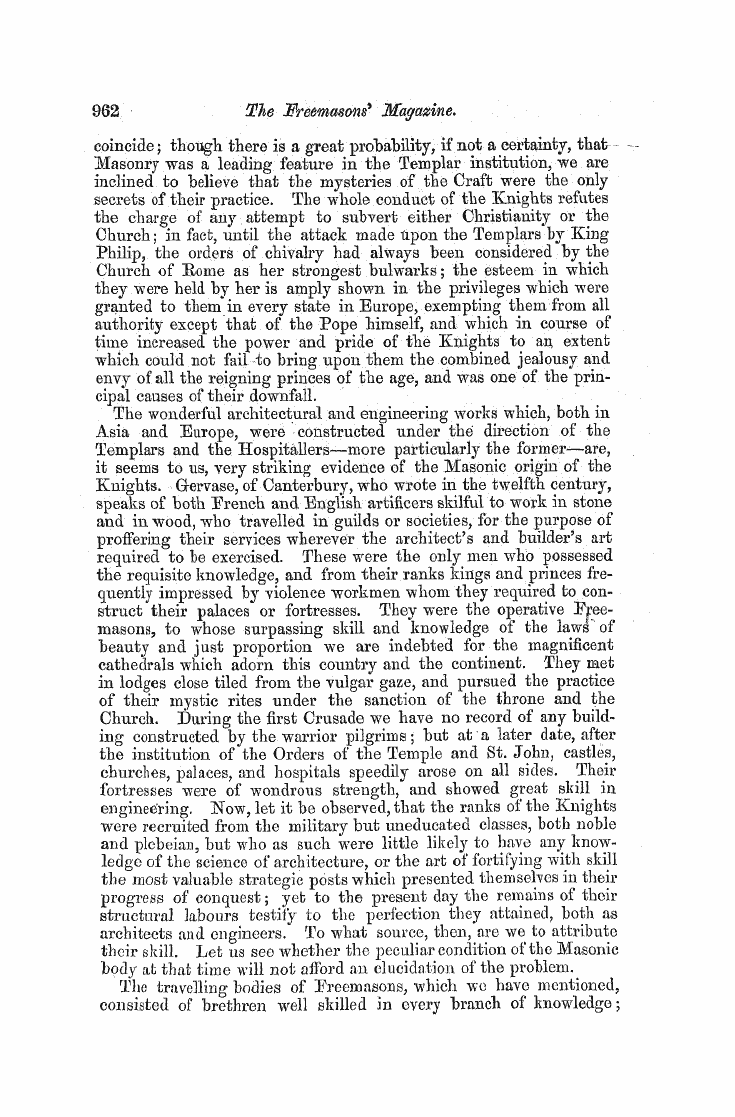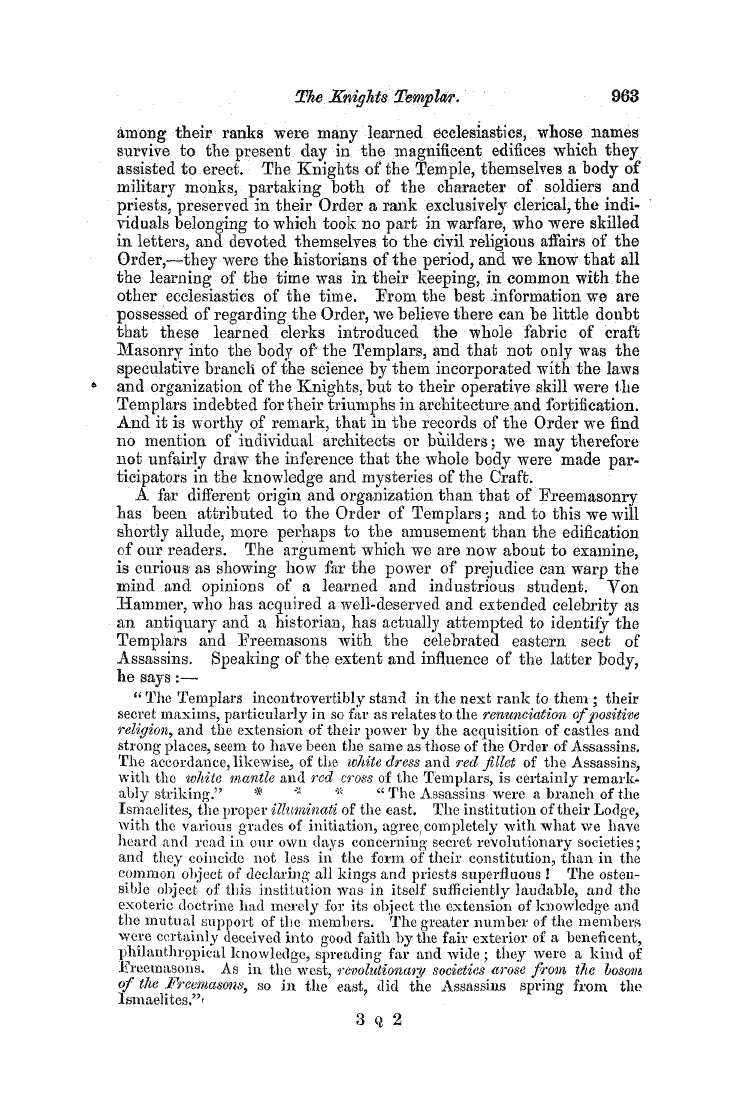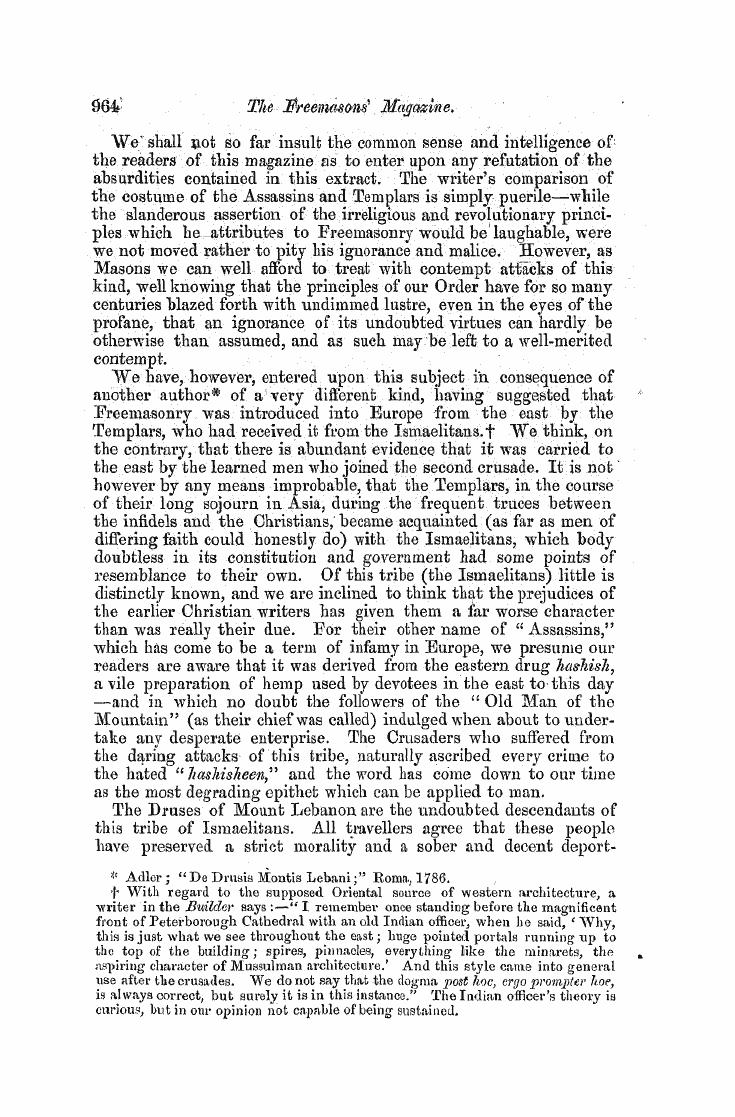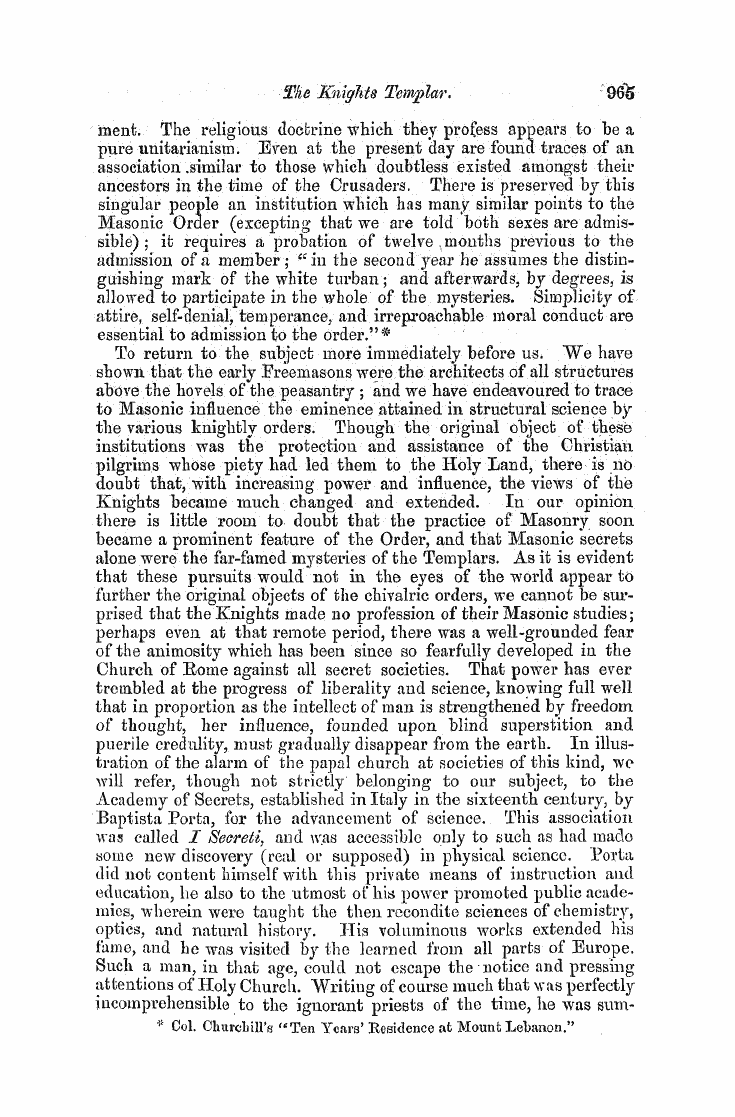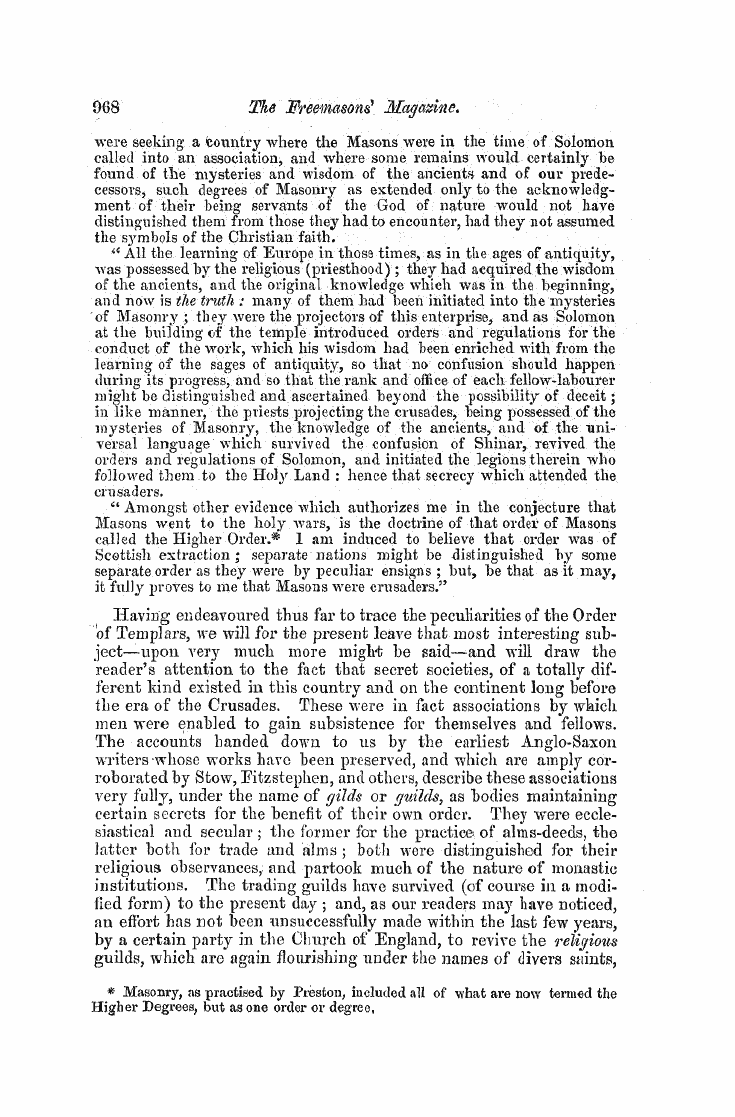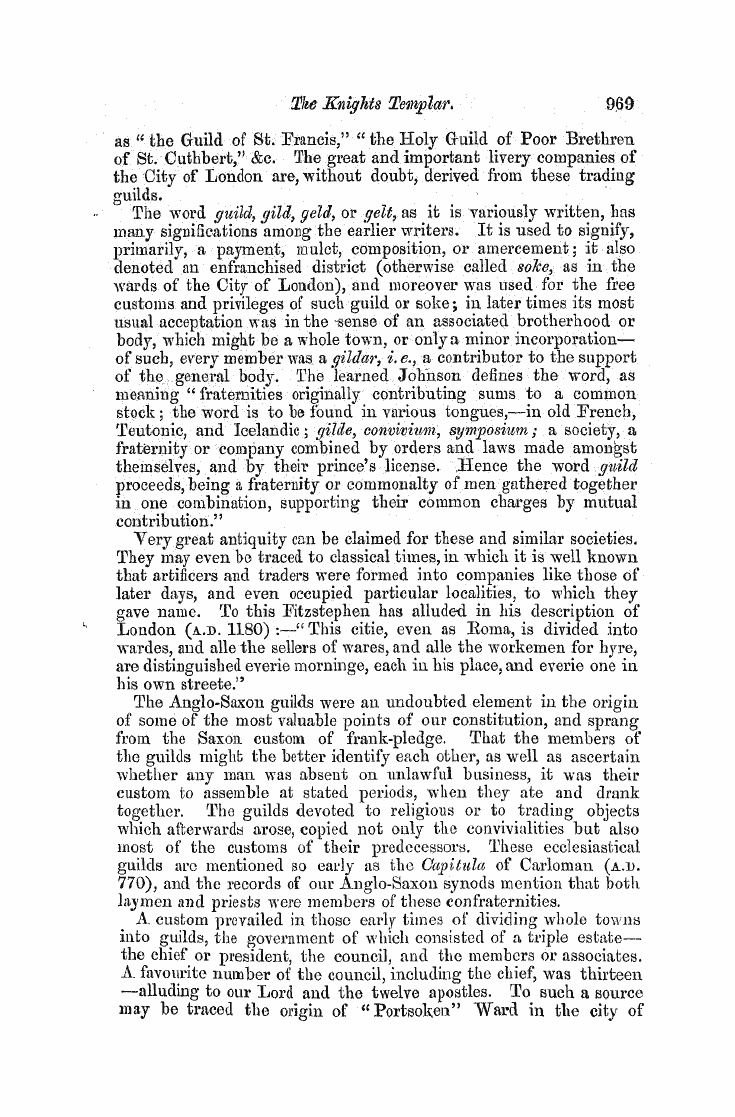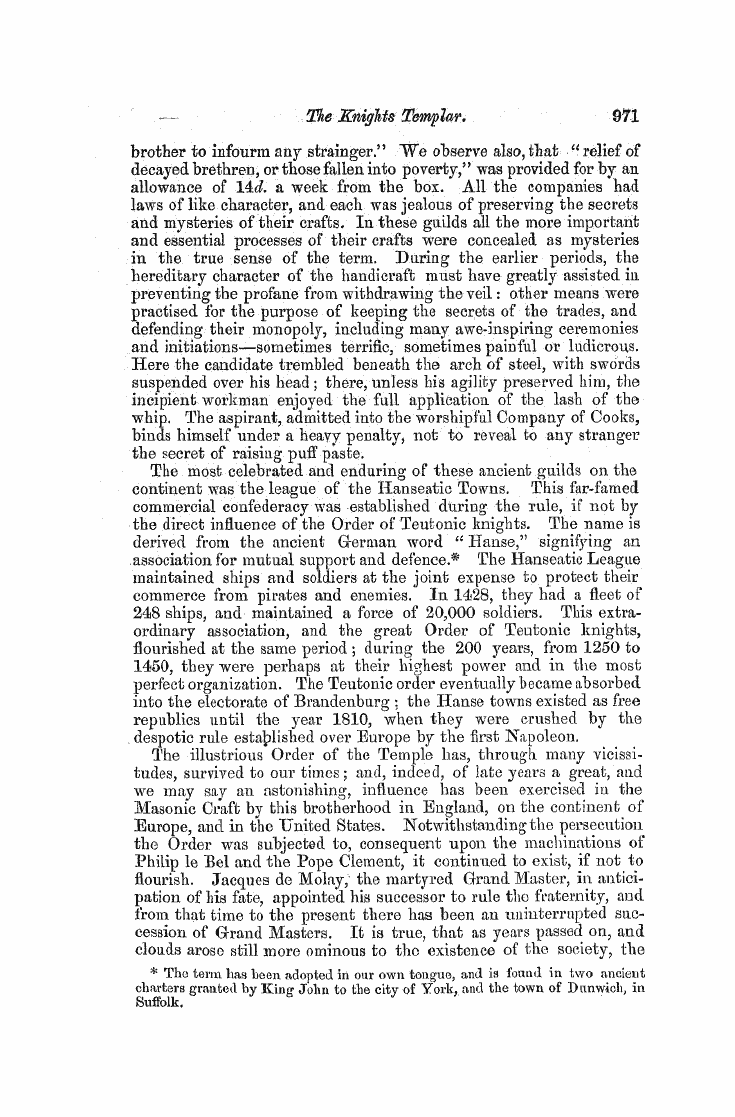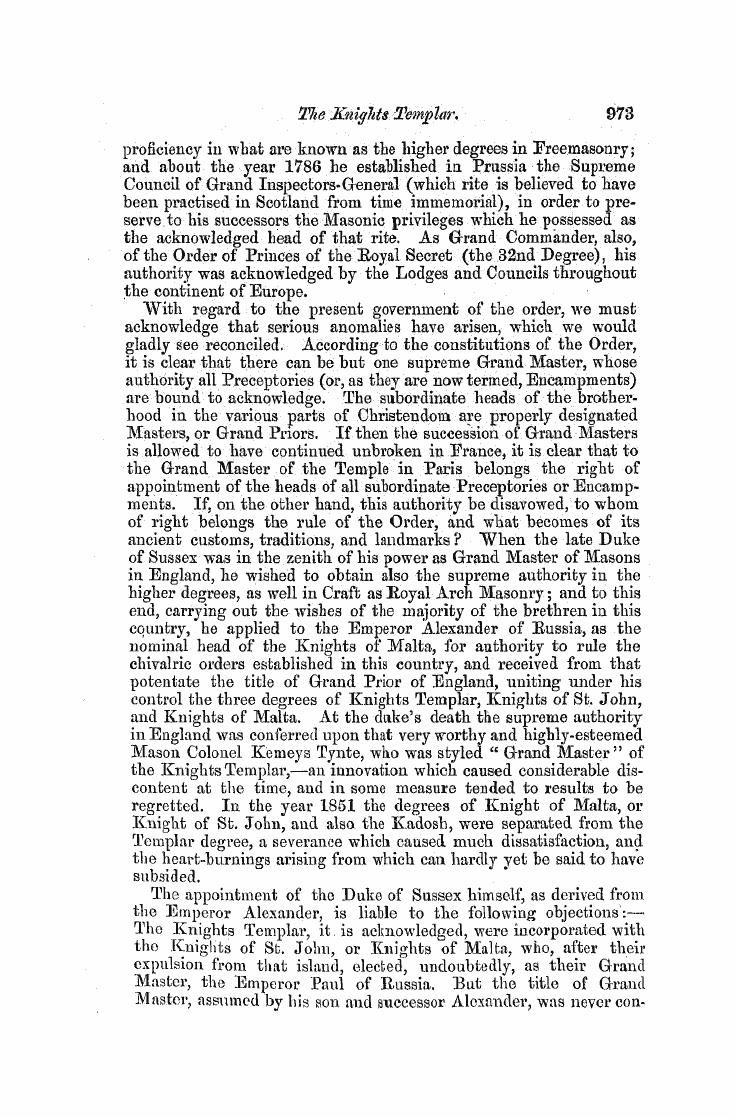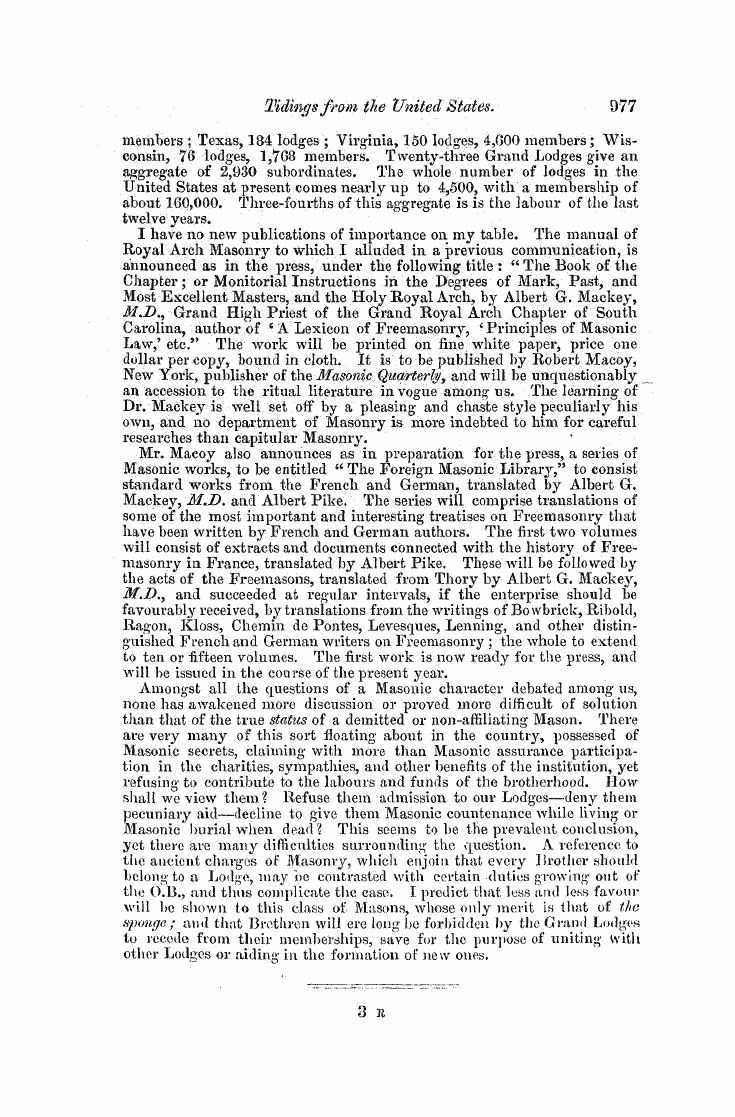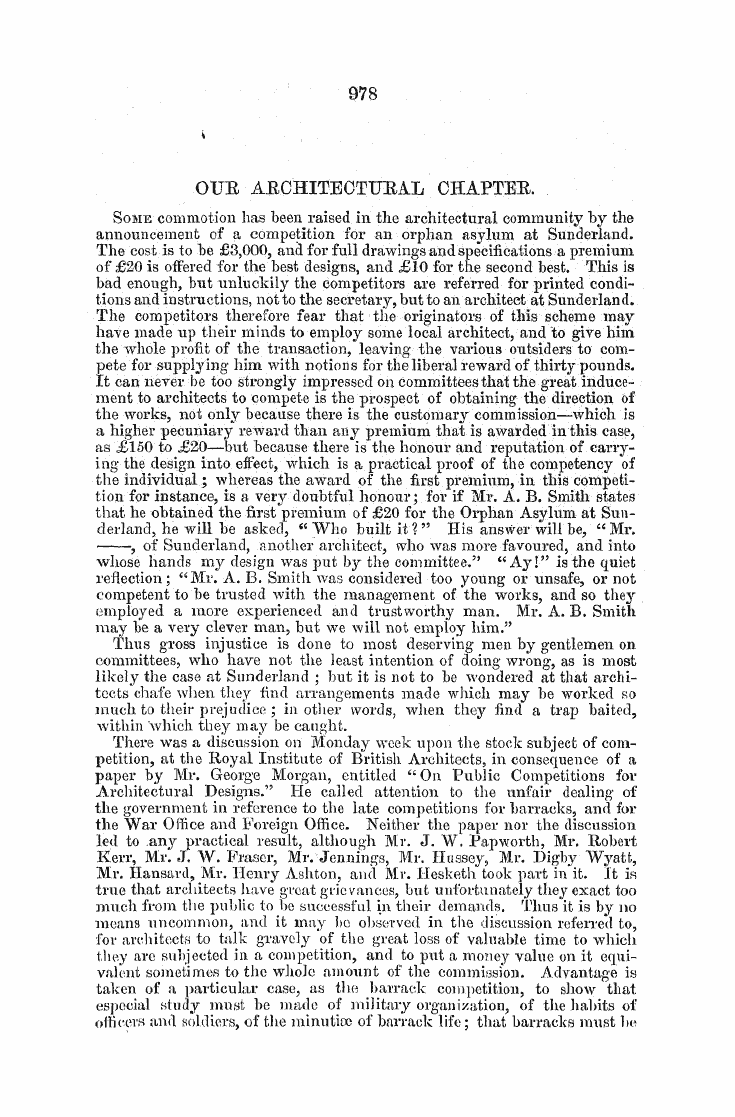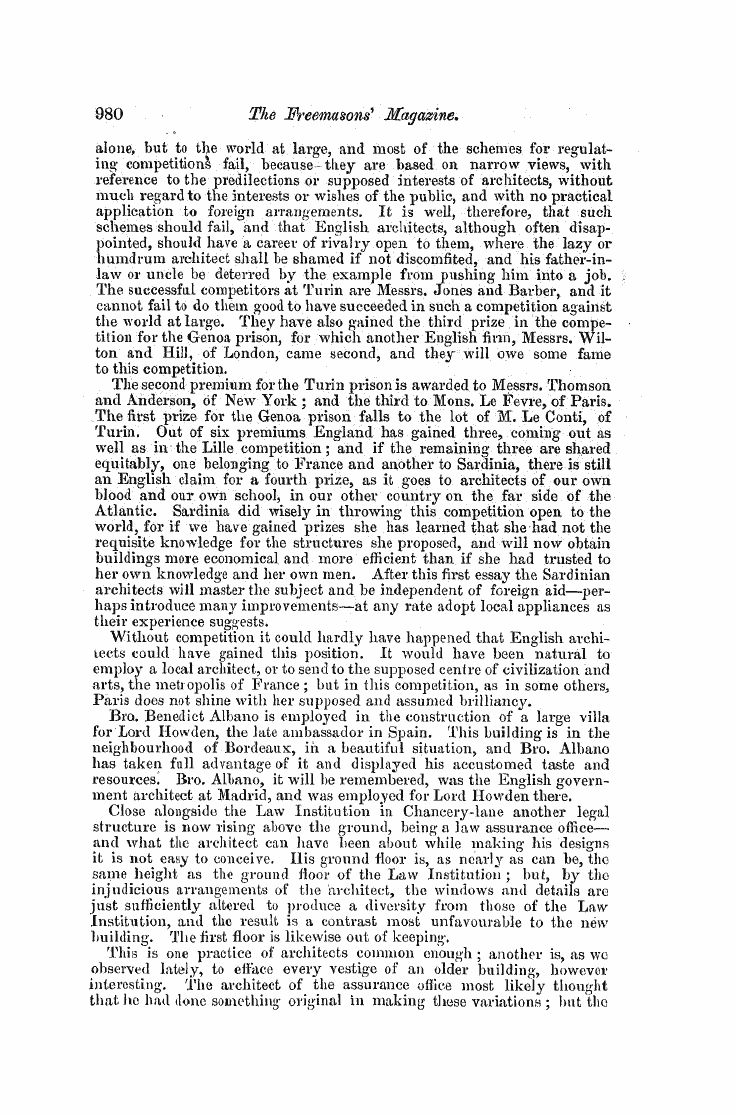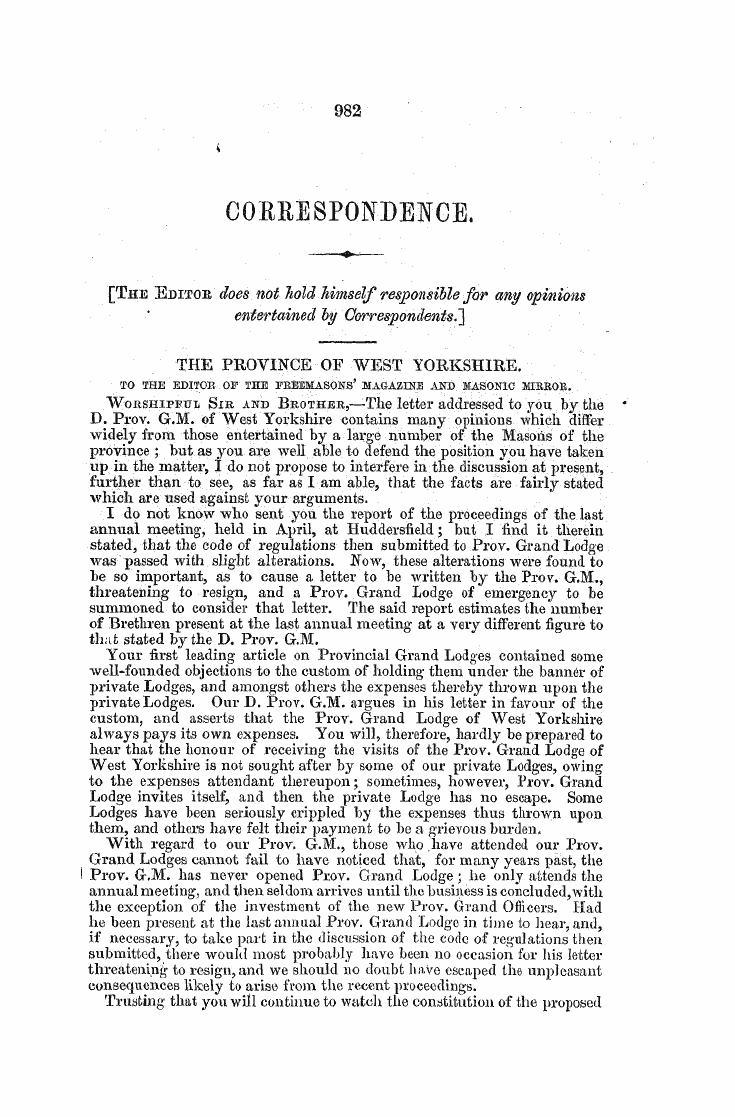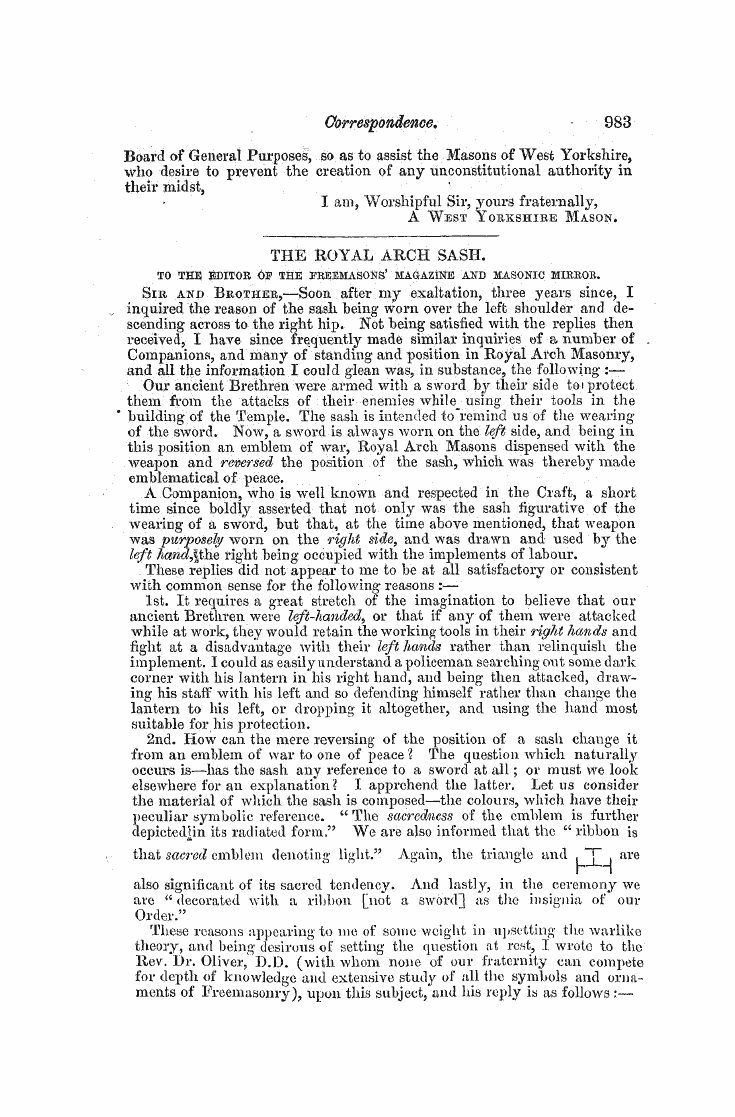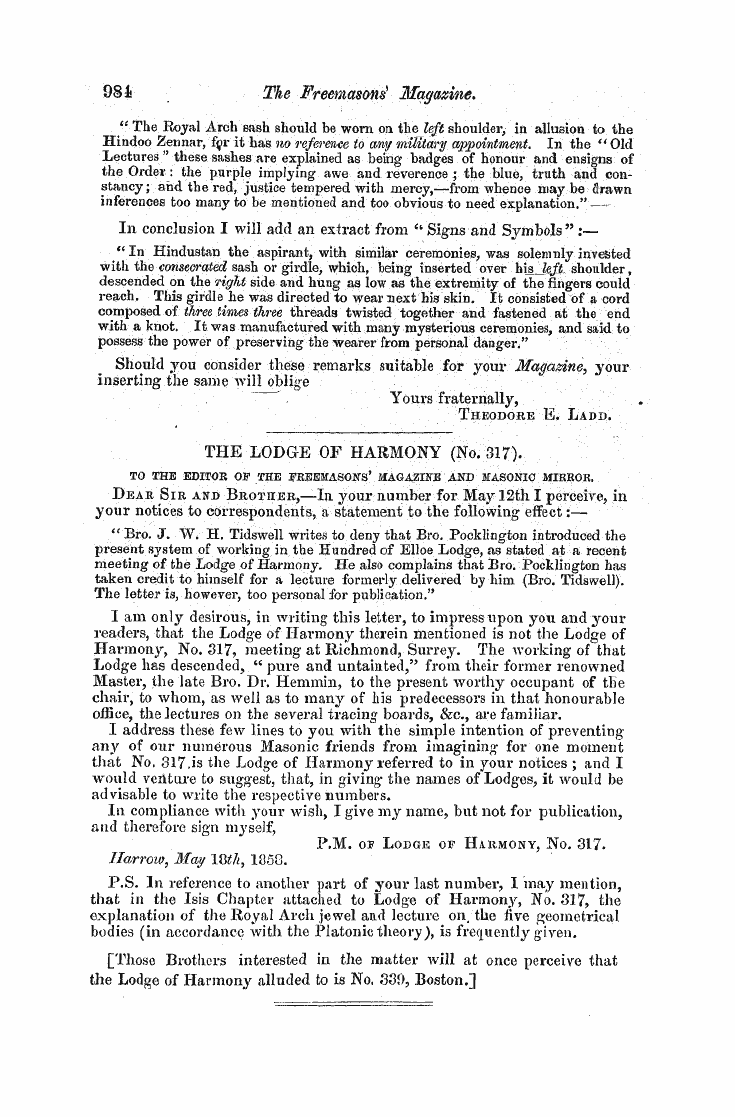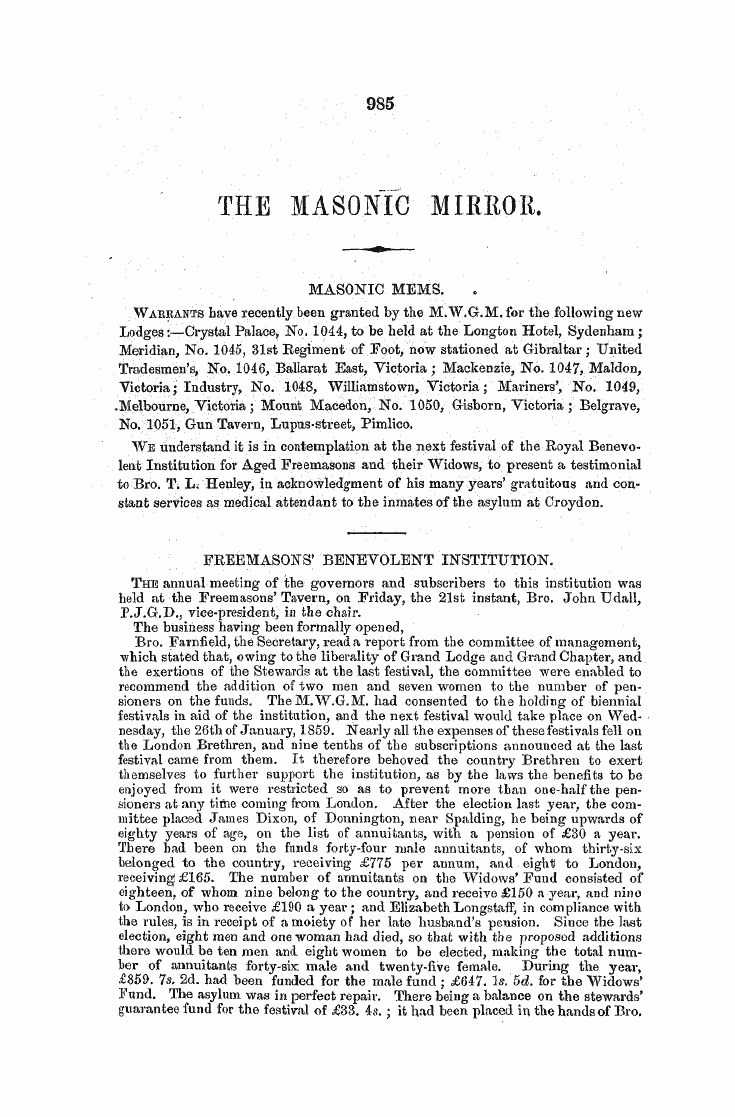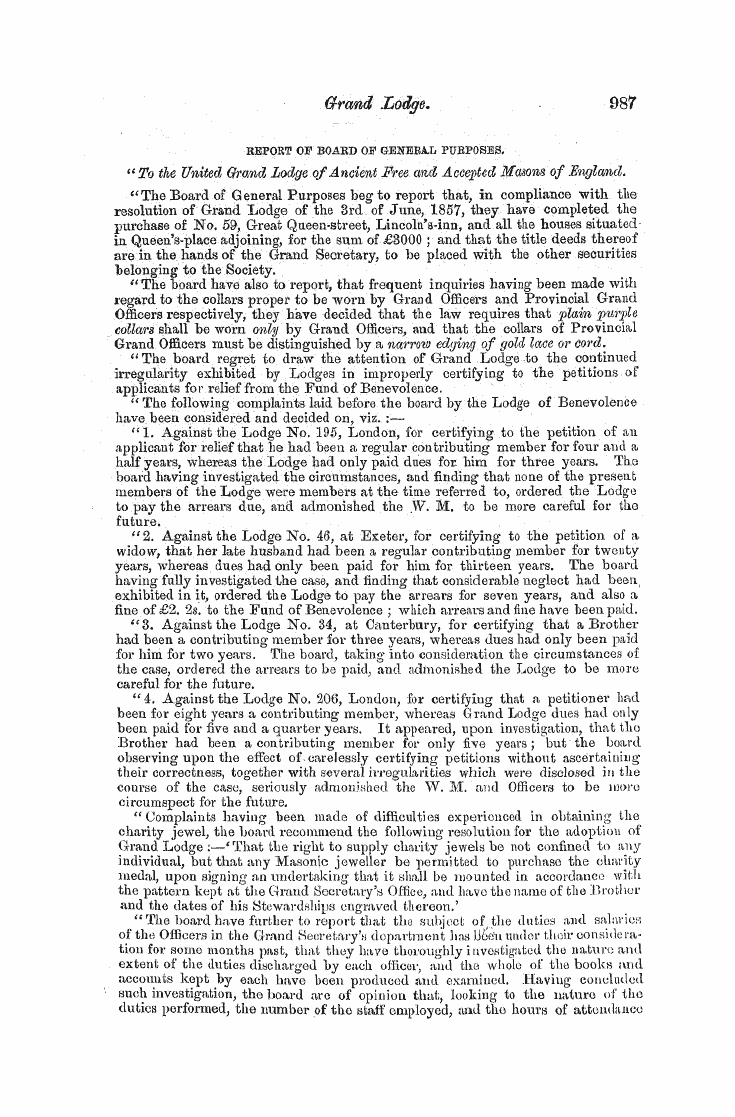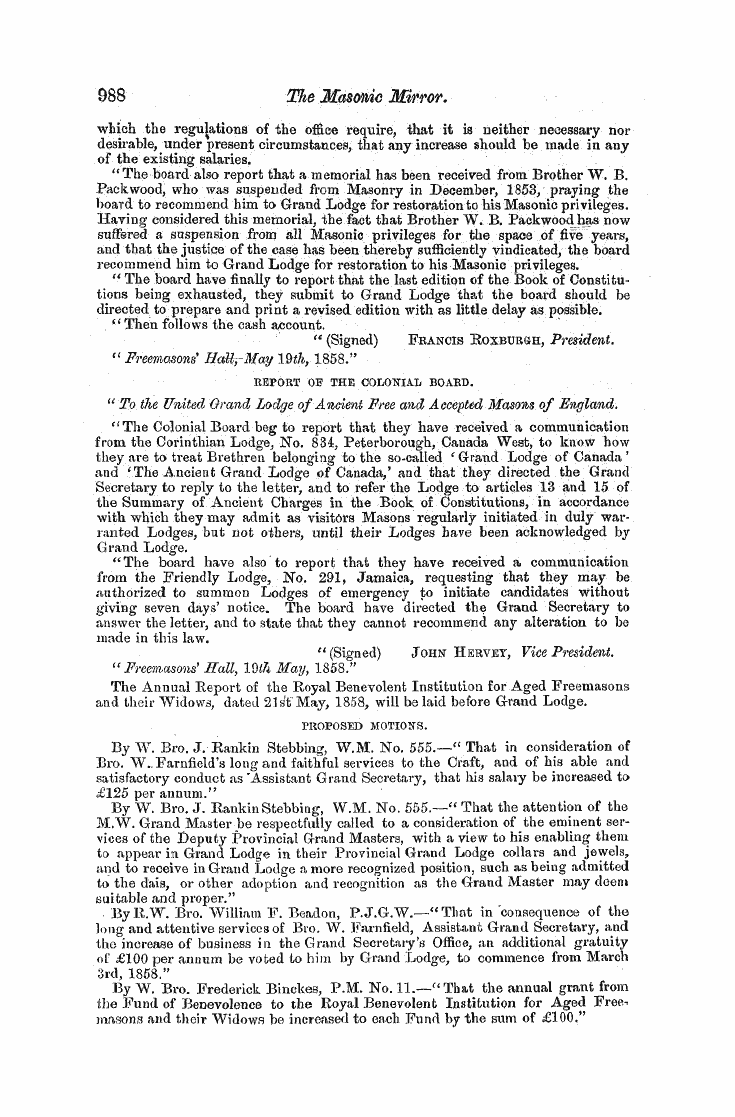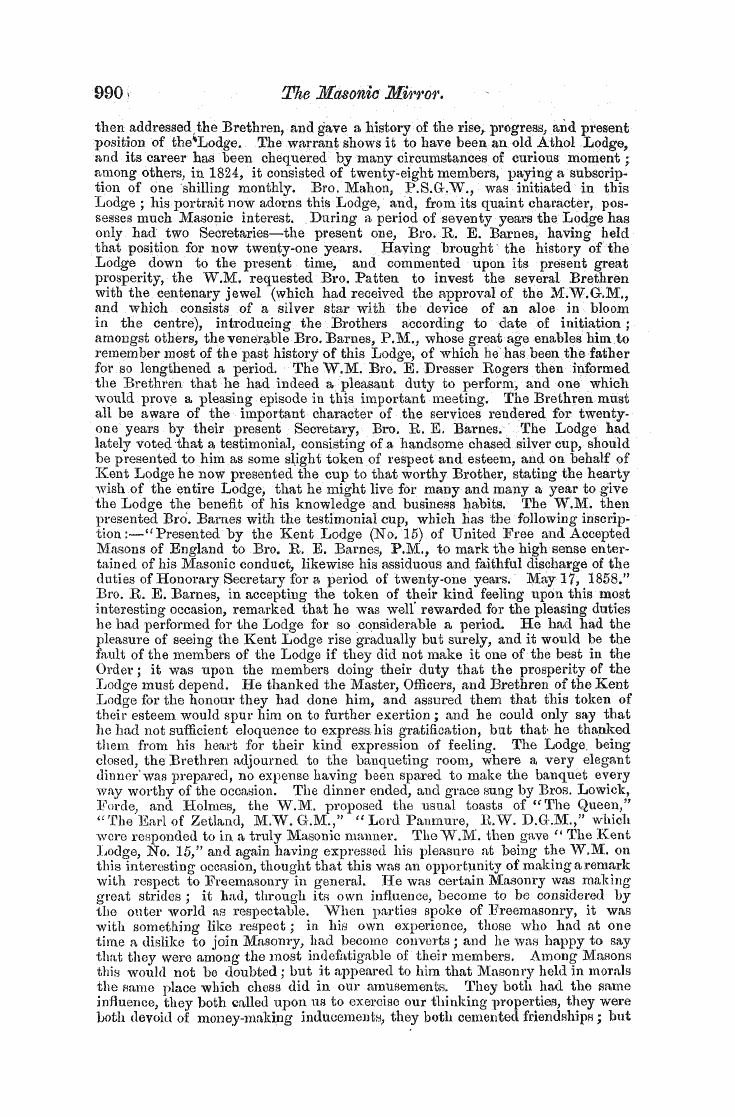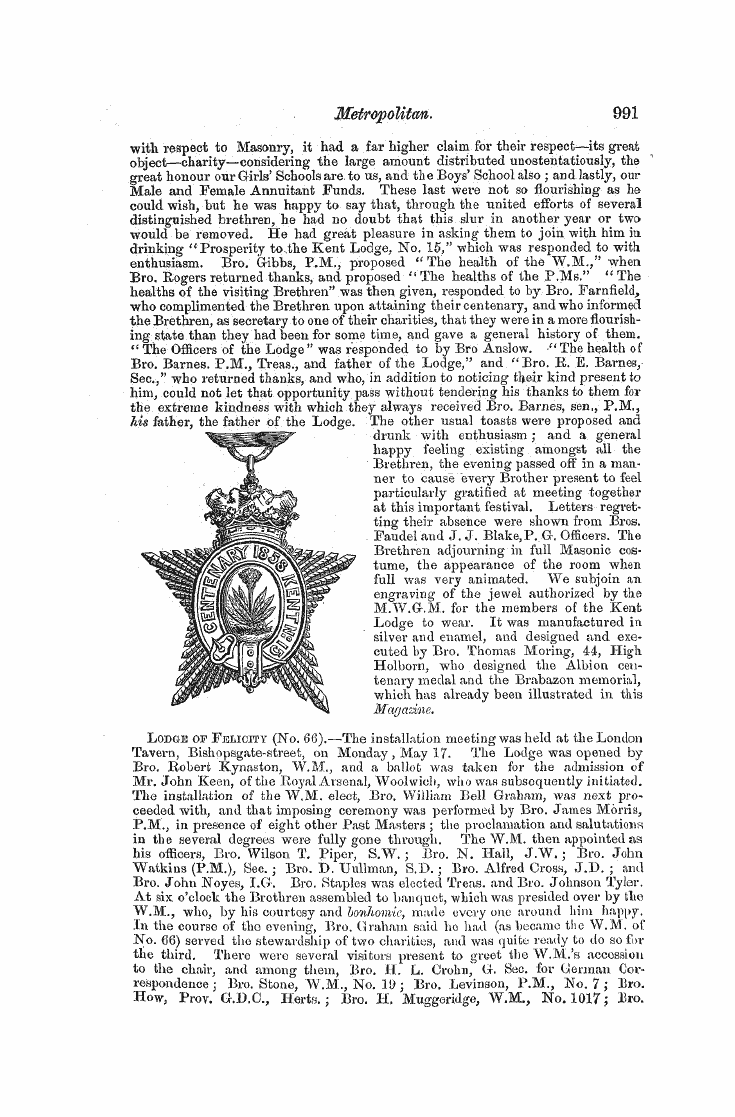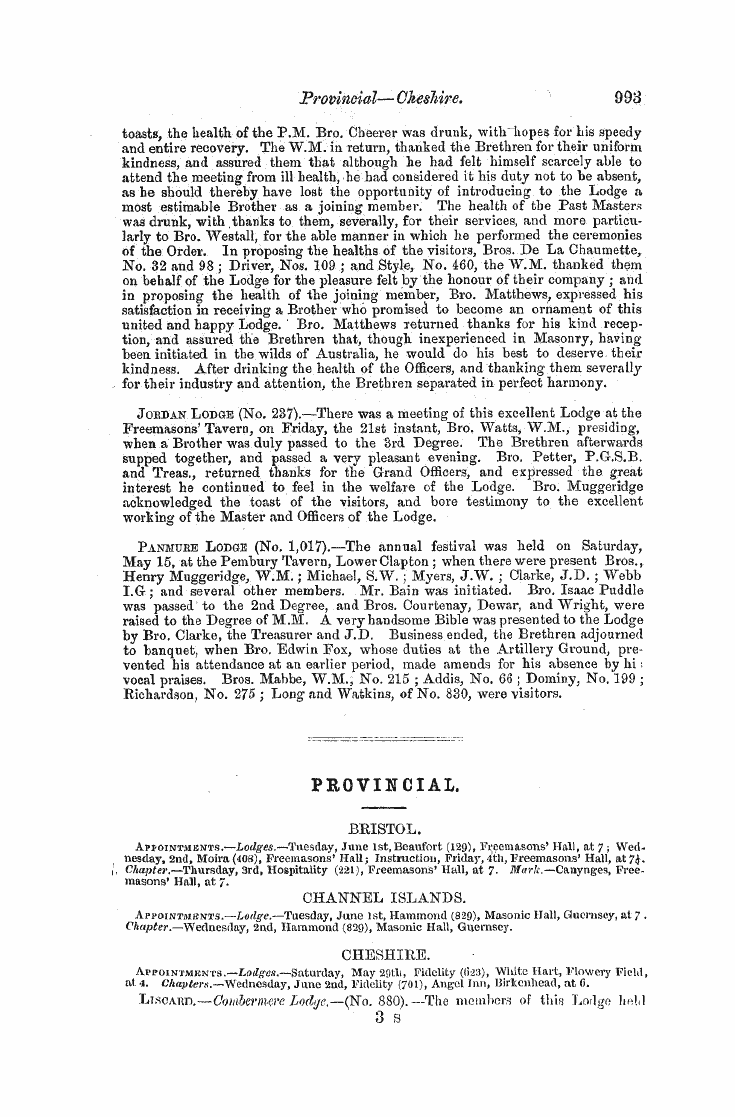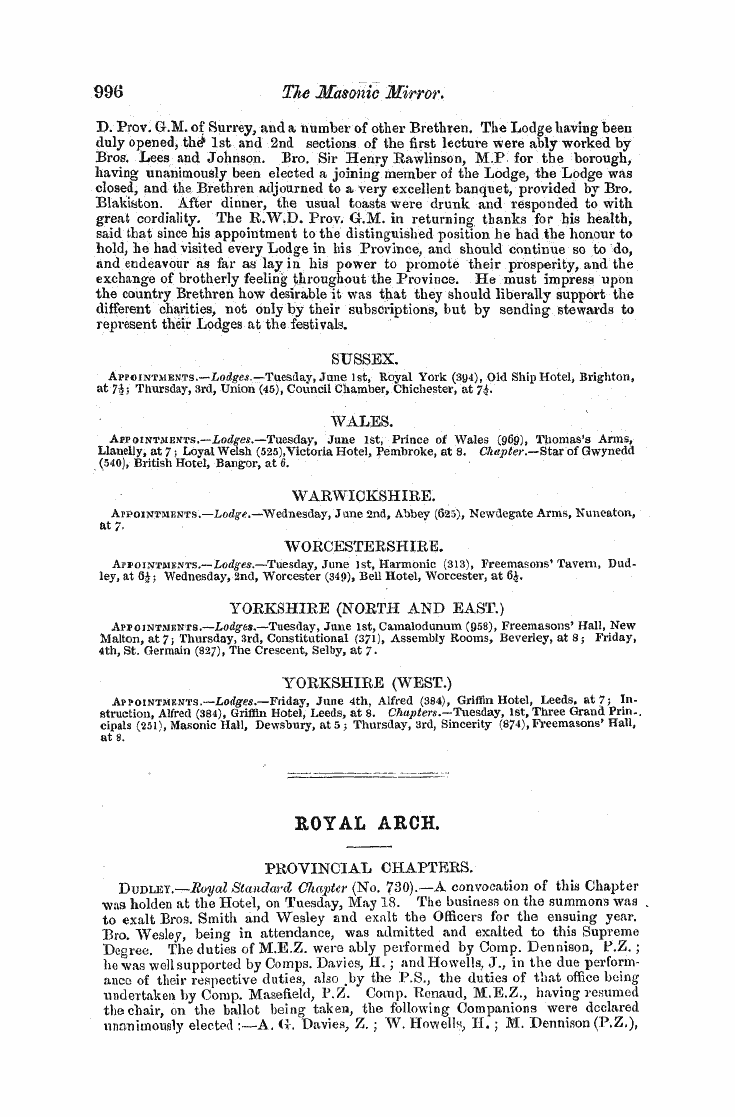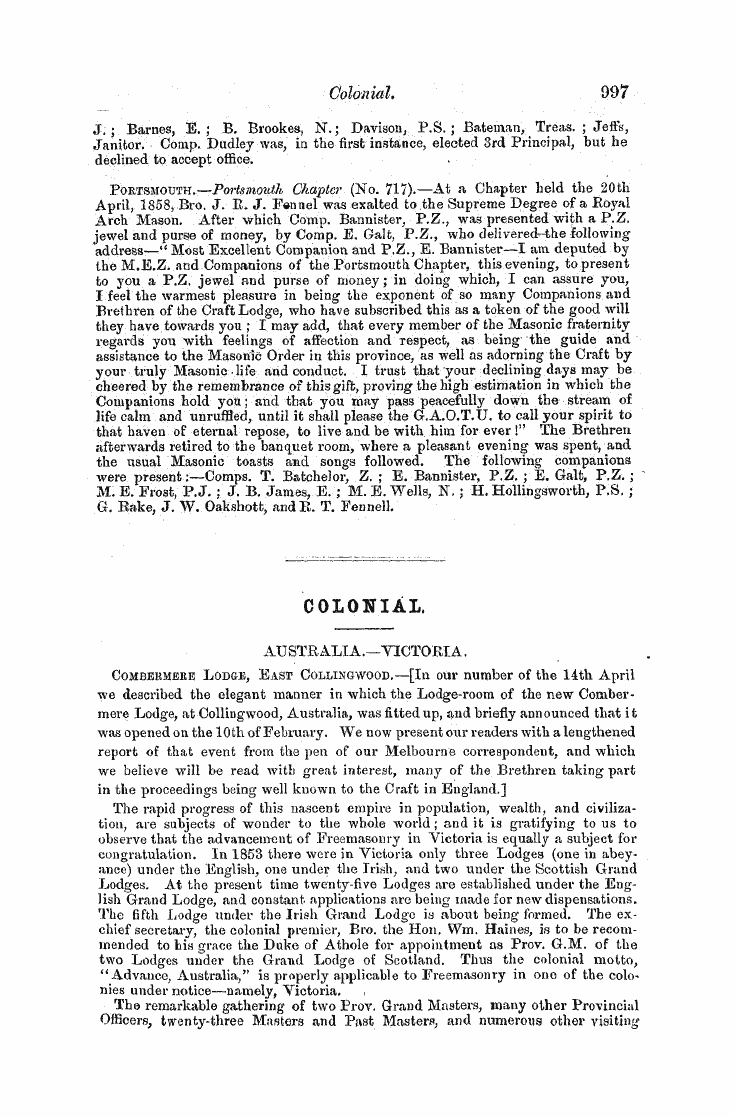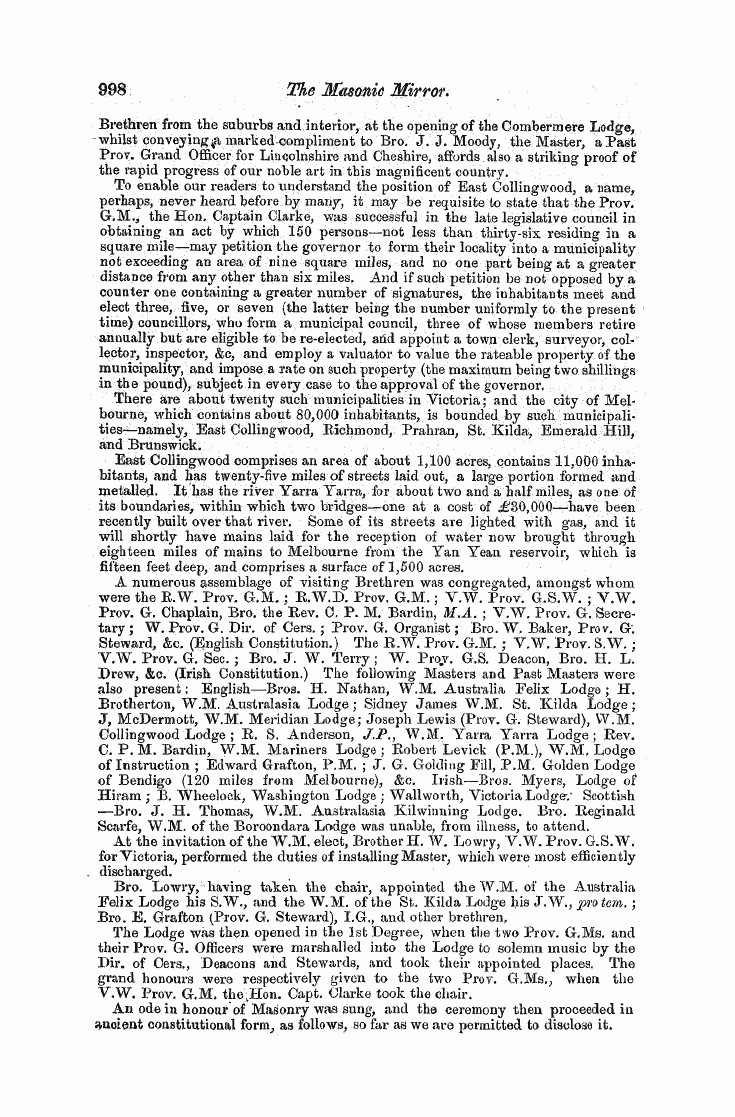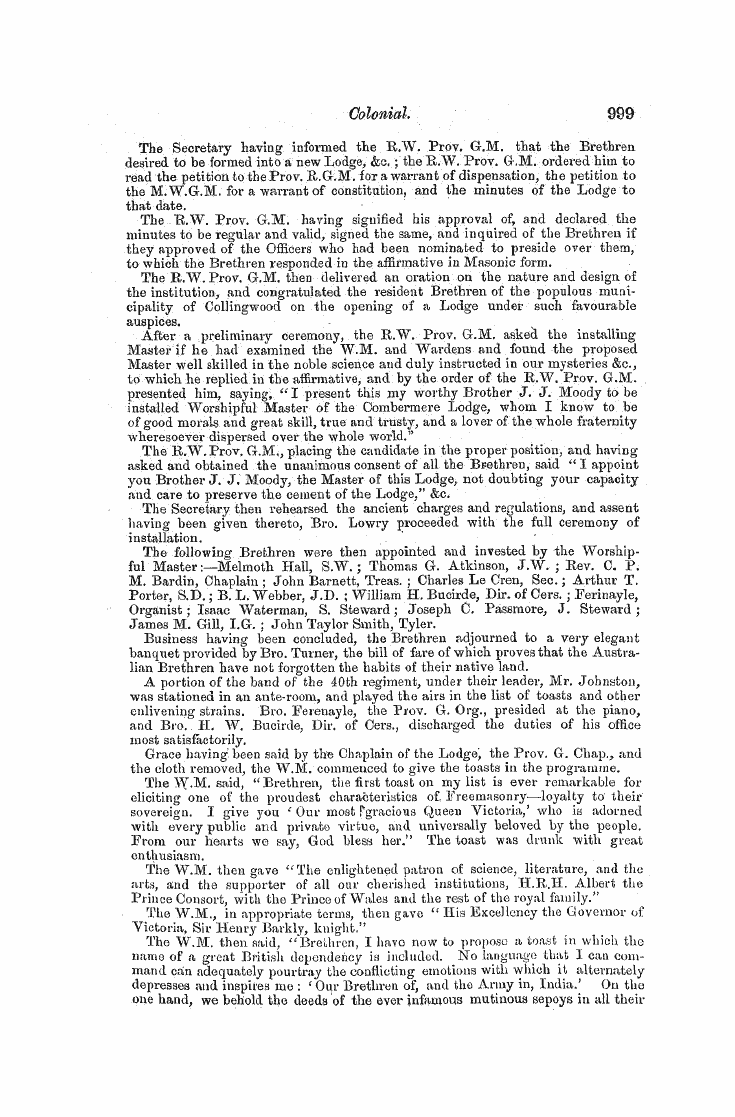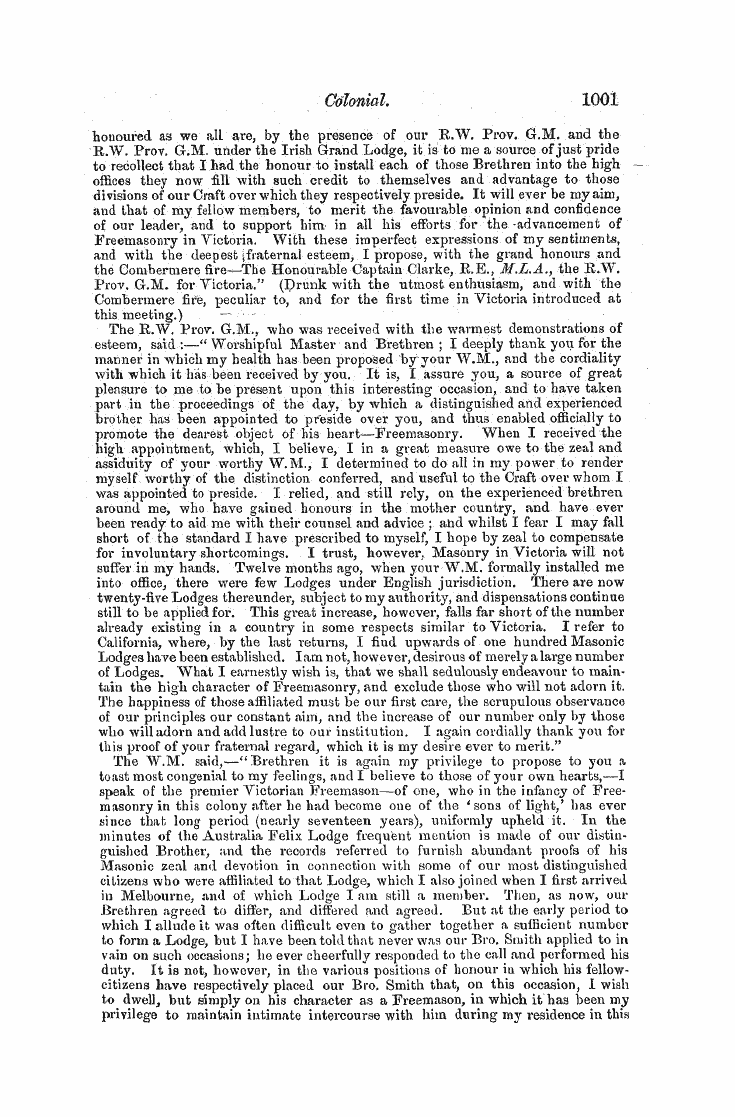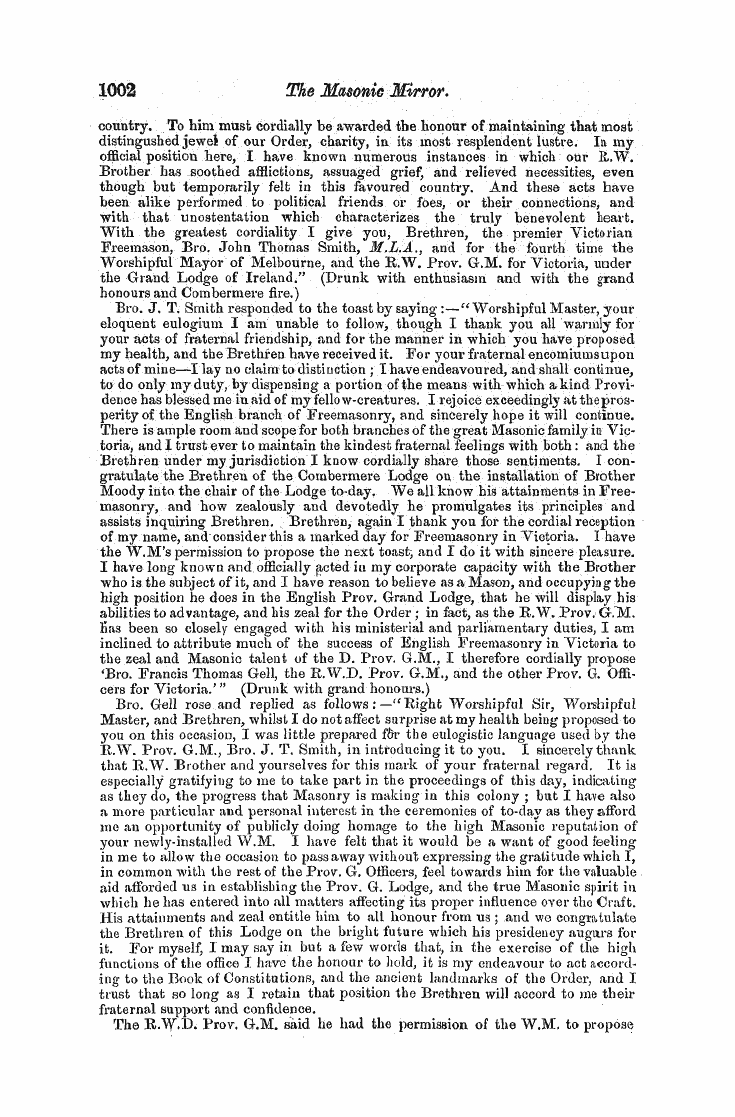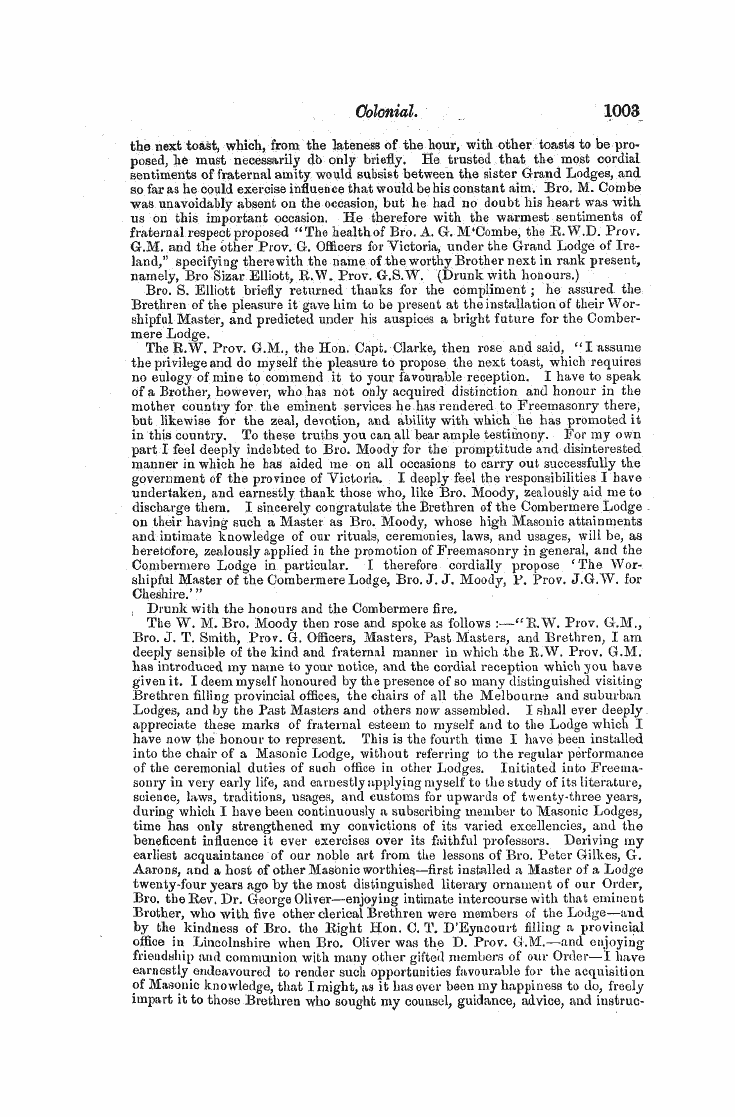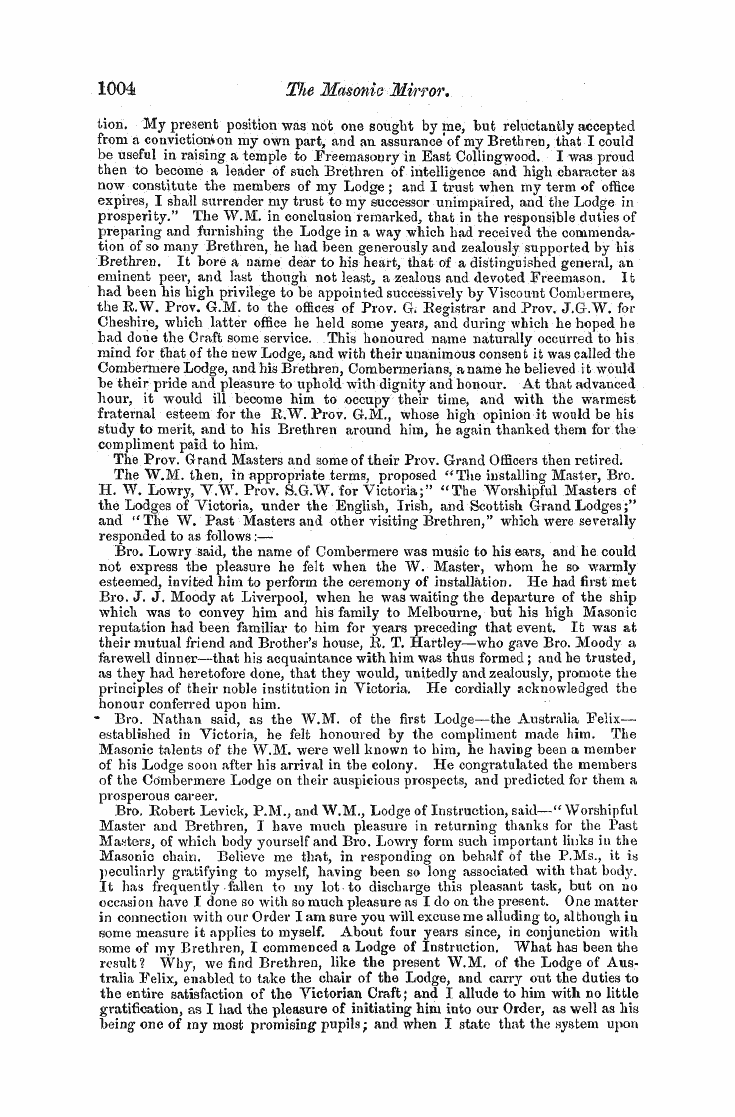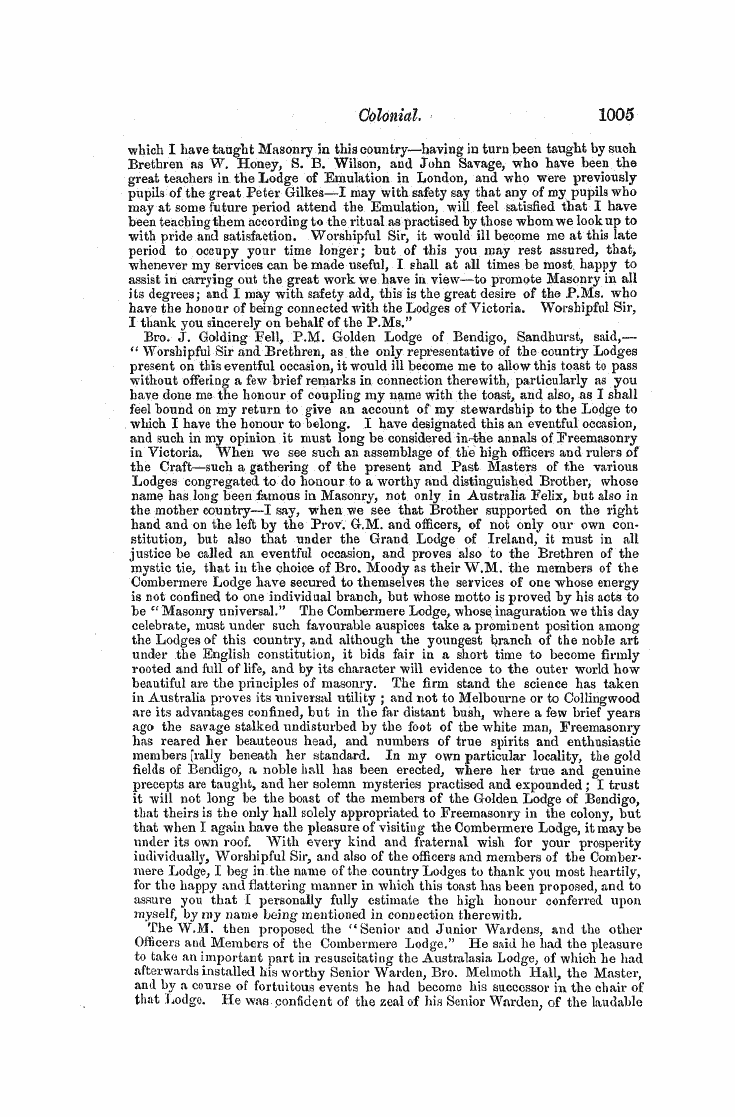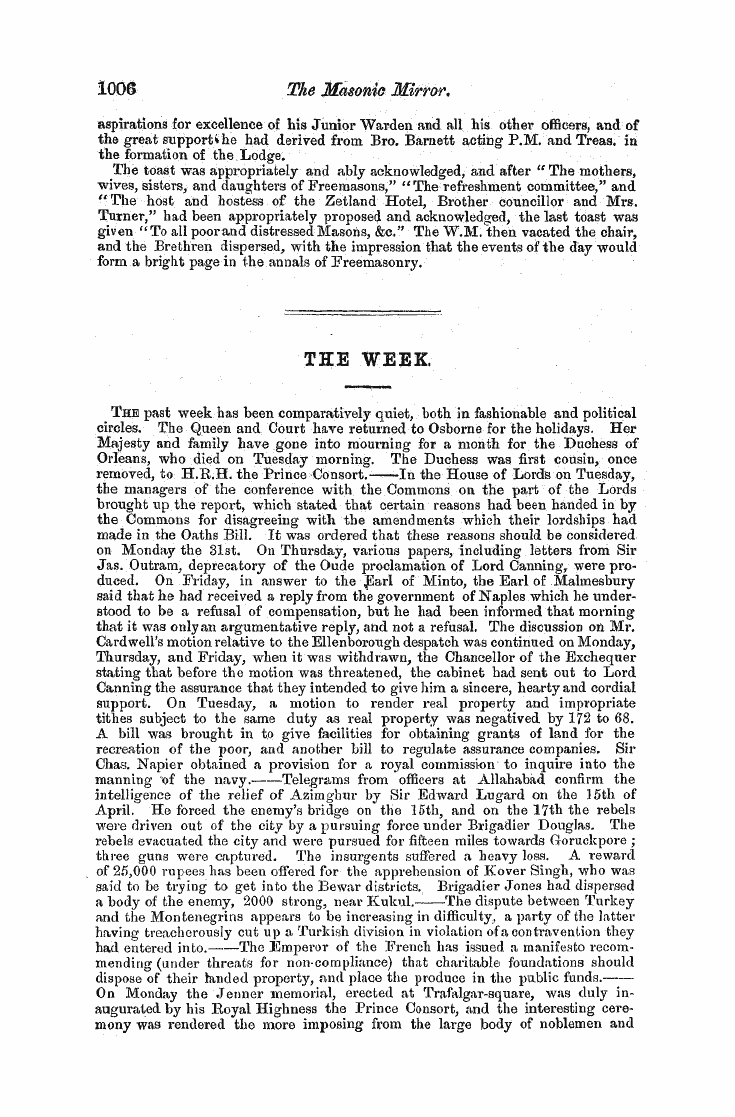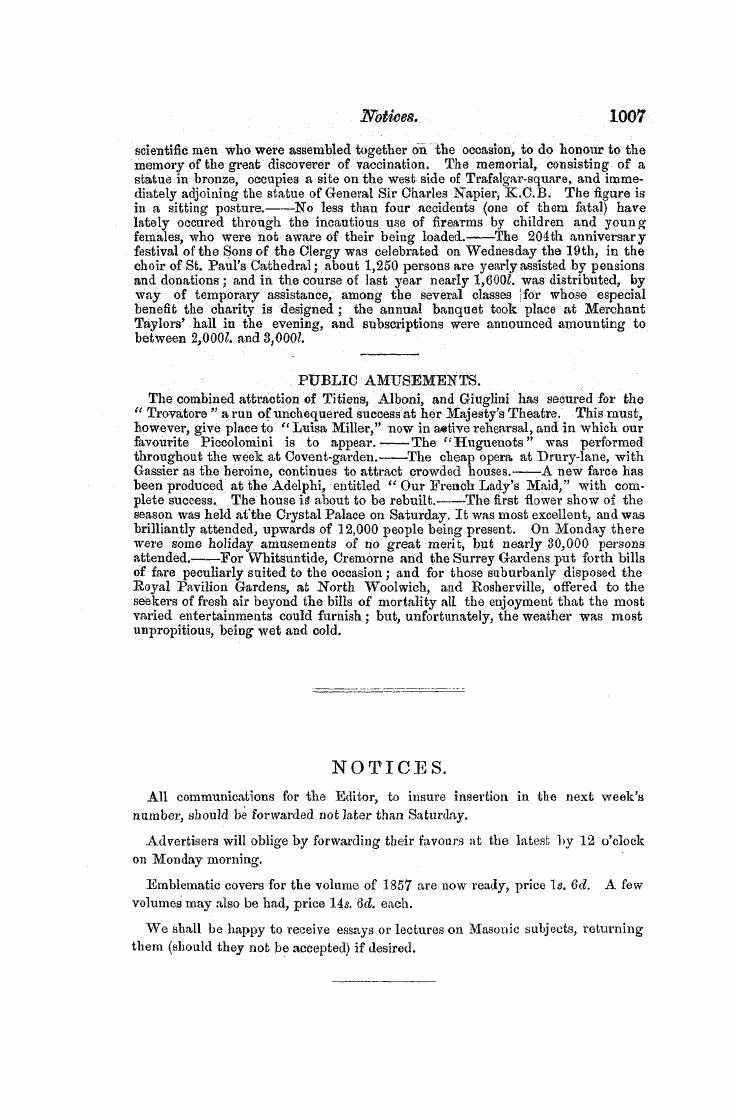-
Articles/Ads
Article FBEEMASONRY AND AECHITECTUEE. ← Page 2 of 3 →
Note: This text has been automatically extracted via Optical Character Recognition (OCR) software.
Fbeemasonry And Aechitectuee.
the power and capacity of dealing with this branch of our duties , which hitherto has been too superficially treated by the Order , and
without that success which has attended the labours of Masons m philosophy , ethics , symbology , and architectural history . It is a subject so thoroughly within the compass of Masonry , so definitely recognized , and which from time to time has in individual Lodges been so successfully treated , that there is the greater encouragement
fonts study . Oar Lodges undoubtedly form the great schools of ethics and social duties , as apart from theological training ; and their influence
on the national character has been marked , as too its influence on individual members , by inducing a cultivation of the higher p hilosophical studies . When we consider in what way the highest branches of philosophy have been prosecuted by distinguished Masoiis , we feel convinced that the benefits to architecture must be great from its cultivat ; ion by our Brethren . Architecture has ,, it may
be urged , one aspect in wnicn we can regard it with connctence . Its technical details can receive but little of our attention , and we have no time or disposition to pick up mere terms , and encourage a shallow and superficial treatment of it ; but as an art , it has the highest intellectual associations , and admits the most refined philosophical treatment , so as to invite the man of liberal and cultivated mind .
Hence architectural criticism is so popular out of doors ; hence architectural works find thousands of readers , and architectural lecturers hundreds of hearers ; they speak with eloquence and are heard with enthusiasm . If this is so out of doors , surely we who are bounden votaries of the art can find audiences meet as well as
lecturers ; we , who have a special call , can as successfully promote the progress of architecture , as those \ vho stand without . This , too , would not be without its effect in adding to the reputation and public influence of the Craft , and in enlisting many valuable members . What we propose to do for the purpose of forwarding the movement , is to devote in each number a portion of our space to architecture , in which we shall give an article on architecture and some
architectural intelligence , and in time a series of illustrations and engravings . Thus we shall introduce a new and useful feature , which will , we hope , prove an additional attraction to the Magazine , and in which we trust to receive the co-operation of our readers . We shall with great pleasure accept communications on architectural
subjects , and particularly any intelligence as to the progress of biddings in London and the provinces . We cannot , without injustice to Craft interests , give much space to this branch , and w e can engage in no rivalry with the architectural press ; but w e hope to do some good , and especially to the special architectural press , by extending its influence to a very influential section of the public . Tho architect and builder will know that by this co-operation he is promoting the progress of his art and gaining for himself a greater amount of consideration ; for nowhere can he agitate for support with
Note: This text has been automatically extracted via Optical Character Recognition (OCR) software.
Fbeemasonry And Aechitectuee.
the power and capacity of dealing with this branch of our duties , which hitherto has been too superficially treated by the Order , and
without that success which has attended the labours of Masons m philosophy , ethics , symbology , and architectural history . It is a subject so thoroughly within the compass of Masonry , so definitely recognized , and which from time to time has in individual Lodges been so successfully treated , that there is the greater encouragement
fonts study . Oar Lodges undoubtedly form the great schools of ethics and social duties , as apart from theological training ; and their influence
on the national character has been marked , as too its influence on individual members , by inducing a cultivation of the higher p hilosophical studies . When we consider in what way the highest branches of philosophy have been prosecuted by distinguished Masoiis , we feel convinced that the benefits to architecture must be great from its cultivat ; ion by our Brethren . Architecture has ,, it may
be urged , one aspect in wnicn we can regard it with connctence . Its technical details can receive but little of our attention , and we have no time or disposition to pick up mere terms , and encourage a shallow and superficial treatment of it ; but as an art , it has the highest intellectual associations , and admits the most refined philosophical treatment , so as to invite the man of liberal and cultivated mind .
Hence architectural criticism is so popular out of doors ; hence architectural works find thousands of readers , and architectural lecturers hundreds of hearers ; they speak with eloquence and are heard with enthusiasm . If this is so out of doors , surely we who are bounden votaries of the art can find audiences meet as well as
lecturers ; we , who have a special call , can as successfully promote the progress of architecture , as those \ vho stand without . This , too , would not be without its effect in adding to the reputation and public influence of the Craft , and in enlisting many valuable members . What we propose to do for the purpose of forwarding the movement , is to devote in each number a portion of our space to architecture , in which we shall give an article on architecture and some
architectural intelligence , and in time a series of illustrations and engravings . Thus we shall introduce a new and useful feature , which will , we hope , prove an additional attraction to the Magazine , and in which we trust to receive the co-operation of our readers . We shall with great pleasure accept communications on architectural
subjects , and particularly any intelligence as to the progress of biddings in London and the provinces . We cannot , without injustice to Craft interests , give much space to this branch , and w e can engage in no rivalry with the architectural press ; but w e hope to do some good , and especially to the special architectural press , by extending its influence to a very influential section of the public . Tho architect and builder will know that by this co-operation he is promoting the progress of his art and gaining for himself a greater amount of consideration ; for nowhere can he agitate for support with

